






























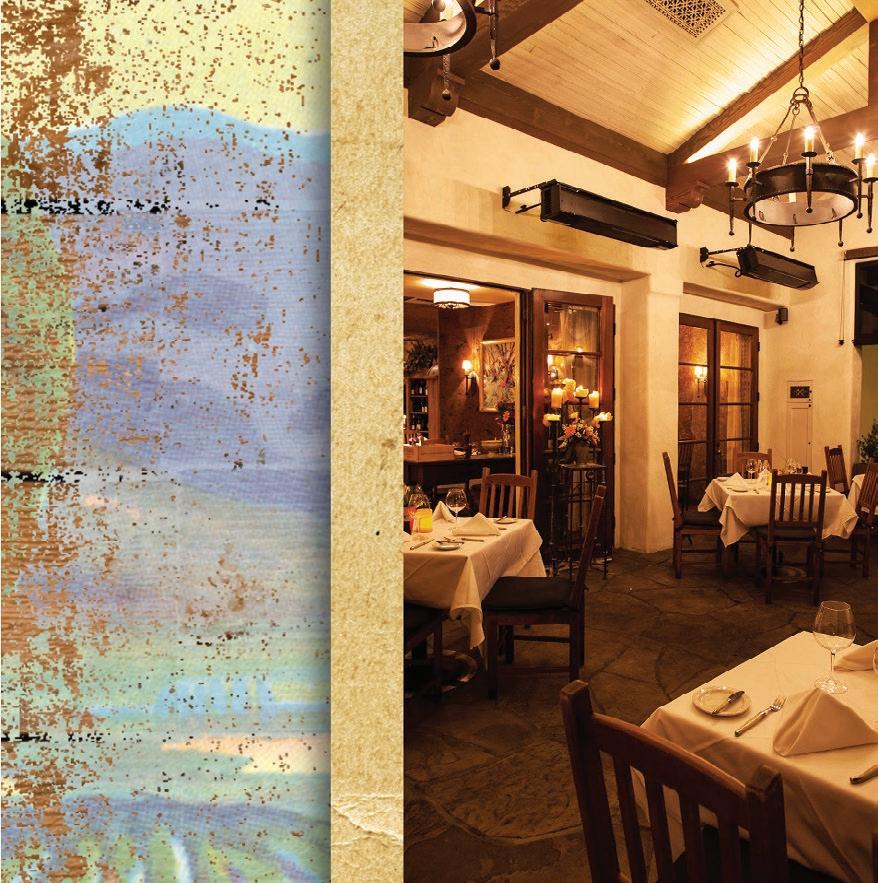
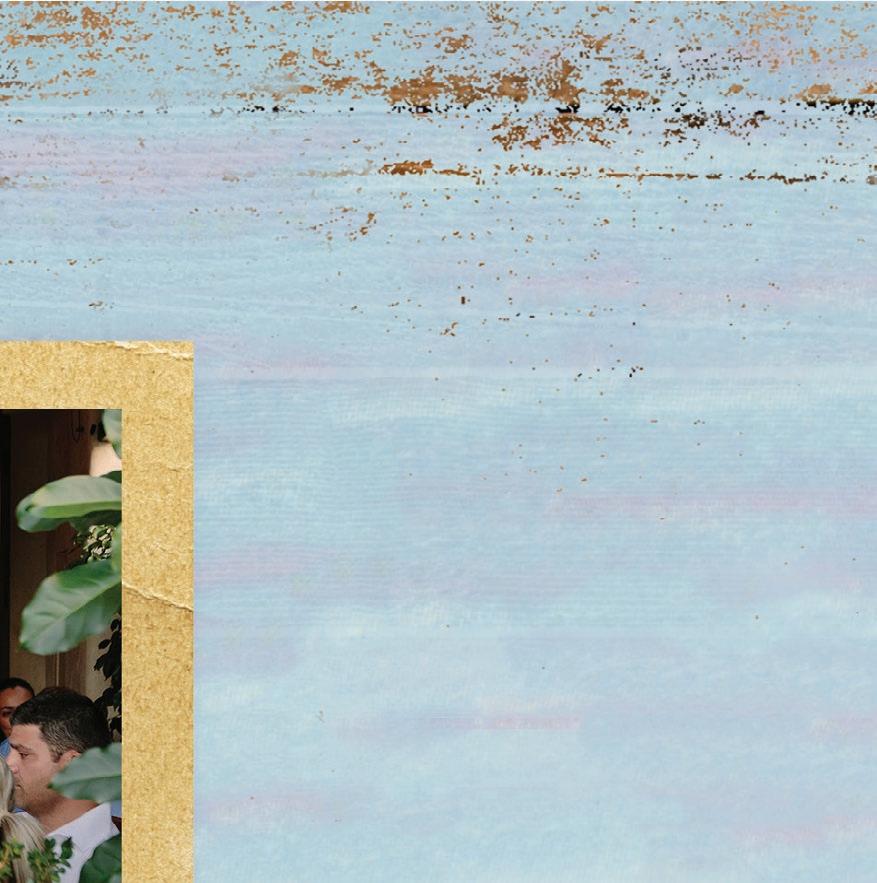
Fresh, local ingredients, prepared with care. Excellent wines that reflect the quality and character of our region and work in concert with the cuisine. Warm, inviting ambience with engaging service at a relaxed, leisurely pace. is is bouchon. dinner nightly Sunday- ursday 5-9pm | Friday-Saturday 5-10pm

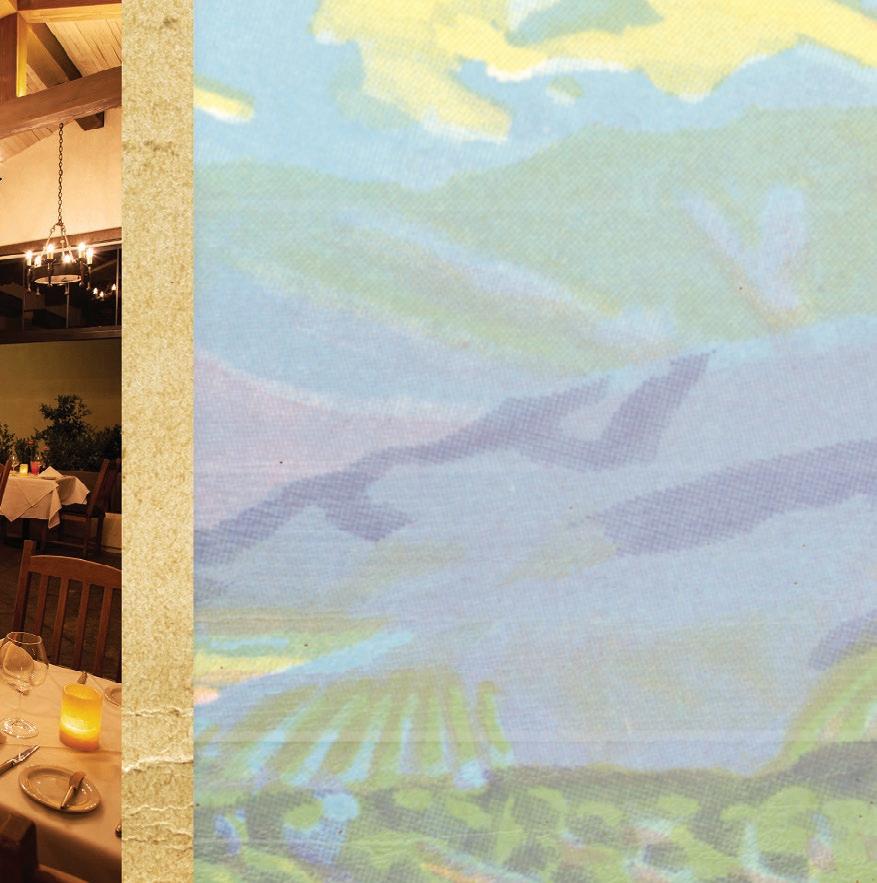





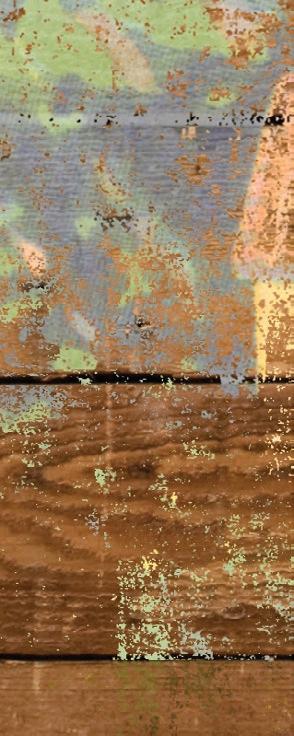
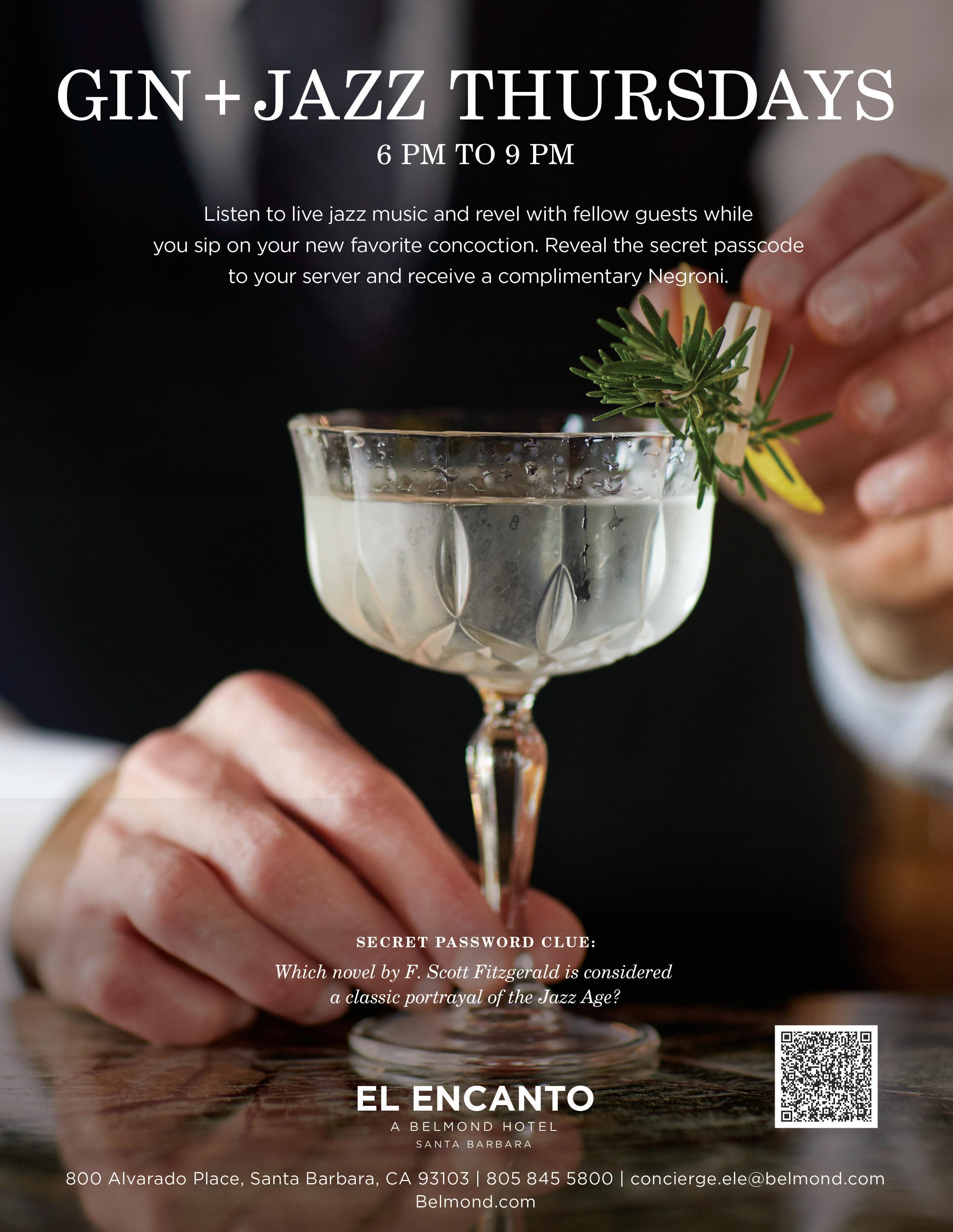

This spring, our theme of Imagination in Action is in full swing with visionary artists, trailblazing thinkers, and compelling performances.
Former Secretary of Transportation Pete Buttigieg (Apr 22) offers insights on leadership, transformation, and the road ahead.
World-class dance continues with a West Coast exclusive from London’s Akram Khan (Apr 10), featuring live music and a rare appearance by the choreographer, plus two electrifying nights of Alvin Ailey American Dance Theater (Apr 15 & 16).
Experience the return of beloved cultural ambassadors: Yo-Yo Ma (Apr 5) brings a profoundly personal evening, while Wynton Marsalis and his ensemble offer a stunning live performance set to the silent film LOUIS (May 17).
Southern rock powerhouse Larkin Poe (Apr 27) brings electrifying energy and blues-infused sound for a night of raw, soulful music.
Justice for All brings newly added events like astronaut José Hernández (Apr 29) on his inspiring journey from migrant farmworker to space explorer.
Art lovers, mark your calendars! The return of Art | Architecture on Film (Apr 26 & 27) includes a free screening and panel with Oscar- and Grammy-winning director Morgan Neville, part of our Thematic Learning Initiative. Performance artist Marina Abramović (May 6) joins Pico Iyer for a rare conversation. And check out our creative take on this spring’s TLI book giveaway.
Spark your curiosity – on the pages to come and at the theater.

With deepest gratitude,

Celesta M. Billeci
Miller McCune Executive Director
65th Anniversary Season Sponsor
Community Partners
Illuminating a wide spectrum of systemic injustice, the Justice for All programming initiative looks to today’s great minds and creators and to the courageous leaders across the globe who are forging a new path forward. Join us as we learn from those confronting uncomfortable questions, solving difficult problems, and guiding us all toward a more equitable world.
José Hernández, Apr 29

From migrant farmworker to NASA astronaut

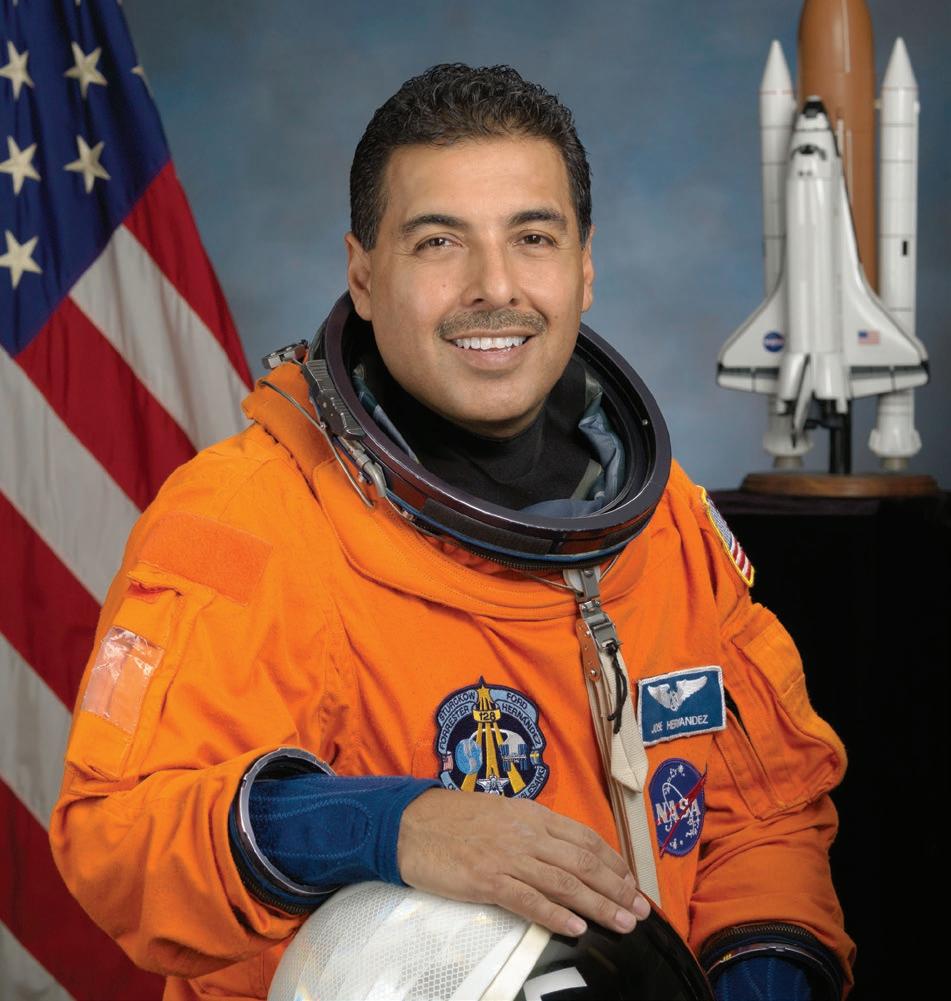

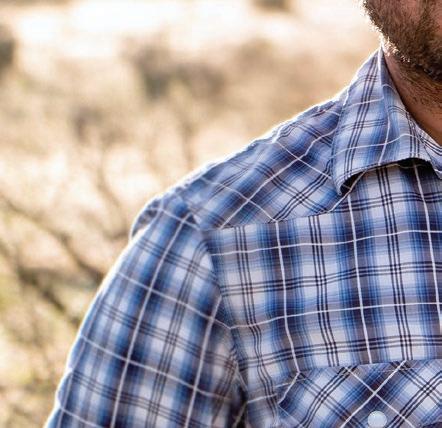
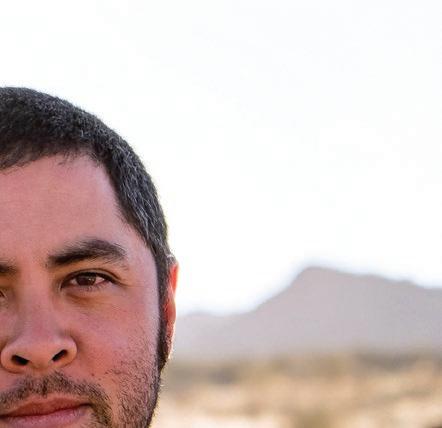

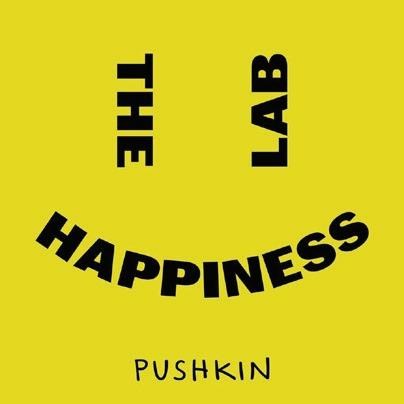

Laurie Santos, May 7 Tools for coping during times of crisis

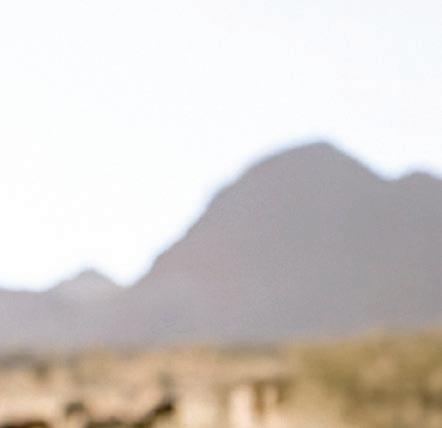


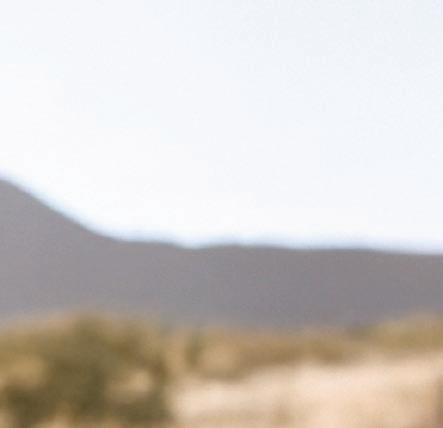



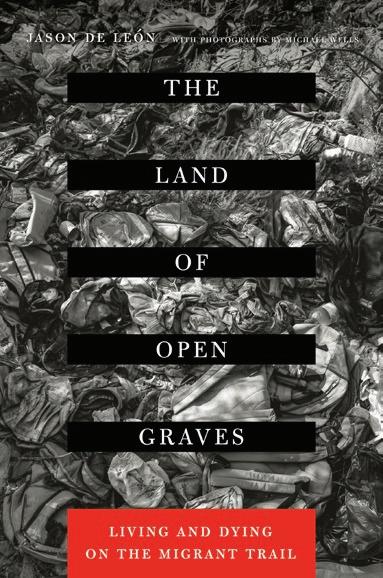
Jason De León, May 15
Survival and hope at the U.S.-Mexico border

JUSTICE FOR ALL Lead Sponsors: Marcy Carsey, Connie Frank & Evan Thompson, Eva & Yoel Haller, Dick Wolf, and Zegar Family Foundation
JUSTICE FOR ALL UCSB Faculty Advisory Committee: Daina Ramey Berry, Dolores Inés Casillas, Charles Hale, Beth Pruitt, Susannah Scott, Je rey Stewart, Sharon Tettegah


Arts & Lectures’ Thematic Learning Initiative (TLI) extends the conversation from the stage into the community, enriching lifelong learning and initiating dialogue and empowerment through special events book giveaways and more.
For 65 years, Arts & Lectures has been a hotbed of art and ideas – a place where great minds and movers from across the globe converge. They leave us changed, challenged and ready to bust through our perceived limitations. Come behind the scenes, go beyond the barriers and discover the creative forces drawing outside the lines to redefine what we think is possible.
The Marina Abramović Method
Instruction Cards to Reboot Your Life

Taking some artistic license, our spring book giveaway is a unique set of 30 instruction cards by Marina Abramović that teach you the iconic performance artist’s method for reaching a higher consciousness and confronting life’s challenges. Featuring exercises Abramović herself developed, the method will help you focus, reconnect with the present and locate your highest creative potential.
FREE decks of cards will be available starting Monday, March 31 at Arts & Lectures’ Campbell Hall Box Office at UCSB and the Lobero Theatre Box Office (33 E. Canon Perdido St.) during business hours. Limit one per household; available while supplies last.
RELATED EVENT Marina Abramović in Conversation with Pico Iyer, May 6 (p. 45)

With thanks to our visionary partners, Lynda Weinman and Bruce Heavin, for their support of the Thematic Learning Initiative

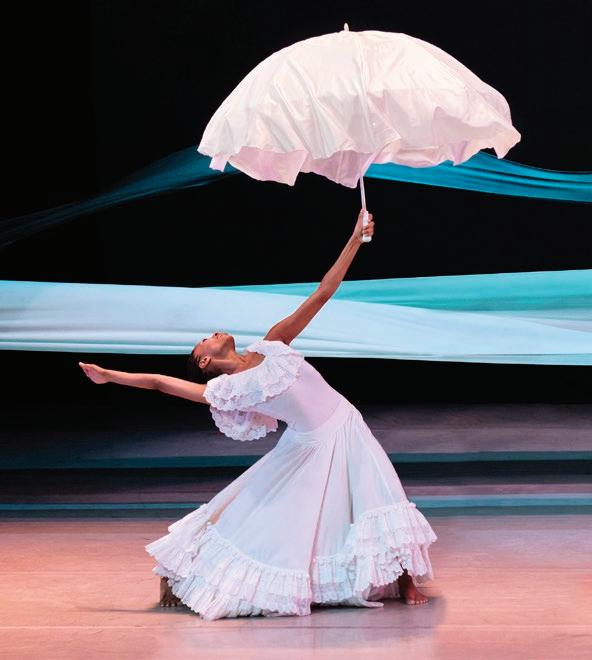
Community Dance Class: Alvin Ailey’s Revelations
Tue, Apr 15 / 11:15 AM -12:30 PM
Carrillo Ballroom, 100 E. Carrillo St. FREE (registration recommended)
Join UCSB Arts & Lectures for a community dance class focused on Alvin Ailey’s signature work, Revelations. Taught by members of Alvin Ailey American Dance Theater, participants will reminisce on their own life experiences to create dance. All ages and levels welcome.
RELATED EVENT Alvin Ailey American Dance Theater, Apr 15 & 16 (pp. 26-29)
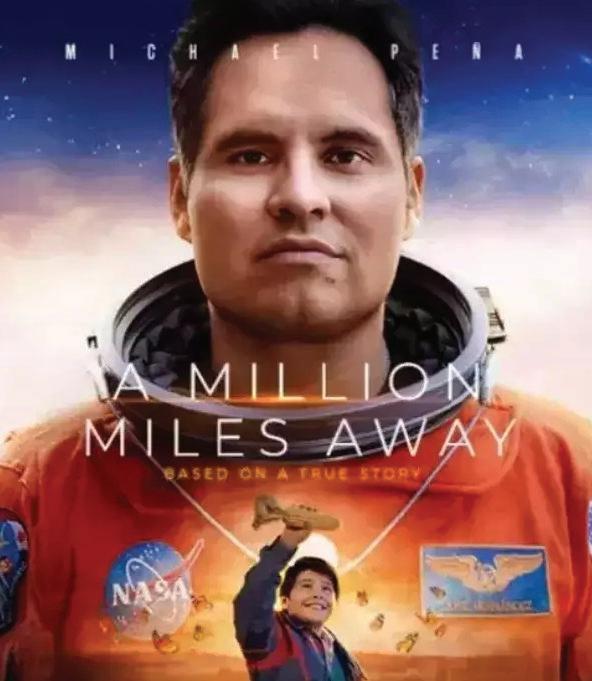
A Million Miles Away Film Screening
Wed, Apr 23 / 7 PM / Campbell Hall
FREE (registration recommended)
Inspired by the real-life story of NASA flight engineer and UCSB alum José Hernández, A Million Miles Away follows his decades-long journey from a rural village in Michoacán, Mexico, to more than 200 miles above the Earth in the International Space Station. (Alejandra Márquez Abella, 2023, PG, 121 min.)
RELATED EVENT José Hernández, Apr 29 (p. 44)

The House / This is Not a House Double Feature and Panel Discussion
Sat, Apr 26 / 5:30 PM / Paseo Nuevo Cinema, Theater #3
FREE (registration required; limited availability)
A widely-studied house of ideas meets a home born of the combined power of art, technology and play in two films featuring renowned Montecito residences. This Is Not a House screening will be followed by a panel discussion with filmmaker Morgan Neville, homeowner Bruce Heavin and architect Robin Donaldson, moderated by UCSB AD&A Museum curator Silvia Perea. (Gregg Goggin, 2024, 46 min. & Morgan Neville, 2023, 30 min.)
RELATED EVENT Art | Architecture on Film, Apr 26 & 27 (p. 63)
Launched in 2021 by a leadership gift from Jody & John Arnhold, the Arnhold Education Initiative has enabled Arts & Lectures to deepen its signature cross-campus collaborations by connecting world-class artists and thinkers with thousands of UCSB students in the classroom each year.
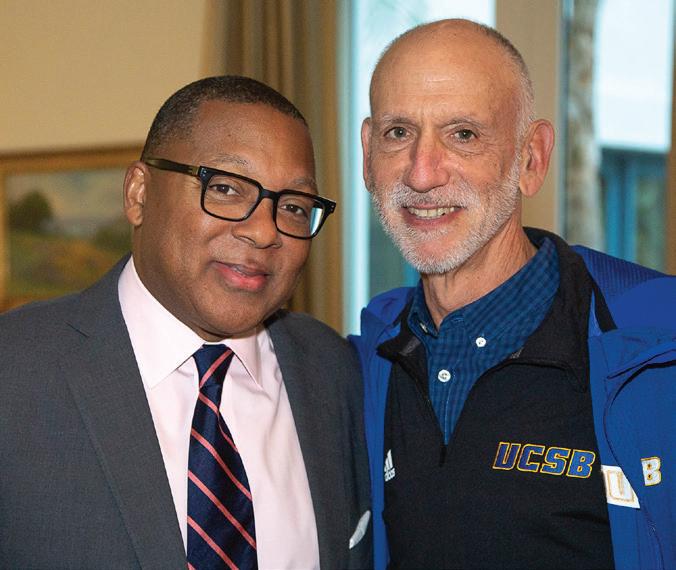
“The arts stimulate the imagination, so exposing students to those at the top of their craft will enhance the educational experience at UCSB. Students will think bigger, dream bigger, create bigger, and succeed bigger.” – John Arnhold
Launched in 2021 by a leadership gift from Jody & John Arnhold, Initiative Arts & Lectures to its cross-campus by world-class with thousands UCSB students the each year. arts the exposing those the of craft UCSB. will bigger, create bigger, and succeed bigger.” John




The Arnholds’ commitment to arts education extends far beyond A&L. Scan to learn more about Jody’s passion for dance education and how the Arnholds elevate the cultural landscape in their hometown of New York City.
The Arnholds’ commitment to arts education extends far beyond A&L. Scan to learn more about Jody’s passion for dance education and how the Arnholds elevate the cultural landscape in their hometown of New York City.
(805) 893-3535
www.ArtsAndLectures.UCSB.edu
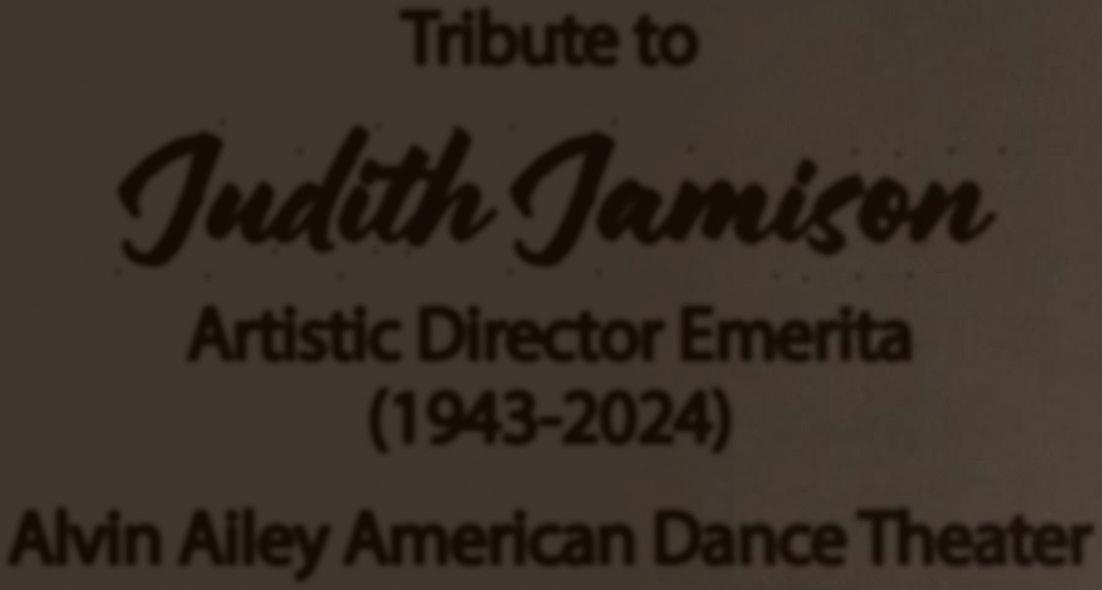

Judith Jamison joined Alvin Ailey American Dance Theater in 1965 and quickly became an international star. Over the next 15 years, Alvin Ailey created some of his most enduring roles for her, most notably the tour-de-force solo Cry. During the 1970s and ‘80s, she appeared as a guest artist with ballet companies all over the world, starred in the hit Broadway musical Sophisticated Ladies and formed her own company, The Jamison Project. She returned to Alvin Ailey American Dance Theater in 1989 when Ailey asked her to succeed him as artistic director. In the 21 years that followed, she brought the Company to unprecedented heights, including two historic engagements in South Africa and a 50-city global tour to celebrate the Company’s 50th anniversary. Jamison was the recipient of numerous awards and honors,
among them a Primetime Emmy Award, an American Choreography Award, a Kennedy Center Honor, a National Medal of Arts, a Bessie Award, the Phoenix Award and the Handel Medallion. She was also listed in TIME 100: The World’s Most Influential People in 2009 and honored by First Lady Michelle Obama at the first White House Dance Series event in 2010. In 2015, she became the 50th inductee into the Hall of Fame at the National Museum of Dance.
As a highly regarded choreographer, Jamison created many celebrated works, including Divining (1984), Forgotten Time (1989), Hymn (1993), HERE...NOW. (commissioned for the 2002 Cultural Olympiad), Love Stories (2004, with additional choreography by Robert Battle and Rennie Harris) and Among
Us (Private Spaces: Public Places) (2009). Her autobiography, Dancing Spirit, was edited by Jacqueline Kennedy Onassis and published in 1993. In 2004, under Jamison’s artistic directorship, her idea of a permanent home for AILEY was realized and named after beloved Chairman Emerita Joan Weill. Following her retirement from the helm of the Company in 2011, Jamison continued to dedicate herself to asserting the prominence of the arts in our culture, and she remained committed to promoting the significance of the Ailey legacy — using dance as a medium for honoring the past, celebrating the present and fearlessly reaching into the future. Her death on November 9, 2024 prompted an outpouring of love and admiration around the world from those who were touched by her magnificent artistry and extraordinary spirit.

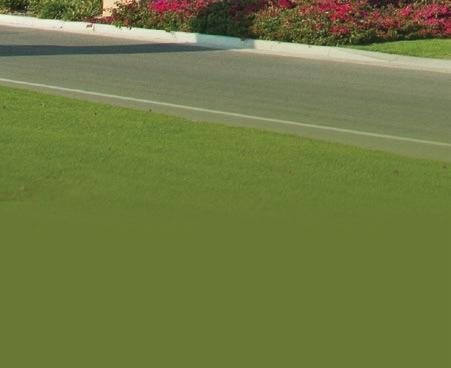






Peter Brooke Turner, soprano ukulele
Guy Bellingham, soprano ukulele
Ben Rouse, tenor ukulele
Guy Hargreaves, soprano/concert ukulele
Leisa Rea, soprano/concert ukulele
Laura Currie, tenor ukulele
Laurie Higgins, bass ukulele
Musical Director: George Hinchliffe
Creative Producer: Leisa Rea
Tour Management: Viola Farrington
Sound: Verena Rogler
Tue, Apr 1 / 8 PM / Campbell Hall
Program will be announced from the stage
Running time: approx. 120 minutes, including intermission
Formed in 1985 as the antidote to mindless pop, egocentric rock and the indulgent bluster of the music business, the Ukulele Orchestra of Great Britain donned black tuxedos and began giving “concerts” in tiny rooms above old pubs.
Four decades (and 400,000,000 plucks) later, they’re still thrilling audiences with their off-beat humor and four-stringed virtuosity from Tasmania to the Arctic Circle and from Windsor Castle to Carnegie Hall.
There are no drums, pianos, backing tracks, guitars or banjos, no pitch shifters or electronic trickery – just an astonishing revelation of the rich palette of orchestration afforded by ukuleles and a menagerie of voices in a collision of post-punk performance and old classics.
Celebrate the 40th anniversary of this much-loved institution on a white-knuckle, shopping-trolley dash through every kind of musical genre – from ABBA to ZZ Top, Tchaikovsky to Nirvana and Bluegrass to Broadway, all played on the “bonsai guitar.”
Peter Brooke Turner, born in Portugal and growing up in the Soviet Union, Brazil, America, Finland, Italy and Britain, dominates the skyline at over two meters tall. After false starts on the violin, trumpet and guitar, he turned to the ukulele and joined the Orchestra. Turner has worked with many showbiz greats, even lending his uke to Tiny Tim. Away from the tuxedo, he has an alter ego, Tony Penultimate, whose musical shenanigans and albums have a website all of their own.
Guy Bellingham is a multi-skilled performer and veteran of the circus and cabaret scene. He trained at Circomedia in juggling, clowning and physical comedy and has performed internationally on stage, on television and in variety shows for 25 years. He was a founding member of legendary comedy jazz band The Hot Potato Syncopators. Bellingham is also a multi-award-winning tintype photographer and musical saw virtuoso.
Ben Rouse is a multi-instrumentalist who plays guitar, mandolin, violin, saxophone, flute, trumpet, banjo and ukulele. His background as an all-rounder led him to form the rock band Purple Monkey and the folk duo Teapot Junkies. Rouse has also released several albums of his own original music. Born in Cornwall, he now lives near Chichester, where he enjoys sailing, electronics and astronomy. But not all at once.
Guy Hargreaves is a seasoned performer and theater maker from Lancashire with a background in acting, dance, clown, puppetry and music. He has directed shows for The National Youth Theatre and made short films about friendly ghosts for his local Carnegie library. He’s appeared in iconic British television programs such as Coronation Street and East Enders, in addition to penning his own solo show about letter writing, ballet dancing and growing up. Hargreaves is a keen artist and hill climber. Sometimes, he combines the two.
Leisa Rea has a rich background in performing, directing and writing for stage, television and radio, working with several established names including BBC’s Miranda Hart, Channel 4’s Jack Rooke and Live at the Apollo comic Jen Brister. She’s produced her own solo shows and written many original songs for Adams & Rea, with whom she won the Musical Comedy Awards in 2009. Rea has Irish-Italian heritage, plays uke, guitar and percussion and lives in London.
Laura Currie was born in Dumfries, Scotland and joined the Orchestra shortly after graduating from Edinburgh University in English Literature. She started playing the ukulele at the age of 15 after seeing the Ukes in concert and, feeling inspired, fronted her first rock band a year later. Away from the Orchestra, Currie performs under the stage name Ra, writing and releasing her own original material. She has garnered an active online following for her eclectic mix of self-produced YouTube videos. She also plays piano, bass and guitar.
Laurie Higgins is a professional bass player from Dorset with many years of experience playing and recording with a huge variety of artists including Robbie McIntosh, Mutter Slater and Steve Jones. Having studied jazz and composition, he is involved in writing and arranging music as well as music education. Higgins has provided his signature sound on tour with the Orchestra in the U.K., Germany, Austria, Sweden and now, the U.S.

Sat, Apr 5 / 7 PM / Arlington Theatre
Great Performances Suite
G.A. Fowler Family Foundation
The Shanbrom Family Foundation
This special performance from Yo-Yo Ma pairs repertoire from the center of his musical firmament with reflections on how it has shaped his thinking about art, human nature, and our search for meaning.
“I believe that art, music, and the humanities help us fulfill unwritten contracts. They help us sympathize with the human condition and examine how we relate to one other. They help us receive the wisdom of the past, they help us understand today’s problems, and they empower us to imagine a better world.” –Yo-Yo Ma
Yo-Yo Ma’s multifaceted career is a testament to his belief in culture’s power to generate trust and understanding. Whether performing new or familiar works for cello, bringing communities together to explore culture’s role in society or engaging unexpected musical forms, he strives to foster connections that stimulate the imagination and reinforce our humanity.
Most recently, Yo-Yo Ma began Our Common Nature, a cultural journey to celebrate the ways that nature can reunite us in pursuit of a shared future. Our Common Nature follows the Bach Project, a 36-community, six-continent tour of J.S. Bach’s cello suites paired with local cultural programming. Both endeavors reflect his lifelong commitment to stretching the boundaries of genre and tradition to understand how music helps us to imagine and build a stronger society.
Yo-Yo Ma was born in 1955 to Chinese parents living in Paris. He began to study the cello with his father at age four. When he was seven, he moved with his family to New York City, where he continued his cello studies before pursuing a liberal arts education.
Yo-Yo Ma has recorded more than 120 albums, is the winner of 19 Grammy awards, and has performed for nine American presidents, most recently on the occasion of President Biden’s inauguration. He has received numerous awards, including the National Medal of the Arts, the Presidential Medal of Freedom and the Birgit Nilsson Prize.
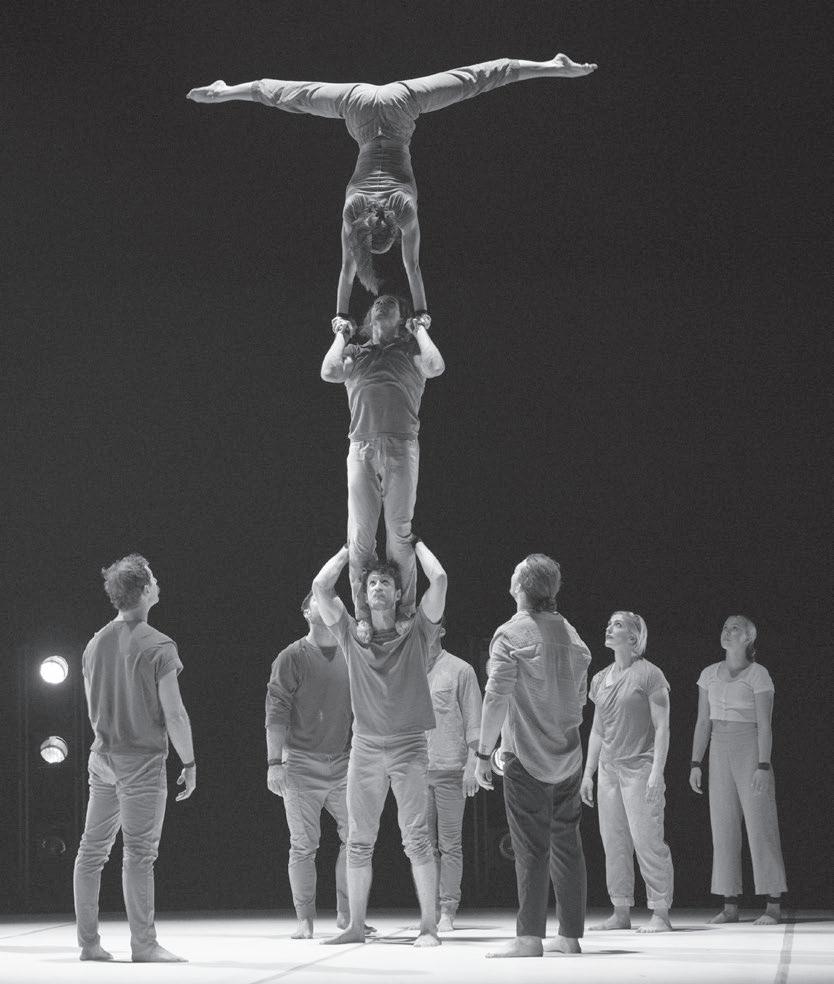
Created by Yaron Lifschitz and the Circa Ensemble
Tue, Apr 8 / 7:30 PM / Lobero Theatre
Running time: approx. 70 minutes, no intermission
Director: Yaron Lifschitz
Original Music: Ori Lichtik
Lighting Designer: Paul Jackson
Costume Designer: Libby McDonnell
Technical Director: Jason Organ
Performers:
Arabella Coghlan, Asha Colless, Maya Davies, Malte Gerhardt, Anisa Monsour, Oscar Morris, Kimberley Rossi, Tristan St John, Zachery Stephens, Lachlan Sukroo, Darby Sullivan
International representation: Allen Moon / David Lieberman
Artists’ Representatives
A symphony of acrobatics, sound and light – this is next level circus by Circa. Ten bodies appear in a flash of light. They move in harmony for a fleeting moment and then descend into a sinuous trance. Towers grow and decay, bodies leap and are caught as physical limits are pushed to their extremes. Can we ever find a perfect balance or is adapting to constant change the only way forward?
This next chapter of Circa’s internationally acclaimed Humans is a tightly woven choreography of bodies, pulsing with music by composer Ori Lichtik and revealed in Paul Jackson’s dramatic lighting. Created by circus visionary Yaron Lifschitz, Humans 2.0 is intimate, primal and deeply engaged with the challenge of being human.
Circa: circus that moves the world.
Circa is one of the world’s great performing arts companies. Since 2004, they have called Brisbane, Australia home while touring the world, captivating audiences in over 45 countries and reaching more than two million people. Their award-winning performances have earned standing ovations, rave reviews and sold-out shows across six continents.
Everything they do is fuelled by their core values: quality, audacity, humanity.
They are at the forefront of the new wave of contemporary Australian circus, redefining the art form by showcasing how extreme physicality can forge powerful and emotive experiences.
They are relentless in the way they push boundaries, blending movement, dance, theater and circus.
Under the visionary leadership of Yaron Lifschitz and in collaboration with their extraordinary ensemble of circus artists, they craft a diverse array of productions that constitute “a revolution in the spectacle of circus” (Les Echos).
Each year, they tour their shows across the world and premiere multiple new creations. They are a staple at prestigious festivals and venues in New York, London, Berlin and Montreal as well as throughout Queensland and across Australia.
Their extensive engagement programs including Circa Academy, Circability and Circa Cairns (a First Nations-led circus initiative) provide access, participation and professional development outcomes. They have delivered major projects including the Creative Lead on the Commonwealth Games Festival 2018 and managing Artour for the Queensland Government.
They invite you to join them as they continue to “redraw the limits to which circus can aspire” (The Age).
Discover more about Circa by subscribing to enews at circa.org.au and following the company on facebook. com/circacontemporarycircus, Instagram.com/ circapresents and via #circacircus
Yaron Lifschitz (Director) is a graduate of the University of New South Wales, University of Queensland and National Institute of Dramatic Arts (NIDA), where he was the youngest director ever accepted into its prestigious graduate director’s course. Since graduating, Lifschitz has directed more than 80 productions including large-scale events, opera, theater, physical theater and circus.
His work has received numerous awards including six Helpmann awards and the Australia Council Theatre Award. His productions have been presented at major festivals and venues around the world including Brooklyn Academy of Music, the Barbican Center, Les Nuits de Fourvière, Chamäleon and all the major Australian festivals. His film work was selected for the Berlin and Melbourne Film Festivals. He was founding
artistic director of the Australian Museum’s Theatre Unit, head tutor in directing at Australian Theatre for Young People and has been a regular guest tutor in directing at NIDA.
He is currently artistic director and CEO of Circa and was the creative director of Festival 2018, the arts and cultural program of the 21st Commonwealth Games.
Ori Lichtik (Original Music) is one of the founders of the Tel Aviv techno scene in the 1990s where he started his career as a DJ and producer of techno parties and raves. Since 2006, Lichtik has been collaborating with Sharon Eyal and Gai Behar as a musician in the artistic team. Rather than composing the soundtracks, Lichtik performs in L-E-V performances in which he constructs, plays and characterizes the music in each performance.
The uniqueness of Lichtik’s work is the combination of the various musical worlds into an evolving and refined soundtrack full of passion and groove which, alongside the choreography, gives the spectator a complete and hypnotic experience. Lichtik’s soundtracks are influenced by different styles and textures from industrial and African tribe recordings to hip-hop to Baroque music. His music is one of the most prominent and unusual hallmarks of Sharon Eyal and Gai Behar’s dance performances.
Over the years, Lichtik has created various works for L-E-V, dance companies and opera houses around the world. He has created alongside Sharon Eyal and Gai Behar throughout the choreographic process, reflecting off of the dancers’ movements and often inspiring and prompting them with the tone and pace of his percussive sounds and rhythms.
Paul Jackson (Lighting Design) is a multi-awardwinning lighting designer and theater maker whose work has featured across Australia, New Zealand, the United States, Asia, Europe and the United Kingdom. Jackson has designed lighting for The Australian Ballet, Royal New Zealand Ballet, West Australian Ballet, Berlin Staatsballett, Victorian Opera, West Australian Opera, Sydney Theatre Company, Melbourne Theatre Company, Gordon Frost Organization, TML, The Production Company, Bell Shakespeare, Playbox, Malthouse, Belvoir, Circa, Ballet Lab, Lucy Guerin, Chunky Move, World of Wearable Art New Zealand, KAGE, La Mama, Chamber Made Opera and many others.
Jackson was artistic associate at Malthouse Theatre from 2007 to 2013. He has received a Helpmann Award, two Sydney Theatre Awards, three Australian Production
Design Guild Awards, seven Green Room Awards and a Critics’ Award for Theatre in Scotland.
Libby McDonnell (Costume Design) is a designer and choreographer and currently head of engagement and design at Circa. McDonnell works in diverse genres and forms. At the heart of her work are people and movement.
McDonnell has a Bachelor of Fine Arts (Honours) in Visual Art from Queensland College of Art – Griffith University and an Associate Degree in Dance from Queensland University of Technology. Her professional career has included performing and making independent dance work, as an artistic director of Ballet Theatre of Queensland and choreographer for Blue Roo Theatre Company. For 11 years, McDonnell has worked with the team at Circa to imagine, develop and deliver their productions locally, nationally and internationally. During her time at Circa, she has designed costumes for more than 30 productions, co-directed three mainstage productions and led many of the company’s engagement projects including the pilot of the Circability program.
Jason Organ (Technical Direction) graduated from Queensland University of Technology in 1988 and has had an extensive career as a lighting designer, production manager, technician and rigger. He has worked with companies such as Queensland Ballet, Queensland Theatre, La Boite, Kooemba Jdarra and festivals such as Out of the Box, Queensland Music Festival and Brisbane Festival.
Organ was co-founder of JLX Productions, a Brisbane-based lighting design and technical consultancy. Between 2010 and 2022, Organ worked exclusively with Circa as technical director, delivering 20 new productions and touring 31 countries presenting Circa’s work. He is currently a production manager for Queensland Performing Arts Centre’s curatorial department.
Humans 2.0 is commissioned by The Mondavi Center, UC Davis.
Circa acknowledges the assistance of the Australian Government through Creative Australia, its principal arts investment and advisory body and the Queensland Government through Arts Queensland.
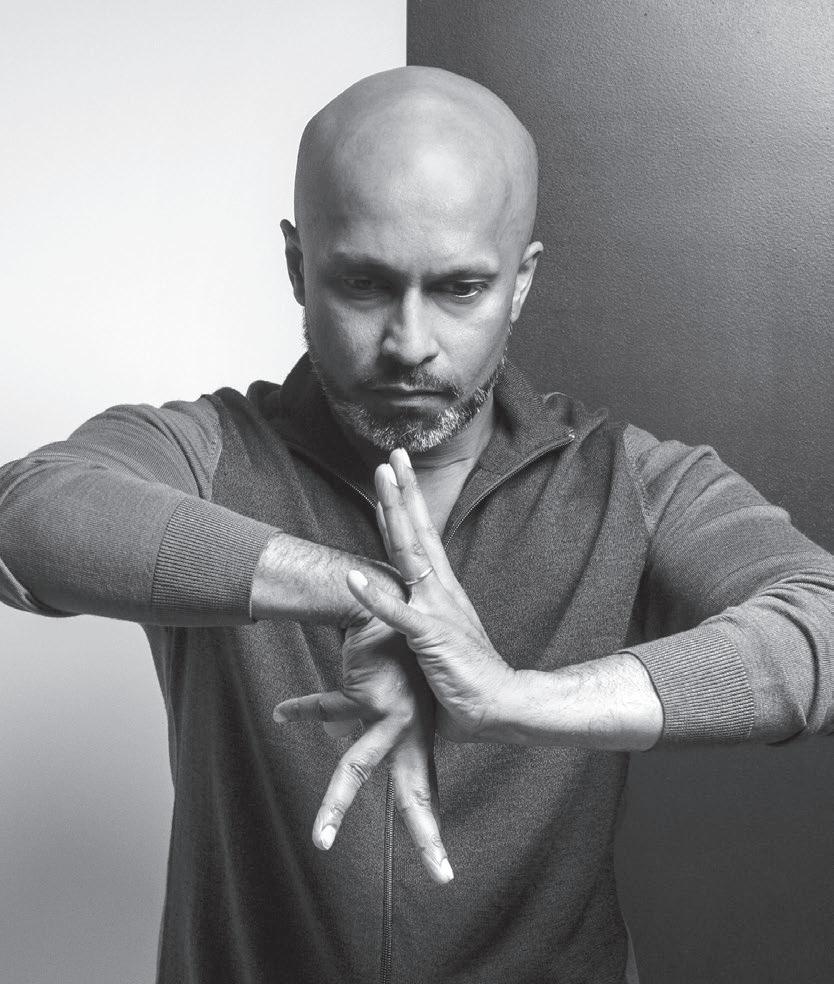
Director: Akram Khan
Light Designer: Zeynep Kepekli
Light Operator: Connor Sale
Music Orchestrator: Jyotsna Prakash
Sound Designer: Dave Price
Sound Engineer: Mark Webber
Rehearsal Director: Nicky Henshall
Technical Director: Michael Cunningham
Stage Manager: Marek Pomocki
Costumes Designer: Peggy Housset
Producer: Vony Sarfati
Communication Manager: Isabelle Deville
Dancers
Akram Khan,
Sirikalyani Adkoli, Renjith Babu, Mavin Khoo, Mythili Prakash, Vijna Vasudevan, Kapila Venu
Musicians and Vocals
B C Manjunath, percussion mridangam
Rajeev Kalamandalam, percussion mizhavu
Hariraam Lam, violin
Nina Harries, double bass, vocals
Rohith Jayaraman, vocals
Sohini Alam, vocals
Sushma Soma, vocals
GIGENIS, the generation of the Earth
Thu, Apr 10 / 7:30 PM / Granada Theatre
Running time: approx. 70 minutes, no intermission
Dance Series Sponsors: Margo Cohen-Feinberg, Barbara Stupay, and Sheila Wald
Presented in association with UCSB Department of Theater and Dance
Introduction
Original composition and arrangement by Jyotsna Prakash and the musicians of GIGENIS
War Cry 1
Original composition rearranged by Akram Khan, Jyotsna Prakash and the musicians of GIGENIS
Mahari Shankarabharanam Pallavi
Original composition by Padmashree Pankaj Charan Das Arrangement by Jyotsna Prakash and the musicians of GIGENIS
Birth
Original composition and arrangement by Nina Harries and Hariraam Tingyuan Lam
Jambupathe
Original composition by Muthuswami Dikshitar
Arrangement by Jyotsna Prakash and the musicians of GIGENIS
Jwala
Music composition by Aditya Prakash
Rhythmic section by B C Manjunath
Additional musical arrangement by Jyotsna Prakash and the musicians of GIGENIS
En Kunjurangikkolken
Lyrics by Vallathol Narayana Menon
Traditional folk tune, arrangement by Jyotsna Prakash and the musicians of GIGENIS
Original composition by Jyotsna Prakash
Arrangement by Jyotsna Prakash, Nina Harries and Hariraam Tingyuan Lam
Aaj Jaane Ki Zid Na Karo
Lyrics by Fayyaz Hashmi
Original composition by Sohail Rana
Arrangement by Jyotsna Prakash and the musicians of GIGENIS
Original composition rearranged by Akram Khan, Jyotsna Prakash and the musicians of GIGENIS
Mizhavu Solos
Rhythmic composition and accompaniment by Kalamandalam Rajeev
Additional arrangement by Akram Khan and Hariraam Tingyuan Lam
O Amar Desher Mati
Original Lyrics and composition by Rabindranath Tagore
Arrangement by Akram Khan, Jyotsna Prakash and the musicians of GIGENIS
GIGENIS, the generation of the Earth, is inspired by the Mahabharata. Khan keeps returning to this epic tale of power, greed, loss, joy and fear all brewing within one family. His obsession with this story helps remind him that fear can give birth to so much devastation and carnage.
GIGENIS is about a mother of two sons who has lost her husband to war. Towards the end of her life when one son dies in battle, she reflects on how this all came to be – how she saw the world when she was a child, how she saw the world when she married, how she saw the world when she gave birth, and finally, how she saw the world when she experienced the death of her son.
These questions haunt her until the very end and are very much a metaphor for how Khan feels about the world today. How did two sons, both from the same womb, take entirely different paths? One advocates harmony and the other revels in chaos. Are we in control of our narratives or are we just destined to believe so?
Khan has gathered an incredible ensemble of dancers, actors and musicians who are steeped deeply in the craft of storytelling. It is the first time in his career that he directs an ensemble of artists from the Indian classical traditions.
In modern thinking, we are often taught that we must see it in order to believe it. However, in the past, my grandparents felt that we must believe in it in order to see it. Hence, the latter approach has always been my steady compass when I am in creation of anything. Which is the reason I am now returning back to my roots, to my tradition, to my past which has always informed my present. This work is a coming together of memories for our collective love and devotion towards classical Indian dance forms that have been with us since our childhood. And what excites me most is that for the first time in my career, I am delving into a project where I will be directing a group of extraordinary soloist artists through the lens of my contemporary sensibilities that I have acquired over time.
The theme is based on explorations of love, loss, despair and innocence that will manifest through the language of Indian classical dance and live music forms.
Right now, there is an urgent part of me that feels strongly and with conviction that we have sadly and collectively lost touch with nature, with Mother Earth and with ancient myths. And so I feel there is a need to once again listen to the ones that are deeply rooted in nature and who very much embody the ancient and future generations of this earth.
– Akram Khan
Akram Khan is one of the most celebrated and respected dance artists of today. In just over 24 years, he has created a body of work that has contributed significantly to the arts in the U.K. and abroad. His reputation has been built on the success of imaginative, highly accessible and relevant productions such as Jungle Book reimagined, Outwitting the Devil, XENOS, Until the Lions, Kaash, iTMOi (in the mind of igor), DESH, Vertical Road, Gnosis and zero degrees.
As an instinctive and natural collaborator, Khan has been a magnet for world-class artists from other cultures and disciplines. His previous collaborators include the National Ballet of China, actress Juliette Binoche, ballerina Sylvie Guillem, choreographers and dancers Sidi Larbi Cherkaoui and Israel Galván, singer Kylie Minogue, indie rock band Florence and the Machine, visual artists Anish Kapoor, Antony Gormley and Tim Yip, writer Hanif Kureishi and composers Steve Reich,
Nitin Sawhney, Jocelyn Pook and Ben Frost.
Khan’s work is recognized as being profoundly moving, his intelligently crafted storytelling effortlessly intimate and epic. Described by the Financial Times as an artist “who speaks tremendously of tremendous things,” a highlight of his career was the creation of a section of the London 2012 Olympic Games Opening Ceremony that was received with unanimous acclaim.
As a choreographer, Khan has developed a close collaboration with English National Ballet. He created the short piece Dust, part of the Lest We Forget program, which led to an invitation to create his own critically acclaimed version of the iconic romantic ballet Giselle. Creature is Khan’s latest work for English National Ballet. Khan has been the recipient of numerous awards throughout his career including two Laurence Olivier Awards, the Bessie Award (New York Dance and Performance Award), the prestigious ISPA (International Society for the Performing Arts) Distinguished Artist Award, the Fred and Adele Astaire Award, the Herald Archangel Award at the Edinburgh International Festival, the South Bank Sky Arts Award and 10 Critics’ Circle National Dance Awards for his company, Akram Khan Company. He was awarded an MBE (Member of the Order of the British Empire) for services to dance in 2005. In 2022, Khan was announced as the new chancellor of De Montfort University. He has received honorary doctorates from Royal Conservatoire of Scotland, University of London and Roehampton University and is an honorary fellow of Trinity Laban and The Hong Kong Academy for Performing Arts. Khan is an associate artist at Sadler’s Wells, Mountview Academy of Theatre Arts and Curve theater.
Kapila Venu is a practitioner of Kutiyattam, one of the oldest living theater traditions in the world from Kerala, India. She is a disciple of the legendary Kutiyattam maestro Guru Ammannur Madhava Chakyar and the renowned exponents Guru G. Venu and Guru Usha Nangiar. She is also a practitioner of Mohiniyattam dance, which she learned from her mother Guru Nirmala Paniker. For more than two decades, she has traveled the world performing, teaching and giving workshops on Kutiyattam. She has studied with renowned Japanese avant-garde dancer Min Tanaka and has performed in two of his choreographies, Rite of the Forest (2005) and Thottangal (2007).
Venu has also collaborated with internationally recognized artists and scholars such as Dr. Eberhard Fischer, Peter Oskarson and Wally Cardona. She is a guest lecturer at the National School of Drama in New Delhi and a master teacher at the Intercultural Theatre Institute in Singapore. A film on the life and work of Venu, titled Kapila and directed by Sanju Surendran, won the National Award for Best Cultural Film at India’s 62nd National Film Awards in 2014. Venu was awarded the highest honor for young artists by the Government of India – the Ustad Bismillah Khan Yuva Puraskar – as well as the Kumar Gandharva Samman of the Government of Madhya Pradesh and the Sanskriti Award of the Sanskriti Pratisthan.
Mavin Khoo is an international dance artist of remarkable versatility. He is a renowned solo classical Bharatanatyam dancer as well as a contemporary dancer with a classical ballet background. Khoo’s status as one of Bharatanatyam’s most exciting modern innovators demonstrates the global reach of the tradition as well as the allure of his personal style. He was a direct disciple of the legendary maestro Guru Adyar K. Lakshman.
Known for his distinctive artistry and virtuosity, Khoo tours the world as one of the few solo male Bharatanatyam exponents with global recognition. He is also a soughtafter choreographer and coach. Khoo has worked with many other leading figures from contemporary dance and is a creative associate with the Akram Khan Company. He collaborates closely with Akram Khan as repetiteur, coaching and staging his works.
Mythili Prakash is a second-generation Indian American artist trained by her mother, dance exponent Viji Prakash, and currently mentored by Bharatanatyam dancer Malavika Sarukkai and choreographer Akram Khan.
Prakash has toured her own solo productions in the United Kingdom, Canada, Europe, India, Singapore, the United States and Mexico, performing at venues such as Sadler’s Wells in London, Music Academy in India, Jacob’s Pillow in the U.S. and Esplanade Theatres in Singapore to name a few. She is the recipient of the Creation to Performance Grant from the Irvine Foundation, the Artistic Innovation Grant from the Center for Cultural Innovation and the National Dance Project touring grant from NEFA for her work She’s Auspicious, which previewed at the Reflektor Festival in Elbphilharmonie Hamburg.
Nominated by Akram Khan as Choreographer of the Future for Dance Umbrella (U.K.), Prakash premiered her solo work HERE and NOW at their 2019 Festival.
She toured as a principal dancer in Akram Khan Company’s Outwitting the Devil. Prakash’s work AR | DHA was commissioned and presented by Jacob’s Pillow, featured in the America(na) to Me festival at the Pillow in June 2022. She is a recipient of Sky Arts’ Artists Development program (in collaboration with Akram Khan Company) in support of her work One|All, which premiered at the Festival of Motion in Doha, Qatar. Prakash also worked with director Ang Lee as a choreography assistant and played the role of Pi’s wife in his award-winning film Life of Pi.
Vijna Vasudevan is an acclaimed Bharatanatyam artist celebrated for her grace, rhythm and expressive prowess. Initiated into the art form at just 3 years old, she began her journey under Sujatha Chandramohan in Muscat and later trained under legendary teachers including Padma Bhushan awardees the Dhananjayans and the late professor C.V. Chandrasekhar. Her Abhinaya skills have been honed by Indira Kadambi and through the Navarasa Sadhana methodology by Sri G. Venu.
An artist of the Indian Council for Cultural Relations, Vasudevan has performed at premier festivals globally including the Madras Music Academy, Darbar Dance Festival in London and Nishagandhi Festival. Her performances are distinguished by rhythmic precision, expressive depth and an engaging stage presence.
Alongside her husband and artistic collaborator Renjith Babu, she has expanded the boundaries of Bharatanatyam through innovative choreography and international collaborations such as TARU (Korzo Theatre, The Hague and The Kylián Foundation) and Histoires Vraies (Theatre d’Orleans, France). Her performances marked by masterful expressions, rhythmic clarity and stage charisma have earned her critical acclaim. Vasudevan’s accolades include the Sur Singar Mani Award (2006), the Lasya Sundaram from Bharathanjali Trust (2014), the Natya Ratna award from Trinity Arts Festival of India (2017) and the highest honor for young artists by the Government of India: the Ustad Bismillah Khan Yuva Puraskar (2018).
Together, Vasudevan and Ranjith Babu lead the Sāraswatham Foundation, fostering holistic development in the arts. Through their nuanced performances, inspiring workshops and visionary collaborations, they continue to set new benchmarks in Bharatanatyam’s presentation and pedagogy.
Renjith Babu, a distinguished performing artist from South India, seamlessly blends Bharatanatyam, yoga and martial arts to transcend traditional boundaries and ignite the imagination. Beginning his Bharatanatyam journey at the age of five with Smt. Prasanna Prakash, Babu honed his craft at the prestigious conservatory, The Kalakshetra Foundation, graduating in 2000, followed by advanced training with Padmabhushan awardee Late Prof. C.V. Chandrasekhar. His exploration of Abhinaya includes training in the Navarasa Sadhana Methodology – Phase 1, by Sri G. Venu.
The perfection and stylistic accessibility of his dance performances are praised not only by critics and connoisseurs, but also by audiences uninitiated in the intricacies of the dance form. Apart from his remarkable solo performances, Babu has also appeared as a principal dancer in iconic productions by several internationally acclaimed Bharatanatyam veterans.
Babu’s awards include the Yuvakala Bharathi, Ujjayni Natya Puraskar, Tandava Sundaram, Natya Ratna and the Government of India’s highest award for young artists: The Ustad Bismillah Khan Yuva Puraskar, which he received with his wife and dance partner, Vijna Vasudevan. Together they have performed extensively in India, Europe, the USA and Southeast Asia and have been part of international collaborations such as TARU (Korzo Theatre, The Hague and The Jiri Kylian Foundation) and Histoires Vraies (Theatre d’Orleans, France). Through their initiative, The Sāraswatham Foundation, they fuse multidisciplinary approaches to Bharatanatyam and yoga to inspire and shape holistic individuals in the arts. A dedicated yoga practitioner since 1996, he received the title of Yoga Acharya from the Sivananda Yoga Vedanta Centre, India. He assisted the widely acclaimed yoga teacher Sri. Srivatsa Ramaswami in researching The Complete Book of Vinyasa Yoga, in which he is also featured. Babu also shares his extensive yoga expertise with a global audience through his initiative –Rtambhara Yoga.
Sirikalyani Adkoli is a disciple of Nrityagram Dance Village. She started her Odissi dance training at Nrityagram Dance Village in Bangalore, India when she was a little over 5 years old. She has grown under the tutelage of Pavithra Reddy attending weekend classes through the year, residential summer camps and workshops. Adkoli represented her dance school at Chinna Kalanadam 2020, organized under the aegis of Ministry of Culture, Govt. of India. She has been recipient of the Anne Warrior Award instituted by her school for
excellence in the creative and performing arts during elementary, middle and high school. She currently juggles the GIGENIS world tour with completing 12th grade in India.
Sohini Alam is a British-Bangladeshi singer whose musical repertoire includes folk and modern and traditional Bengali songs. She also composes and has branched out into multilingual music in bands, dance, film and theater. Alam is lead vocalist for the critically acclaimed bands Khiyo, Lokkhi Terra and In Place of War’s GRRRL. She is musical director of the arts company Komola Collective.
A third-generation vocalist from a family of famed Bangladeshi singers, Alam has provided vocals for Akram Khan’s DESH, Father and Until the Lions. She and her Khiyo bandmate Oliver Weeks are music directors of Leesa Gazi’s multi-award-winning documentary Rising Silence and the 2023 film Barir Naam Shahana.
Nina Harries is a Grammy-nominated double bassist and vocalist from Northampton, England. They trained in western classical music at the Royal College of Music with Enno Senft before moving into the world of Indian classical music and dance through being a principal musician in Akram Khan’s Xenos. They have also worked with Soumik Datta, Anoushka Shankar, Mythili Prakash, Katie Melua and Roger Waters. In addition to this diverse ensemble repertoire, Harries is a soloist and songwriter and has released two albums that focus on redefining the role of the double bass.
Rohith Jayaraman is a vocalist, composer and educator born and raised in San Jose, California who is known for his soulful voice, speed, precision and infectious energy. He was trained in Carnatic music under his mother and guru, Asha Ramesh, a disciple of D.K. Jayaraman. For the last 10 years, Jayaraman has been exploring the world of crossover music, working with and learning from collaborators with expertise in areas as diverse as jazz, pop, Arabic music, metal, Gnawa, folk, electronica and more.
Jayaraman has shared the stage with internationally acclaimed artists such as A.R. Rahman, Zakir Hussain, John McLaughlin, Tigran Hamasyan, Hariharan, Shreya Ghoshal, Shankar Mahadevan, Clinton Cerejo and Ranjit Barot. He is also a vocalist, composer and percussionist with the Berklee Indian Ensemble, which received a
Grammy nomination for its 2022 debut album Shuruaat. Outside the performance space, Jayaraman has scored for film, written for dance, composed for live art installations and directed several music videos. He regularly conducts master classes and workshops in Indian classical concepts and teaches a select group of private students.
Rajeev Kalamandalam is one of the most sought-after mizhavu percussionists of his generation, and a highlydeveloped skill and specialization in accompanying the nuances of Abhinaya is the hallmark of his drumming. He graduated from Kerala Kalamandalam after completing higher studies in mizhavu with a scholarship from the Human Resource Ministry of India New Delhi under the guidance of gurus Padmasree P.K. Narayanan Nambiar and Professor Kalamandalam Eswaranunni. Since 1992, he has been working as a senior mizhavu staff artist at Ammannur Chachu Chakyar Smaraka Gurukulam.
Kalamandalam is also the principal musician of the Natanakairali & Kodchetham KuyaOam Nangiarkoothu Ensemble. He has traveled widely inside India and abroad, accompanying great masters. He has collaborated with several international projects and artists including the World Theatre Project East of the Sun, West of the Moon led by Peter Oskarson and has performed in The Kitchen, a drumming-oriented theater performance directed by Roysten Abel. He was a guest artist at the Intercultural Theatre Institute in Singapore and the School of Drama and Fine Arts in Thrissur, India and was awarded Bismillah Khan Yuva Purskar Sangeet Natak Akademi by the government of New Delhi in 2011. Other awards include Promising Artist of the Year by Keli in Mumbai in 2007 and the Kerala Sangeetha Nataka Akademi Award from the government of Kerala in 2022.
Hariraam Lam, born to dancer and choreographer Geetha Shankaran and creative designer and writer Lam Ghooi Ket, was exposed to music and dance at a young age and was raised in the atmosphere of the Temple of Fine Arts in Kuala Lumpur. At the age of nine, Lam began his Carnatic violin classes under the tutelage of senior violin teacher Shrimathi Kanagamani Vijayendra. Over the past 20 years as a violin student, Lam has participated in many local and international productions of various music genres, ranging from Indian classical performances to fusion and modern music presentations. In 2010, Lam was given the opportunity to learn from the South Indian violin maestro Padma Bhushan Shri Lalgudi G. Jayaraman. Besides that, Lam is also a Carnatic vocal student, a dance student and a drama student.
Lam is also a first class degree holder in music performance at the National Academy of Arts, Culture and Heritage (ASWARA) where he studied Western music and also picked up theqanbūs. Being a violinist, vocalist and qanbūs player, he has performed in various known festivals such as the Rainforest World Music Festival, the Borneo Jazz Festival, the Fringe Festival in Perth, the Darbar Festival in London and the Chennai Music and Dance Season to name a few. Currently at the Temple of Fine Arts, Lam is one of the directors of the music department, a Carnatic violin and vocal teacher, and also composes and arranges works based on his knowledge on Carnatic and Western music.
B C Manjunath is an award-winning percussionist with outstanding credentials that include creating tala and rhythmic sequences for Fibonacci numbers, magic numbers and many combination talas. Well-versed in Indian classical, world music, modern jazz, contemporary dance, contemporary classical, indi-fusion and many more styles, he has performed at prestigious platforms in India and overseas with world renowned artists of various genres. Manjunath is proficient in reading, transcribing and playing from Western notation and has taught around the globe. He has worked with worldrenowned contemporary dancer Akram Khan for more than 20 years.
Sushma Soma is an award-winning Carnatic vocalist. Recognized as one of 10 Women Leaders in Music in Singapore, Soma was awarded the Young Artist Award, the highest honor for young arts practitioners in Singapore. She is currently mentored by violinist and musicologist R. K. Shriramkumar. As a collaborator and soloist, Soma has performed in some of the worldrenowned stages and festivals including Esplanade Theatres by the Bay, The Earthshot Prize Awards, The Madras Music Academy, Kabira Festival, Jaipur Lit Fest, alongside Mythili Prakash at the Festival in Motion curated under the Qatar Creates series of performances for FIFA World Cup Qatar 2022 and Reflektor Festival curated by Anoushka Shankar at the Hamburg Elbphilharmonie among others. Soma is a part-time lecturer at the National Institute of Education in Singapore and is a member on the advisory panel for the Singapore International Festival of Arts. Soma’s recent works focus on raising awareness about the environment and sustainability and finding her voice to express the same through her Karnatik training. Her album HOME, created with American composer and musician Aditya Prakash, received critical acclaim. Reviewed as “One of the finest albums about environment and wildlife…”,
tracks from HOME also featured in BBC Radio, Songlines Magazine, Rolling Stone India and NHK Japan.
GIGENIS is produced by Productions Sarfati.
Presented thanks to the support of Orsolina28 Art Foundation and Muse Art Foundation.
In co-production with Esplanade – Theatres on the Bay, Singapore; Sadler’s Wells London; The Joyce Theater with the support of its Executive Director’s Fund and Stephen and Cathy Weinroth Fund for New Work.
World Premiere:
Grand Théâtre de Provence, Aix en Provence, August 30, 2024
Productions Sarfati warmly expresses their thanks to:
• Celesta Billeci from UCSB Arts and Lectures
• Simony Monteiro, Dominique Bluzet, Vathiar Mohanavelu Sai Akileshwar, Linda Shelton and Ross LeClair, Alistair Spalding
• Romain Guichemerre from Muse Art Foundation
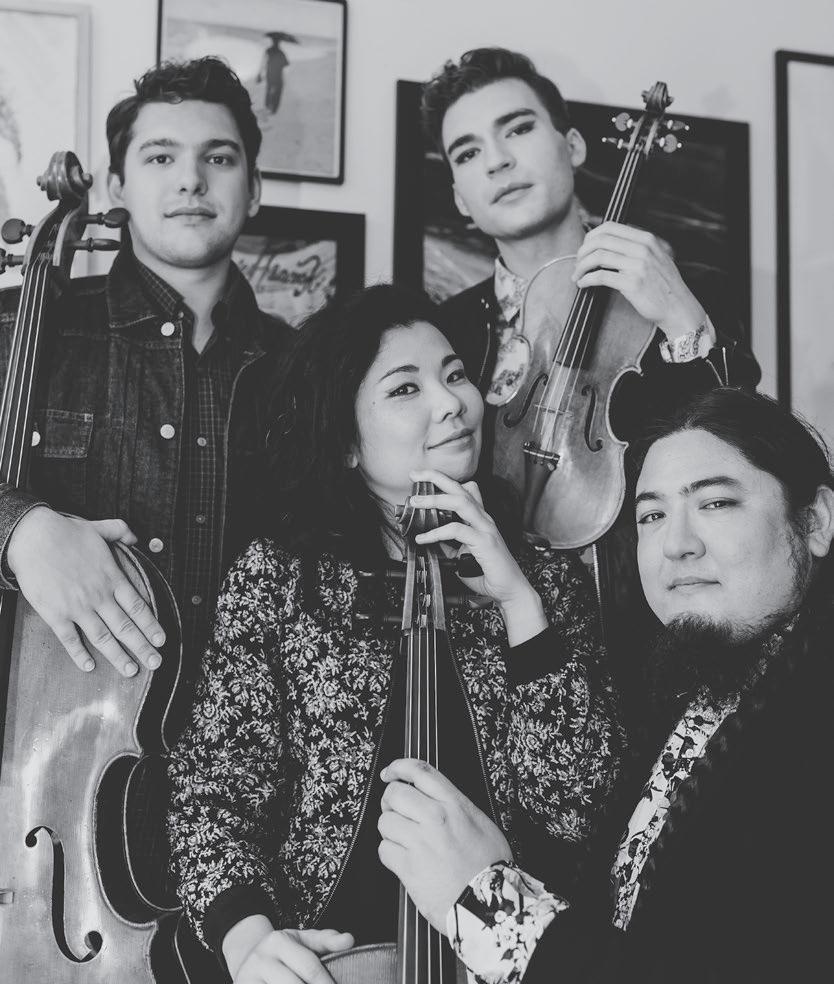
Fri, Apr 11 / 7 PM / Hahn Hall
Hear & Now Series Sponsors:
Linda Sta ord Burrows
Dr. Bob Weinman
Alexi Kenney, violin
Ayane Kozasa, viola
Gabriel Cabezas, cello
Paul Wiancko, cello
Chick Corea: Children’s Song No. 12 (1984)
Paul Wiancko: Vox Petra (2018)
Franghiz Ali-Zadeh: Rәqs (2015)
François Couperin: Les Barricades Mystérieuses (1717)
Trollstilt (Monica Mugan and Dan Trueman): Ricercar (2000)
Paul Wiancko: When The Night (2018)
Terry Riley: Good Medicine (1986)
*Rәqs was commissioned for Kronos Fifty for the Future, a project of the Kronos Performing Arts Association. The score and parts are available for free at kronosquartet.org
Each piece on this program is arranged by Owls.
Sharing Joy with Owls
In the beginning, there was a Spotify playlist.
That’s how violinist Alexi Kenney and violist Ayane Kozasa of Owls described the genesis of not only this evening’s program but also the quartet itself. Both grew from the players’ desire to share music that they loved, that inspired them and that they thought would be fun to play with each other. “That’s what it’s all about: finding the fun, finding why we did this in the first place, which sometimes – not always – can get lost in the fray or the frenzy of this lifestyle and career,” Kenney said. Kozasa concurred, “What we do is this fine line between this passion that we have, and it also has to be work to a certain extent. I have really appreciated being part of this group because it keeps reminding me how fun it is and how joyful it is to play music.”
That Spotify playlist – which ranged from Meredith Monk and Brad Mehldau to Leoš Janáček and Joe Hisaishi – also had pragmatic implications for the unique group, whose instrumentation (two cellos, a viola and violin) has little music written explicitly for it. The only canonical example comes from Anton Arensky, whose quartet the members were intent on not playing. By adding music to the playlist, the members could share their interests and inspirations, and they began the comprehensive process of finding
music that they could arrange. They considered technical aspects of color and voicing, but also – guided by their joy of playing together – they asked themselves what each of them individually could contribute and bring to the whole. Ultimately, for Kozasa, by releasing herself from expectations, the musical universe became wide open: “For this group, there are no precedents for how this should sound. That was so freeing for me. Starting from the mentality that anything is possible allowed us to explore not just our corner of classical music, but to go beyond that to find other commonalities in the musical Venn diagram with other styles.”
The end result is this evening’s seven works, all arranged collaboratively by the ensemble and each with deep personal meaning for all members, including the two works by cellist and composer Paul Wiancko (who recently joined the well-known Kronos Quartet). “How I envision programs is usually energetically: how things are sculpted, how energy levels dip and rise and all of that,” Kenney said. The works each ebb and flow in due course, and most contrast feeling anchored and unmoored, still and moving. But the group’s playful spirit also finds resonance with the works selected: Themes of simple joys, innocence and curiosity appear across the program. As Kenney noted, “There is so much life, and so much vitality, and so much joy of living and joy of music making. That might also be the through line: this love for life – joie de vivre.”
Chick Corea:
Children’s Song No. 12
For Owls, Chick Corea’s Children’s Song No. 12 bids a warm welcome to the concert as an opener but, for the composer, children’s music offered a unique artistic challenge. Inspired by Bartók’s Mikrokosmos, which were also written with children in mind, Corea’s children’s songs were a pathway to pare down musical elements to only the necessities. He had been writing “children’s songs” and peppering them into albums since the early 1970s, when his own musical style shifted away from the complex bebop toward melodic cool jazz. In Children’s Song No. 12, Corea immediately establishes a slow groove with a syncopated ostinato harmony over which he lays tuneful melodies – graced with blue notes – and call-and-response phrases.
Paul Wiancko:
Vox Petra
According to composer Paul Wiancko, Vox Petra (Stone Voice) is “a double duo inspired by Isamu Noguchi’s iconic
stone sculptures, which turn heavily unmovable masses while transforming the space around them.” A journey by manipulating a sense of space. The opening is large and uncentered, as if the initial motive was undecided on its direction, searching for momentum, only to disintegrate into arid elements that return at random. Two techniques contribute to spatial disorientation: rapid, repeating notes that decrescendo give a sense of something moving away (à la the Doppler effect), while high-pitch delicate harmonics activate enharmonic resonances beyond acoustical norms. In the middle section, propulsive rhythms anchor the music, and the energy undulates, providing a sense of cogent direction before developing into a driving Shostakovich-like scherzo. The final section shifts between these two sound worlds – the open-ended curiosity and directed motivation – attempting to reconcile the dueling impulses.
Franghiz Ali-Zadeh’s Rәqs pays homage to the composer’s homeland, Azerbaijan, and the ubiquitous folk dances that accompany many facets of life there: from birthdays to funerals, weddings, farewells and harvests. She writes, “In Azerbaijan, many different dances have existed since time immemorial.” For Owls, the music represents an “explosion of joy.” The beginning features a 6/8 dance rhythm whose chromatic complexity lends a sinewy and more intellectual quality, which soon becomes a slow rhapsody led by the viola. After several languid, slinking steps, the folk theme in 6/8 melody reappears, gentle and firm. Affable and lilting, Ali-Zadeh’s work deftly uses folk elements to counterbalance her avant-garde techniques and musical language.
Composer, organist and harpsichordist François Couperin was the most prominent musician in France after Lully and prior to Rameau. His style emphasized the two most valued French traits: douceur (gentility) and naturalness. His musical austerity illustrates douceur. Les Barricades Mystérieuses uses a strict repetition of a syncopated, upward leap in the treble against the simple strong beat accompaniment as the foundation to explore the new harmonic language that was experimental at the time but is now common practice. He emphasized naturalness by writing music meant to imitate nature, often giving his works descriptive titles like Les Barricades Mystérieuses (Mysterious Barricades),
which may refer to literal walls or might be a metaphor for a woman’s eyelashes. Because so much of his innovative style has become commonplace today, Couperin’s work may seem quaint to modern ears, yet that compelling leap-up that runs throughout conjures an image of a composer 300 years ago eager to capture a spark of joy in his music.
In their duo Trollstilt, Dan Trueman and Monica Mugan bring together influences of Norse and American folk music to create extemporaneous compositions. Their Ricercar uses the straightforward harmonic language of folk music, with unpretentious and unadorned melodies, as its basis. These everyday musical materials, however, develop into fugal counterpoint with voices imitating each other in a loosely Baroque fashion – the title refers to contrapuntal Baroque keyboard genre. Trollstilt’s work continues to grow in complexity before abruptly cutting back to the opening calm, as if things went too far and needed a restart. The second time through, however, the thematic material is allowed to follow its own journey, leading to a gradual denouement on its own terms.
Paul Wiancko’s second work on the program, When the Night, borrows from Ben E. King’s ubiquitous 1960s R&B song “Stand by Me.” Wiancko uses the first three notes of the song (“When the night,” or mi, sol, la) to write an “harmonically rich and texturally innovative celebration of all things cello.” From these most simple origins, Wiancko spins out an array of styles in rapid succession, like a set of variations on a theme. The opening statement offers a homophonic melody against a drone to help establish the basic musical materials before moving on to arpeggiation and gradual deconstruction of the melody, dispersing it among the instruments. The shifting moods and styles continue, leading to an explosive passionate climax.
Terry Riley’s Good Medicine shows all the hallmarks of the composer’s groundbreaking minimalist style: bright consonant harmonies, driving pulses with devilishly hard rhythms and repetitive motifs that create a contemplative sound object. Yet by the 1980s, as composers turned toward a more personal
neoromanticism, the minimalists introduced tonal harmonic progressions and melodies with a greater emotional depth. Good Medicine takes the language and techniques of minimalism – the deep meditative music that emerges from radically cutting down musical elements – and pairs it with bold melodies that are joyful and soaring. By oscillating between these styles, the work offers a transcendental experience where contemplative meditation awakens a joyful euphoria.
In the end, the program that Owls has crafted invites audiences into a world of music that deeply moves them. But the group’s collaborative curatorial process – coming together as four individuals with different points of view and openly offering their individual perspectives – may also serve as a reminder that true joy is found in sharing that which moves us with others. As Kozasa said, “I have one moment in every piece where I tear up, because it feels so beautiful or sentimental or you are seeing the world from above and the epic-ness of it you are reflecting on humanity. There is something in every piece that makes me feel teary-eyed, which is a really nice feeling – a really, really nice human emotion to feel. And hopefully at some point in the program the audience can feel it too.”
Reprinted with kind permission of Caramoor Center for Music and the Arts
Declared “a dream group” by The New York Times and drawing from a deep well of musical passions and backgrounds, Owls, an inverted string quartet, defies expectations and labels with original, visceral and personal performances. Each member is an artistic force in their own right; violinist Alexi Kenney, violist Ayane Kozasa, cellist Gabriel Cabezas and cellist-composer Paul Wiancko share an uncommonly fierce creative spirit which drives the quartet to challenge the way meaningful concert experiences are conceived.
By weaving together new compositions with collaboratively generated arrangements of music ranging from the 1600s to the present, Owls’ distinctive instrumentation allows them access to beautiful and exhilarating new sound worlds, effectively guaranteeing that each performance is uniquely theirs and without limits.
The 2024-2025 season sees a debut album from Owls as well as performances in Chicago, New York City, Berkeley, Albany and Montana following invitations from prestigious series from, among others, Caramoor Center
for Music and the Arts, Tippet Rise, UChicago Arts, Cal Performances and Celebrity Series of Boston. Their debut album, Rare Birds, was released on New Amsterdam Records in March 2025.
Alexi Kenney, violin, is forging a career that defies categorization and follows his interests, intuition and heart. He is at home creating experimental programs and commissioning new works, soloing with major orchestras around the world and collaborating with some of the most celebrated musicians of our time. Kenney is the recipient of an Avery Fisher Career Grant and a Borletti-Buitoni Trust Award.
Kenney has soloed with The Cleveland Orchestra, San Francisco Symphony, l’Orchestre de la Suisse Romande, Detroit Symphony, Rochester Philharmonic, Indianapolis Symphony, Gulbenkian Orchestra, St. Paul Chamber Orchestra, Oregon Symphony, Louisville Orchestra and l’Orchestre de Chambre de Lausanne in addition to featuring in a play-conduct role as guest leader of the Mahler Chamber Orchestra.
Chamber music continues to be a major part of Kenney’s life, and he regularly performs at festivals including the Caramoor Summer Music Festival, ChamberFest Cleveland, Chamber Music Northwest Summer Festival, Kronberg Festival, La Jolla Music Society SummerFest, Ojai Music Festival, Marlboro Music Festival, Music@ Menlo, Ravinia Festival, Seattle Chamber Music Festival and Spoleto Festival USA. He is a founding member of Owls and an alum of the Bowers Program (formerly CMS 2) at the Chamber Music Society of Lincoln Center. Kenney is a graduate of the New England Conservatory, where he was a student of Miriam Fried and Donald Weilerstein. www.alexikenney.com
Ayane Kozasa is a violist, chamber musician, collaborator and educator. She is the winner of the 2011 Primrose International Viola Competition and as of 2024, Kozasa is the violist of the Kronos Quartet, succeeding Hank Dutt, the ensemble’s violist of 45 years.
Kozasa is a founding member of the Aizuri Quartet, who was the 2018 quartet-in-residence at the Metropolitan Museum of Art and the grand prize winner of both the Osaka International String Quartet Competition and MPrize Chamber Arts Competition. The Aizuri Quartet’s debut album Blueprinting (New Amsterdam) was
nominated for a Grammy Award and named one of NPR’s top 10 classical albums of 2018. In 2020, the quartet launched AizuriKids, an interactive web series for children that explores relationships between music and themes ranging from astrophysics to cooking. In 2022, Kozasa joined the viola faculty at the University of Cincinnati College-Conservatory of Music. She previously taught at Adelphi University in Long Island and has been a guest professor at the San Francisco Conservatory of Music. Kozasa is a graduate of the Curtis Institute of Music, Kronberg Academy and Cleveland Institute of Music, where she studied viola with Misha Amory, Roberto Díaz, Nobuko Imai and Kirsten Docter.
www.ayanekozasa.com
Gabriel Cabezas, cello, is a true 21st-century musician. A prolific and sought-after soloist and collaborator, he is as comfortable interpreting new works as he is with the pillar scores of the cello repertoire. Cabezas has appeared with America’s finest symphony orchestras and has premiered dozens of new works by some of the most brilliant composers of his time. He recently released Lost Coast, a dynamic album of original music composed by Gabriella Smith inspired by her reflections on the devastating effects of climate change. The album was named a favorite album of 2021 by NPR and The New York Times. Cabezas is a member of the acclaimed chamber sextet yMusic, quartet collective Owls and is a co-founder of Duende, a new music and contemporary dance collective. In 2016, Cabezas received the Sphinx Medal of Excellence, a career grant awarded to extraordinary classical Black and Latinx musicians. Cabezas studied at the Curtis Institute of Music under Carter Brey.
www.gabrielcabezas.com
Paul Wiancko is a composer, cellist and serial collaborator. A member of Kronos Quartet since 2023, Wiancko succeeded the late Geoff Nutall as Artistic Director for Chamber Music at Spoleto Festival USA. Called a “multifaceted talent” with a “singular voice” by the Washington Post, Wiancko has composed, arranged and performed in a dramatically large range of genres, collaborating with artists like Max Richter, Chick Corea, Norah Jones, Dirty Projectors, The National and Wye Oak as well as the Aizuri, Guarneri, JACK, St. Lawrence and Kronos Quartets.
www.paulwiancko.com
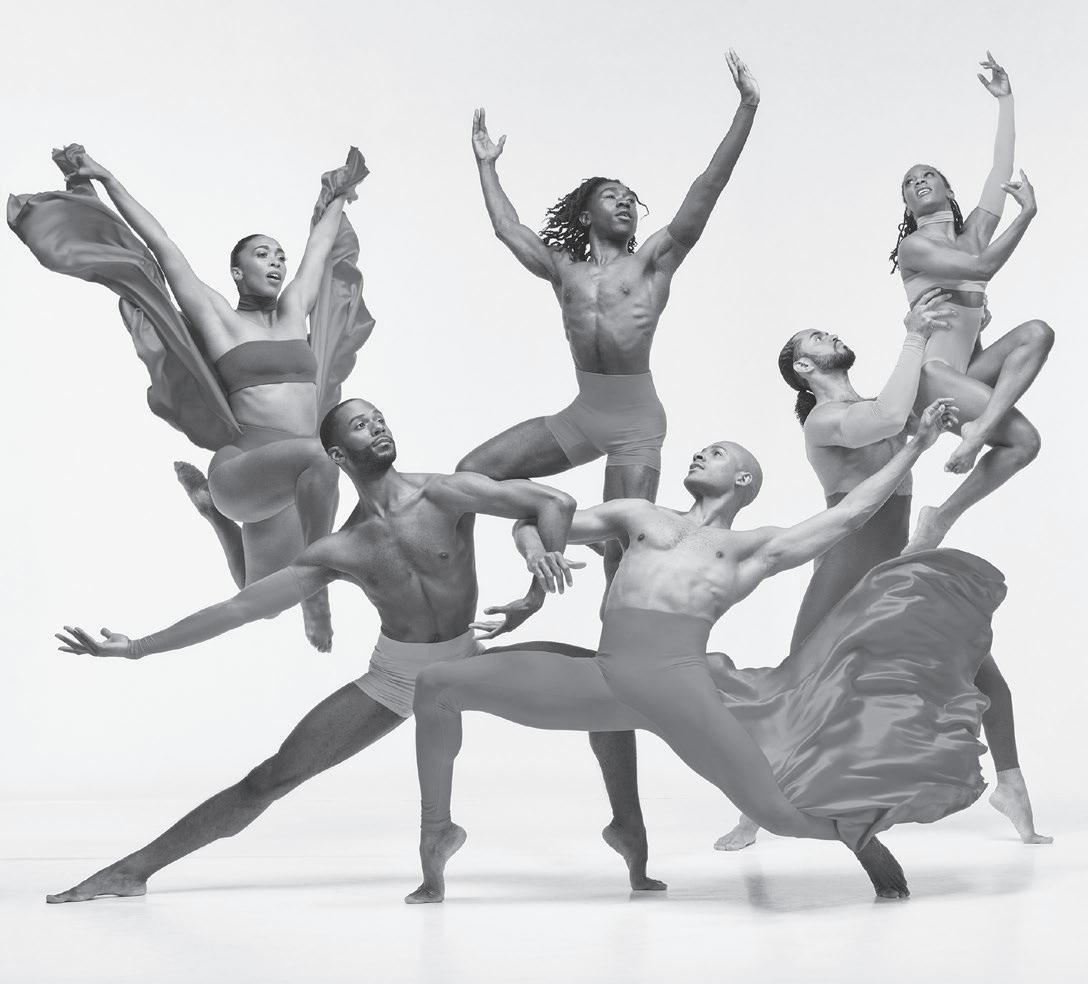
Alvin Ailey, Founder
Judith Jamison, Artistic Director Emerita
Matthew Rushing, Interim Artistic Director
Company Members
Leonardo Brito, Patrick Coker, Shawn Cusseaux, Sarah Daley-Perdomo, Caroline T. Dartey, Isaiah Day, Coral Dolphin, Solomon Dumas, Samantha Figgins, James Gilmer, Vernard J. Gilmore, Ashley Kaylynn Green, Jacquelin Harris, Michael Jackson, Jr., Yannick Lebrun, Xavier Mack, Renaldo Maurice, Corrin Rachelle Mitchell, Chalvar Monteiro, Jesse Obremski, Kali Marie Oliver, Alisha Rena Peek, Jessica Amber Pinkett, Miranda Quinn, Hannah Alissa Richardson, Deidre Rogan, Constance Stamatiou, Christopher Taylor, Fana Minea Tesfagiorgis, De’Anthony Vaughan, Dandara Veiga, Isabel Wallace-Green, Christopher R. Wilson
Ronni Favors, Rehearsal Director
Clifton Brown, Assistant Rehearsal Director
Kanji Segawa, Assistant Rehearsal Director
Bennett Rink, Executive Director
Alvin Ailey American Dance Theater’s 2024–25 season celebrates the life and legacy of Artistic Director Emerita Judith Jamison (1943-2024).
Tue, Apr 15 & Wed, Apr 16
7:30 PM / Granada Theatre
Lead Sponsor: Jody & John Arnhold
Supporting Sponsor: Linda Sta ord Burrows
Dance Series Sponsors: Margo Cohen-Feinberg, Barbara Stupay, and Sheila Wald
Presented in association with UCSB Department of Theater and Dance
Matthew Rushing: Sacred Songs
Elisa Monte: Treading
Hans van Manen: Solo
Ronald K. Brown: Grace
Hope Boykin: Finding Free
Lar Lubovitch: Many Angels
Alvin Ailey: Revelations
See each night’s program insert for detailed program information.
Founded by Alvin Ailey on March 30, 1958, Alvin Ailey American Dance Theater is one of the most acclaimed dance companies in the world. With a repertoire that boasts close to 300 works by more than 100 choreographers, it has performed in more than 70 countries on six continents and has been designated a “vital American cultural ambassador to the world” by a U.S. Congressional resolution. Forged during a pivotal moment in the civil rights movement, Alvin Ailey American Dance Theater was established to uplift the African-American experience while transcending boundaries of race, faith and nationality with its universal humanity. Alvin Ailey invited dancers of all backgrounds to be a part of his vision while reimagining his company as a “library of dance,” a home for a wide range of choreographers’ works that might otherwise be lost. Before his untimely death in 1989, Ailey named Judith Jamison as his successor and for 21 years, she brought the Company to unprecedented success. In 2011, she selected Robert Battle as her successor; he stewarded the Company until 2023. Today, Alvin Ailey American Dance Theater continues to bring joy to audiences around the globe while expanding its repertoire with works by new choreographers and upholding Ailey’s legacy for future generations.
Alvin Ailey, Founder
Alvin Ailey was born on January 5, 1931, in Rogers, Texas. His experiences of life in the rural South would later inspire some of his most memorable works. He was introduced to dance in Los Angeles by performances of the Ballet Russe de Monte Carlo and the Katherine Dunham Dance Company and his formal dance training began with an introduction to Lester Horton’s classes by his friend Carmen de Lavallade. Horton, the founder of one of the first racially-integrated dance companies in the United States, became a mentor for Ailey as he embarked on his professional career. After Horton’s death in 1953, Ailey became director of the Lester Horton Dance Theater and began to choreograph his own works.
In the 1950s and ’60s, Ailey performed in four Broadway shows, including House of Flowers and Jamaica. In 1958, he founded Alvin Ailey American Dance Theater to carry out his vision of a company dedicated to enriching the American modern dance heritage and preserving the uniqueness of the African-American cultural experience. The creation of his masterpiece Revelations in 1960 cemented his reputation as a choreographer of unique vision with the ability to transcend racial barriers and connect deeply to people’s humanity. He
established the Alvin Ailey American Dance Center (now The Ailey School) in 1969 and formed the Alvin Ailey Repertory Ensemble (now Ailey II) in 1974. Ailey was a pioneer of programs promoting arts in education. Throughout his lifetime, he was awarded numerous distinctions including the Kennedy Center Honor in 1988 in recognition of his extraordinary contribution to American culture. In 2014, he posthumously received the Presidential Medal of Freedom, the country’s highest civilian honor, in recognition of his contributions and commitment to civil rights and dance in America. When Ailey died in 1989, The New York Times said of him, “you didn’t need to have known [him] personally to have been touched by his humanity, enthusiasm and exuberance and his courageous stand for multi-racial brotherhood.”
Matthew Rushing was born in Los Angeles, California. He began his dance training with Kashmir Blake in Inglewood, California and continued his training at the Los Angeles County High School for the Arts. He is the recipient of a Spotlight Award and a Dance Magazine Award and was named a Presidential Scholar in the Arts. He was a scholarship student at The Ailey School and later became a member of Ailey II. During his career, Rushing has performed as a guest artist for galas in Vail, Colorado as well as in Austria, Canada, France, Italy and Russia. He has performed for Presidents George H. W. Bush, Bill Clinton, George W. Bush and Barack Obama as well as at the 2010 White House Dance Series. During his time with the Company, he has choreographed five ballets: Acceptance In Surrender (2005), a collaboration with Hope Boykin and Abdur-Rahim Jackson; Uptown (2009), a tribute to the Harlem Renaissance; ODETTA (2014), a celebration of “the queen of American folk music”; Testament (2020), a tribute to Alvin Ailey’s Revelations created in collaboration with Clifton Brown and Yusha-Marie Sorzano; and this season’s Sacred Songs. In 2012, he created Moan, which was set on PHILADANCO! and premiered at The Joyce Theater. Rushing joined the Company in 1992. He became rehearsal director in 2010, associate artistic director in 2020 and interim artistic director in 2023.
Ronni Favors began dancing as a child in Iowa City, Iowa. After studying at the National Music Camp in Interlochen, Michigan as recipient of the Camp Scholarship, she continued her training at The Ailey School as a fellowship student. Favors was a member of Ailey II, Alvin Ailey American Dance Theater and the Lar
Lubovitch Dance Company and has received the Min-On Art Award. Favors was the ballet instructor at the 1989 inaugural session of AileyCamp in Kansas City and served as artistic director of the camp. She is the founding director of Children’s Aid AileyCamp New York and provided guidance in the national implementation of the AileyCamp program. In 1997, Favors was named assistant rehearsal director of Alvin Ailey American Dance Theater and was its rehearsal director from 1999 to 2010. She worked with local dance students who performed in Alvin Ailey’s Memoria in Johannesburg, South Africa, as well as in Seattle, Copenhagen, Los Angeles, Chicago, Kansas City, New York and most recently, Edinburgh, Scotland. She set Alvin Ailey’s Night Creature on TU Dance and Oregon Ballet Theatre. Favors rejoined the Company as rehearsal director in 2019.
Clifton Brown, from Goodyear, Arizona, began his dance training at Take 5 Dance Academy and continued in the first class of the Ailey/Fordham BFA in dance program. Brown began his professional career when he joined the Ailey company in 1999 and served as choreographic assistant to Judith Jamison. He has also danced with Earl Mosley’s Diversity of Dance and Lar Lubovitch Dance Company and was a founding member and rehearsal director for Jessica Lang Dance. He was nominated in the U.K. for a Critics Circle National Dance Award for Best Male Dancer and received a Black Theater Arts Award as well as a New York Dance and Performance (“Bessie”) Award. As a guest artist, Brown has performed with Miami City Ballet, Rome Opera Ballet, Nevada Ballet and Parsons Dance. He has set the work of Alvin Ailey, Earl Mosley and Jessica Lang on various companies around the world. Television appearances as a guest artist include So You Think You Can Dance and Dancing with the Stars. He has had the privilege of performing at the White House for President Obama. Brown became assistant rehearsal director in 2019.
Kanji Segawa, originally from Kanagawa, Japan, began his dance training with his mother Erika Akoh, studying ballet with Kan Horiuchi and Ju Horiuchi in Tokyo. Segawa was awarded the Japanese Government Artist Fellowship in 1997 to train at The Ailey School. A former member of Ailey II and Battleworks, Segawa danced extensively for Mark Morris and performed as a principal dancer in John Adams’ Nixon in China at The Metropolitan Opera. Since 1999, Segawa has been creative associate for Jessica Lang, assisting her creations for companies worldwide
including American Ballet Theatre, Pacific Northwest Ballet, The Royal Ballet and The National Ballet of Japan. With Lang, Segawa co-choreographed the world premiere production of Turandot for The Washington National Opera, directed by Francesca Zambello. He was a dancer with Alvin Ailey American Dance Theater under the direction of Robert Battle from 2011-2023 and became assistant rehearsal director in 2024.
Bennett Rink became executive director of AILEY in 2013. He first joined the organization as manager of special events in 1994, became development director in 1998 and served as senior director of development and external affairs from 2007 to 2012. In his tenure overseeing AILEY’s development and fundraising efforts, Rink led a major capital campaign to establish the organization’s first permanent home, The Joan Weill Center for Dance, which opened in 2005 and attracts more than 200,000 visitors each year. Rink also oversaw the campaign to build the organization’s endowment, which provides vital ongoing support for programmatic initiatives. When the Company celebrated its 50th anniversary in 2008, Rink supervised an 18-month celebration including events, promotions, collaborations and special performances, bringing public awareness of the AILEY organization to new heights.
During his time as executive director, the Company has deepened its presence in New York City by establishing an annual spring season to complement its New York City Center winter season while also extending its role as America’s “cultural ambassador to the world” with tours to Africa, Europe and South America. To reach audiences beyond live performances, Rink has broadened the organization’s commitment to creating film and digital content. He has also extended the reach and impact of AILEY’s educational offerings, including the creation of new curricula and programs that reach across generations from elementary schoolchildren to older adults. In 2017, the organization unveiled the Elaine Wynn and Family Education Wing, providing much-needed additional studios and classroom space. The building now comprises 87,000 square feet and is the largest destination for dance in New York City. In recent years, Rink has overseen a branding initiative to express the totality of AILEY’s offerings, creating greater connectivity among Alvin Ailey American Dance Theater, Ailey II, The Ailey School, Ailey Arts in Education & Community Programs and Ailey Extension. Most recently, he led the organization’s collaboration with the Whitney
Museum on Edges of Ailey, the first large-scale museum exhibition celebrating the life, dances, influences and enduring legacy of Alvin Ailey. He is a graduate of Syracuse University and holds a BFA in theater.

Major funding of AILEY is provided by AARP, Anonymous, American Express, Bank of America, Bloomberg Philanthropies, BNY Mellon, Diageo North America, Ford Foundation, Fund II Foundation, The Hearst Foundations, Howard Gilman Foundation, Institute of Museum and Library Services, The Mellon Foundation, National Endowment for the Arts, The Prudential Foundation, The Shubert Foundation, Southern Company, The Thompson Family Foundation, and Verizon Communications.
Alvin Ailey American Dance Theater gratefully acknowledges The Joan & Sandy Weill Global Ambassador Fund, which provides vital support for Ailey’s national and international tours.
The Ailey dancers are supported, in part, by The Judith McDonough Kaminski Dancer Endowment Fund.


Tue, Apr 22 / 7:30 PM / Arlington Theatre
Pete Buttigieg served from 2021 to 2025 as U.S. Secretary of Transportation. During his tenure, he worked to launch more than 60,000 infrastructure projects across the country, improve transportation safety and technology, expand airline passenger protections and resolve pandemic-related supply chain disruptions. He was the first openly gay person in U.S. history to be confirmed to serve in a president’s Cabinet.
Previously, Buttigieg served two terms as mayor of South Bend, Indiana, where he was elected at the age of 29 and led the city to its strongest period of economic and population growth in decades. He also served for seven years as an officer in the U.S. Navy Reserve, taking a leave of absence from his role as mayor in 2014 to deploy to Afghanistan. A candidate for the Democratic nomination for President in 2020, his historic campaign won the Iowa caucuses and finished second in the New Hampshire primary.
He holds degrees in history and literature from Harvard and in philosophy, politics and economics from Oxford, where he was a Rhodes Scholar. He lives in northern Michigan with his husband Chasten, their two children, Gus and Penelope, and their dog, Buddy.
Special Thanks

Your seat is waiting! Become a member and join a network of arts advocates that enable us to deliver remarkable programming on and off stage.
The Benefits of Giving
Invitation to a reception or meet-and-greet opportunity with a featured artist or speaker
Complimentary parking at all ticketed A&L events at UCSB Campbell Hall
Opportunity to introduce guests to Arts & Lectures with a pair of complimentary tickets to an A&L public event, as available
VIP Ticketing Concierge Service and Priority Seating
Complimentary ticket exchange when your plans change
Invitations to Producers Circle Receptions with featured artists and speakers
Access to Intermission Lounge in the McCune Founders Room during A&L performances and lectures at The Granada Theatre
Invitation to A&L’s exclusive Season Announcement Party
Opportunity to attend master classes and other educational activities
Invitation to a member appreciation event
Recognition in A&L event programs or digital media
To inquire about membership or a customized Leadership Circle experience, please call Elise Erb, Director of Development, at (805) 893-5679
CircleofFriendsProducersCircleExecutiveProducersCircleLeadershipCircle
Leadership Circle includes all the benefi ts of Executive Producers Circle plus your own personalized membership experience



Through Access for ALL, inspirational, dynamic learning experiences are possible for students and lifelong learners across classrooms, our community and the UCSB campus.
• Classroom visits
• Master classes
• Panel discussions
• Lecture-demonstrations
• Discounted and free admission to A&L mainstage events
K-12
• Matinee field trips for students from across the county
• Assemblies
• Workshops
• Q&As
• Thematic Learning Initiative (TLI): Extending the conversation through film screenings, special events and book giveaways
• Author signings
• Pre-show talks and post-show Q&As
• Community workshops
Access for ALL serves more than 30,000 students and community members annually.

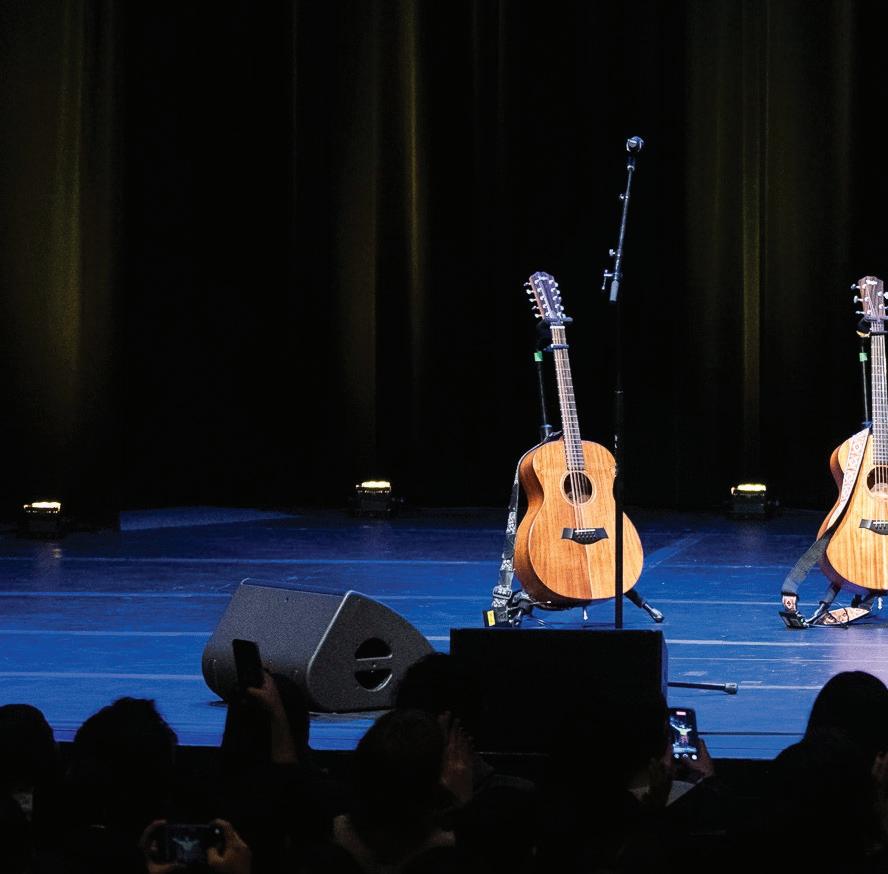
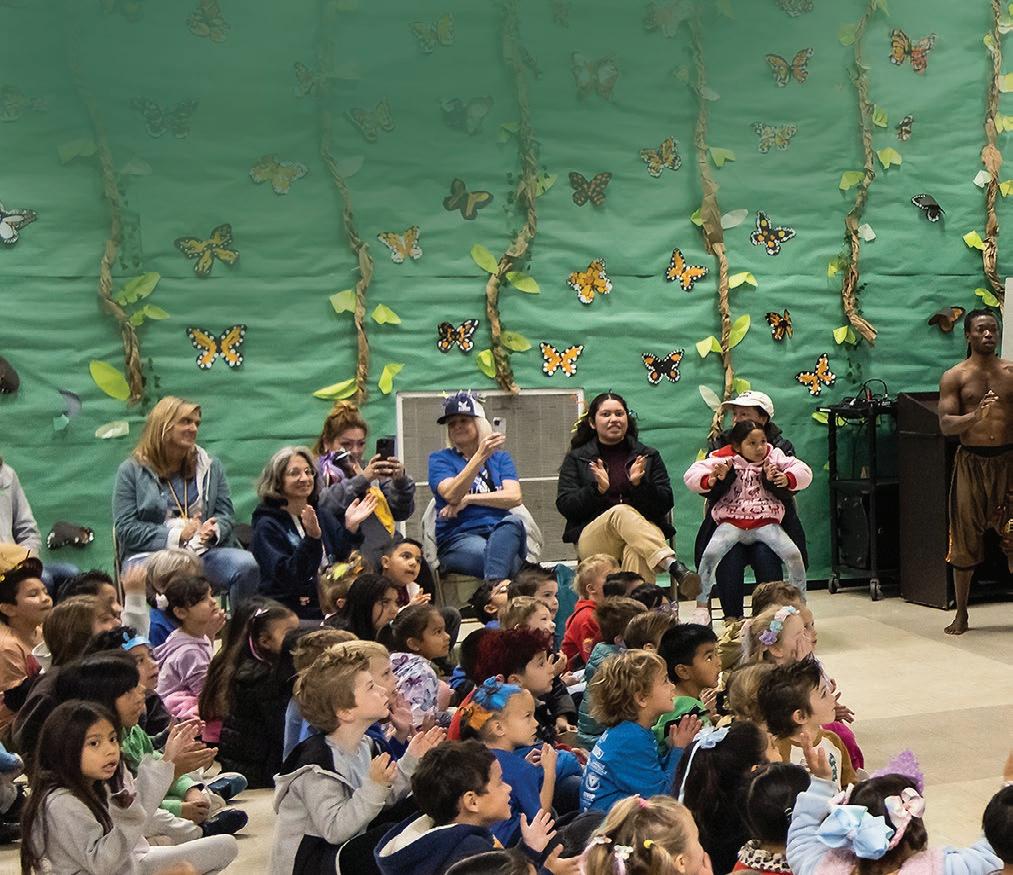
Please consider a contribution to A&L’s award-winning educational outreach programs. Call Stacy Cullison, Senior Director of Development & Special Initiatives, at (805) 893-3755 to learn more.


“Every child moved by art is a victory / inspired to learn history but also to make it / To shape it, to speak it / Until the world glows with sound.” – Amanda Gorman, “House of Light”



Thank you to our Education and ¡Viva el Arte de Santa Bárbara! Sponsors
Connie Frank & Evan Thompson Arnhold A&L Education Initiative
WILLIAM H. KEARNS FOUNDATION
Linda Stafford Burrows
Audrey & Timothy O. Fisher
Eva & Yoel Haller
Dorothy Largay & Wayne Rosing
Kath Lavidge & Ed McKinley
Sara Miller McCune
The Roddick Foundation
Stone Family Foundation
Towbes Fund for the Performing Arts, a field of interest fund of the Santa Barbara Foundation

University Support:
Office of the Chancellor
Office of the Executive Vice Chancellor


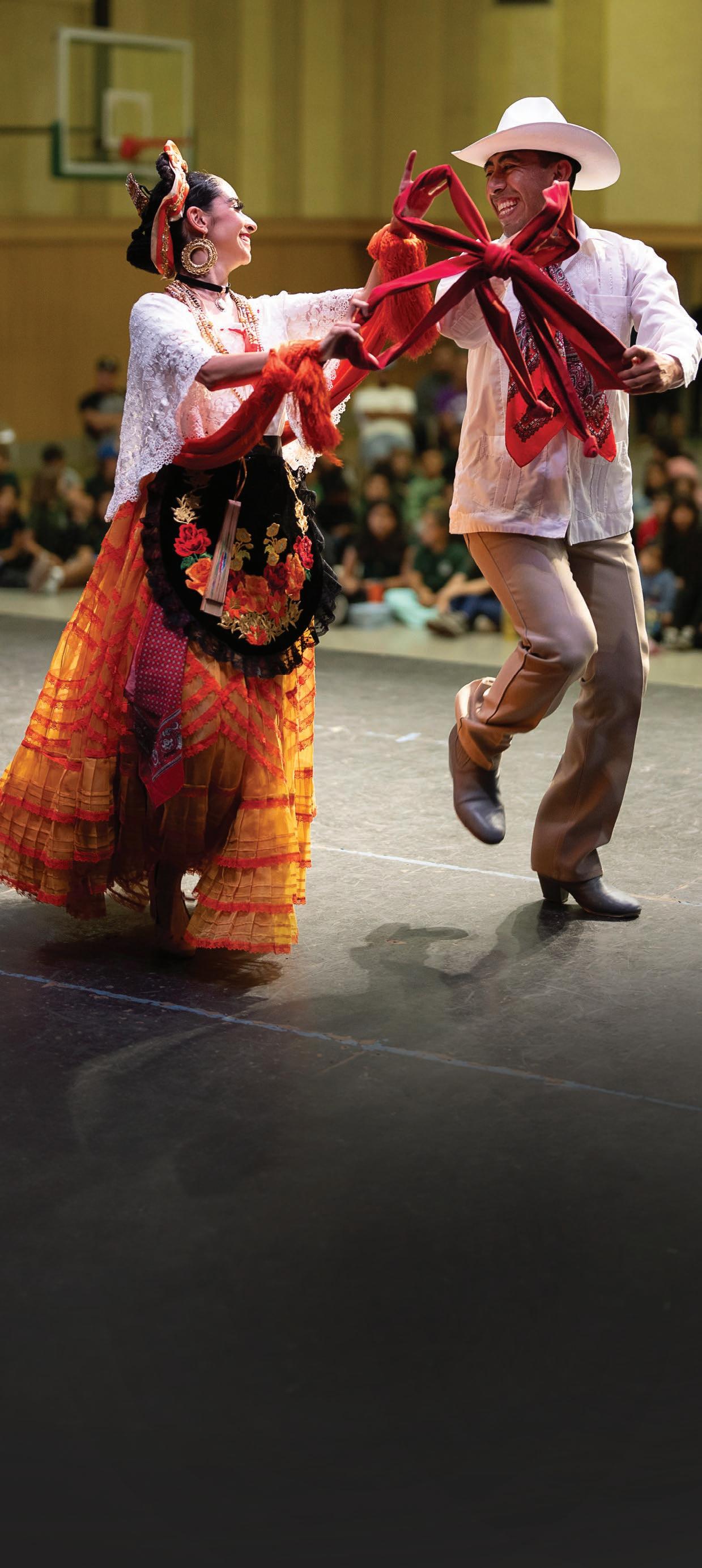
¡Viva el Arte de Santa Bárbara! brings people together to share the rich cultural heritage of Latin America, serving more than 15,000 students and community members each year throughout Santa Barbara County.
Created in 2006 out of a commitment to arts access for all, Viva works with dozens of local partners to present high-quality artists who share their knowledge and passion. Schools, neighborhood spaces and community centers come alive in these free programs for youth and families.
¡Viva el Arte de Santa Bárbara! is a collaboration between UCSB Arts & Lectures, The Marjorie Luke Theatre, the Guadalupe-Nipomo Dunes Center and the Isla Vista School Parent Teacher Association serving Carpinteria, Santa Barbara, Goleta, Lompoc, Santa Maria, Guadalupe and New Cuyama.
Ballet Nepantla
May 16 - 18
Performances are FREE (no registration required)
1. Dancers from Ballet Folklórico de Los Ángeles perform at Franklin Elementary School 2. La Santa Cecilia plays to a packed house at The Marjorie Luke Theatre 3. Mariachi Garibaldi performs a free concert at The Marjorie Luke Theatre 4. Young audience members enjoy a free family performance 5. Las Cafeteras performs a free concert at The Marjorie Luke Theatre
For nearly two decades, Viva has brought vibrant cultural performance and educational opportunities to the most underserved in Santa Barbara County. Join us in securing the future of this vital partnership for generations to come with a gift to the Viva Endowment Fund.
To learn more about giving to the Viva endowment, contact Elise Erb, Director of Development, at (805) 893-5679 for information.
“Everyone should have access to art and music. Viva is awesome. It provides world-class musicians and artists to the community at no charge.”
– Salud Carbajal, U.S. Congressman
Representing California’s 24th District






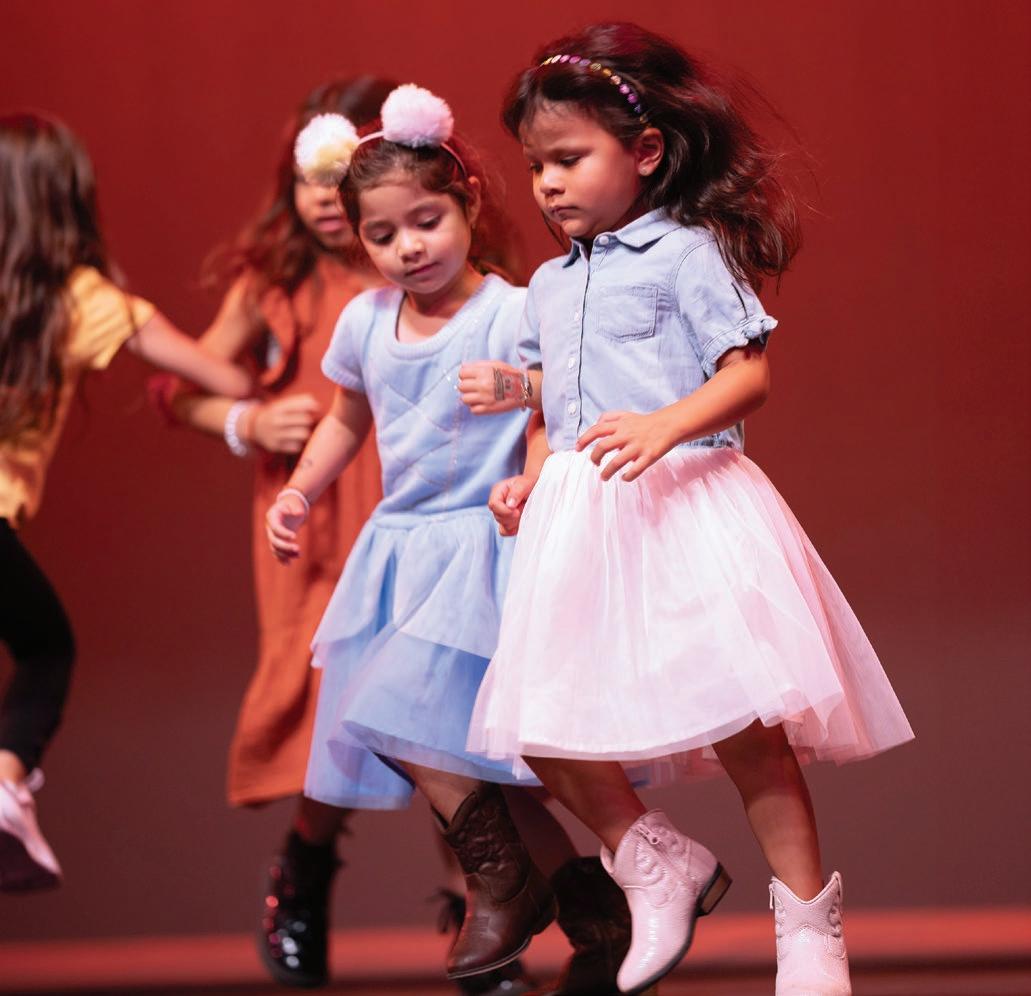

Arts & Lectures is privileged to acknowledge our Council, a group of insightful community leaders and visionaries who help us meet the challenge to educate, entertain and inspire.
Marcy Carsey
Timothy O. Fisher
Rich Janssen, Co-Chair
Dorothy Largay, Co-Chair
Kath Lavidge, Co-Chair
Arts
Patricia MacFarlane
Susan McCaw
Sara Miller McCune
Jillian Muller
Natalie Orfalea
Tom Sturgess
Anne Smith Towbes
Lynda Weinman
Cliff Wyatt
Merryl Snow Zegar
Arts & Lectures is proud to acknowledge our Ambassadors, volunteers who help ensure the sustainability of our program by cultivating new supporters and assisting with fundraising activities.
Winnie Dunbar
Donna Fellows
Belle Hahn
Eva Haller
Robin Himovitz
Luci Janssen
Maxine Prisyon
Lily Hahn Shining
Bruce Heavin
Heather Sturgess
Anne Smith Towbes
Sherry Villanueva
Crystal Wyatt
Our Leadership Circle members, a group of key visionaries giving $10,000 to $100,000 or more each year, make a significant, tangible difference in the community and help bring A&L’s roster of premier artists and global thinkers to Santa Barbara. We are proud to recognize their philanthropy.
$100,000+
Jody & John Arnhold
Audrey & Timothy O. Fisher ◊ ‡
G.A. Fowler Family Foundation
Connie Frank & Evan Thompson
Martha Gabbert
Eva & Yoel Haller ◊
$50,000+
Patricia Bragg Foundation
Cancer Foundation of Santa Barbara
Marcy Carsey
Justin Brooks Fisher Foundation
William H. Kearns Foundation ‡
$25,000+
Betsy Atwater
Mary Becker ‡
Gary Bradhering & Sheraton Kalouria
Linda Stafford Burrows
Marcia & John Mike Cohen ‡
Margo Cohen-Feinberg
Manitou Fund
Sara Miller McCune ◊ ‡
Jillian & Pete Muller
Natalie Orfalea & Lou Buglioli
Sage Publishing ‡
The Shanbrom Family Foundation
Dorothy Largay & Wayne Rosing ◊
Susan McCaw
Laura & Kevin O’Connor
The Roddick Foundation
Barbara Stupay
Robin & Roger Himovitz
Luci & Rich Janssen ‡
Ellen & Peter O. Johnson
Siri & Bob Marshall
Marilyn & Dick Mazess
Montecito Bank & Trust
Lynda Weinman & Bruce Heavin ◊ ‡
Dick Wolf
Crystal & Cliff Wyatt
Laura & Geofrey Wyatt
Zegar Family Foundation
Anonymous (2)
Heather & Tom Sturgess ◊ ‡
Towbes Fund for the Performing Arts, a field of interest fund of the Santa Barbara Foundation
Merrill Sherman
Russell Steiner
Stone Family Foundation
Sheila Wald
Dr. Bob Weinman
Susan & Bruce Worster
$10,000+
Allyson & Todd Aldrich
Leslie Sweem Bhutani
Jennifer & Jonathan Blum
Tracy & Michael Bollag
Albert & Elaine Borchard Foundation
Christine Bruce & John Hilliard
Sarah & Roger Chrisman
NancyBell Coe & William Burke ‡
David & Debby Cohn
Bettina & Glenn Duval
Jane Eagleton
Donna M. Fellows & Dave Johnson
Gainey Foundation
Robyn & Larry Gottesdiener
Lisa & Mitchell Green
Little One Foundation
Lucky One Foundation
and Hahn Shining Family
Jacquie & Harry McMahon
Holliday McManigal
Judy Wainwright Mitchell & Jim Mitchell
John C. Mithun Foundation
Northern Trust
Stacy & Ron Pulice
Sharon & Bill Rich
Julie Ringler & Richard Powell
Anne Smith Towbes ‡
Williams-Corbett Foundation
Beth & George F. Wood
Nicole & Kirt Woodhouse
Monica Wyatt & Mark Horowitz
Anonymous
Arts & Lectures gratefully recognizes the commitment and generosity of our Producers Circle members, who have made gifts between $2,500 and $9,999. Recognition is based upon a donor’s cumulative giving/pledges within a 12-month period.
$5,000+ Executive Producers Circle
Martha & Bruce Atwater
Elizabeth & Andrew Butcher
Annette & Dr. Richard Caleel
Olivia Erschen & Steve Starkey
Pamela Gann & David Hardee
Shari & George Isaac
$2,500+ Producers Circle
Roxana Anson
Marta Babson
Nancy Barasch
Jill & Arnie Bellowe
Deirdre & Fraser Black
Susan D. Bowey
Victoria Hendler Broom
Drs. Paula & Thomas* Bruice
C & J Colmar Foundation
Susan & Claude Case
Lilyan Cuttler & Ned Seder
Dorothy Daniels
Winnie & Hod Dunbar
Eva Ein
Julia Emerson
Cynthia Enlow & Elise Antrim
Richard Flacks
Charlie Franciscus
& Dr. Herb Rogove
Bunny Freidus
Patricia & Michael French
Priscilla & Jason* Gaines
Linda Gorin - In Memory of Arnold B. Gorin, M.D.
Grafskoy Hindeloopen Limited, LLC
Ann Jackson Family Foundation
Margaret & Barry Kemp
Maia Kikerpill & Daniel Nash
Cindy & Steve Lyons
Suzanne & Duncan Mellichamp
Scott D. Miller
Mission Wealth
Lisa Reich & Bob Johnson ◊
Kyra & Tony Rogers
Eva & Bryan Schreier
Laurie Seigel & Joseph Nosofsky
Joan Speirs Towbes Foundation
Sandra & Sam Tyler
Anonymous (4)
Tricia & Don Green
Paul Guido & Stephen Blain
Barbara Gural
Daniel Halsted
Rosie Hart
Ruth & Alan Heeger
Carolyn Holmquist
Donna & Daniel Hone
Andrea & Richard Hutton
Carolyn Jabs & David Zamichow
Lauren Katz
Connie & Richard Kennelly
Pat Lambert & Rick Dahlquist
Jacqueline* & Robert Laskoff
Arlyn & Michael Latin
Karen Lehrer & Steve Sherwin
Janice & David Levasheff
Denise & George Lilly
Peggy Lubchenco & Steve Gaines
Carole Macelhenny
Mary & Mark Maxson
Nancy & Mike McConnell
Amanda McIntyre
Peter Melnick
Michael Millhollan & Linda Hedgepeth
Harriet Mosson
Nanette & Henry Nevins
Elizabeth & Charles Newman
Dale & Michael Nissenson
Jan Oetinger
Joan Pascal & Ted Rhodes
Lynn Pearl
Ann & Dante Pieramici
Ann Pless
Andrew & Liisa Primack
Susannah E. Rake
Justine Roddick & Tina Schlieske
Jean Rogers
Susan J. Rose
Gayle* & Charles Rosenberg
Ginger Salazar & Brett Matthews
Santa Barbara Skin Institute and Roberta Sengelmann M.D.
Jo & Ken Saxon
Karen Shapiro & Richard Appelbaum
Anitra Sheen
Holly & Lanny Sherwin
Jeanne & Alexander Sloane
Rebecca Sokol Smith
David Spector & Robert Trachtenberg
Randall & Roxanna Solakian
Lynne Sprecher
Carol Spungen
Elisa & Marc Stad
Dale & Gregory Stamos
Debra & Stephen Stewart
Sheila Stone
Mary Jo Swalley ◊
Denise & James Taylor
Amy & George Tharakan
David Tufts & Cris Dovich
Christine Van Gieson & John Benson
Kathryn & Alan Van Vliet
Dianne & Daniel Vapnek
Sherry & Jim Villanueva
Elizabeth Von Summer-Moller & John Moller
Kathryn Washburn
Alexis & Mike Weaver
Kathy Weber
$1,000+
Martha Blackwell
Jim Chiddix
Judith L. Hopkinson ‡
Danson Kiplagat
Carol & Stephen Newman
$500+
Michael & Marilyn Avenali
Linda & Peter Beuret
Ann & David Dwelley
Dodd & Beth Geiger
Kris & Eric Green
$250+
Penny & Michael Arntz
Rochelle & Mark Bookspan
Yun-Seng Chao
Edward & William* DeLoreto
Victoria Dillon
$100+
Rene Aiu
Lynn & Joel Altschul
Margaret & Howard Arvey
Vickie Ascolese & Richard Vincent
Mickey Babcock
Susan Badger
Kirsten Baillie
Roger Bamford
Thomas Beland & Laurel Luby
Rosalie Benitez Poe
Wayne Benner
Cherie Bonazzola
Anna Boyd-Bucy
Elizabeth Breen
Janice Burnham
Kathleen Copeland
Tony Cossa
Patricia Crafts
Nathalie Crick
Jeanette Curci
Lila Deeds
Mary Degruy
Joan & Thomas Dent
Norberg Family Foundation
Gail Osherenko
Carey Pearlman
Minie & Hjalmer
Pompe van Meerdervoort
Diana Katsenes
Elinor & James Langer
Melinda & Aaron Lewis
Priscilla & Forrest Mori
Almeda & J. Roger Morrison
Paul Finkel
James & Diane Giles
Nancy Goldberg
Dennis Johns
Anna & Peter Kokotovic
Elizabeth Downing & Peter Hasler
Cinda & Donnelley Erdman
Lorne Fienberg
Lori Frank
Betty H. Fussell
Susan Gionfriddo
Virginia Graves
Jane Gutman
Laura & Michael Hamman
Janet Healy
Lee Heller
Lauren Hobratsch
Andriana Hohlbauch
Deborah & Jay James
Stacey & Raymond Janik
Susan Kadner
A.J. Kamp
Lois Kaplan
Ralph Kappelhoff
Jean Keely
Katherine Corley Kenna
Thomas Kren
Josephine Powe
Robin Rickershauser
Maureen & Les Shapiro
Diane & Charles Sheldon
Kirstie Steiner & John Groccia
Claire & Glenn Van Blaricum
Carol Vernon & Robert Turbin
Lisa Youngman
Stephanie Mutz
Oshay Family Foundation
Quinn O’Toole
Ayesha & Mohammed Shaikh
Stephen Simons
Laura B. Kuhn
Alan Lash
Sandra Lynne
Karen Merriam
Jeanne & Larry Murdock
Pita Khorsandi
Antonia LaRocca & Christopher Johnson
Marilyn R. Lee
Catherine & Wayne Lewis
Rochelle Mackey
Mary Martin
Patrick McNulty
Mari Mitchel
Erik Munkdale
Michael Murphy
Barbara Nagle-Statler
Catherine Nesci
Kathleen Nienhouse
Jennifer O’Toole
Elisabeth Ogle
Cindy Omiya
Fredric Pierce
Deborah & Ken Pontifex
Gaines Post
Gabriel Reyes
Kathy & Mark Rick
Marla Smith
Anita & Eric Sonquist
Patricia Thornton
David Warnock
Diane Quinn
Alanna & Peter Rathbone
Beverly & Michael Steinfeld
Anonymous
Mark Rosenthal
Sarah York Rubin
Marco Ruocco
Thekla & Richard Sanford
Diana Schwarzbein
Joan & Steven Siegel
Geoffrey Slaff
Britta D. Smith
Shirley Soares
Richard C. Solomon
David Tackman
Sharon & Dan Terry
Diana & William Thomas
Donald Thomas
Susan Thomason
Phillip Thurber
Marion & Frederick Twichell
Johanna Vandermolen
Mary Walsh
Carole Wasserman
Jo Ellen & Thomas Watson
Geoffrey Winterowd
List current as of March 7, 2025. Every effort has been made to ensure accuracy. Please notify our office of any errors or omissions at (805) 893-3382.
* In Memoriam
◊ Indicates those who have made plans to support UCSB Arts & Lectures through their estate
‡ Indicates those that have made gifts to Arts & Lectures endowed funds in addition to their annual program support
Legacy Circle members listed below have made provisions in their estate plans to support A&L and ensure our exciting programs continue for future generations. We are pleased to acknowledge these thoughtful commitments.
Judy & Bruce Anticouni
Helen Borges*
Ralph H. Fertig*
Audrey & Timothy O. Fisher
Georgia Funsten*
Eva & Yoel Haller
Dorothy Largay & Wayne Rosing
Susan Matsumoto & Mel Kennedy
Sara Miller McCune
Lisa A. Reich
Hester Schoen*
Heather & Tom Sturgess
Mary Jo Swalley
Lynda Weinman & Bruce Heavin
Roman Baratiak Endowed Lecture Fund for A&L Fund for Programmatic Excellence
Beth Chamberlin Endowment for Cultural Understanding
Commission of New Work Fund
Education and Outreach Fund
Sara Miller McCune Executive Director of Arts & Lectures
Harold & Hester Schoen Arts & Lectures Endowment
Sonquist Family Endowment
íViva el Arte de Santa Barbara! Endowment
Lynda Weinman & Bruce Heavin Arts & Lectures Endowment for Programmatic Excellence
California Arts Council
City of Santa Barbara
National Endowment for the Arts
UCSB Summer Culture and Community Grant Program
Arts & Lectures is especially grateful to UCSB students for their support through registration and activity fees. These funds directly support lower student ticket prices and educational outreach by A&L artists and writers who visit classes.
For nearly two decades, ¡Viva el Arte de Santa Barbara! has brought vibrant cultural performance and educational opportunities to the most underserved in Santa Barbara County. Arts & Lectures recognizes the generous individuals who have helped endow and sustain this program through gifts to the Campaign for Viva.
Eva & Yoel Haller
Dorothy Largay & Wayne Rosing
In Memory of Margaret Zwigard Lavidge
Little One Foundation
Sara Miller McCune
John C. Mithun Foundation
Stone Family Foundation
Towbes Fund for Performing Arts, a field of interest fund of the Santa Barbara Foundation
The Roddick Foundation
Anonymous (2)
Celesta M. Billeci, Miller McCune Executive Director
Meghan Bush, Associate Director
Ashley Aquino, Contracts Administrator
Marisa Balter, Financial Analyst
Michele Bynum, Senior Artist
Stanly Chung, Development Coordinator
Shiloh Cinquemani, Assistant Ticket Office Manager
Stacy Cullison, Senior Director of Development& Special Initiatives
Charles Donelan, Senior Writer/Publicist
Elise Erb, Director of Development
Kevin Grant, Senior Business Analyst
Ashley Greene Hill, Education Associate
Mike Rojas, Interim Production Coordinator
Jenna Hamilton-Rolle, Director of Education & Community Engagement
Nina Johnson, Marketing Manager
Rachel Leslie, Manager of Ticketing Operations & Patron Services
Mari Levasheff, Marketing Manager
Hector Medina, Marketing & Communications Production Specialist
Caitlin O’Hara, Director of Public Lectures & Special Initiatives
Jennifer Ramos, Programming Manager
Summer Rivera, Chief Financial & Operations Officer
Angelina Toporov, Marketing Specialist
Laura Wallace, Finance & HR Manager
Eliot Winder, Production Manager
photo: Mitsuri Nishimura
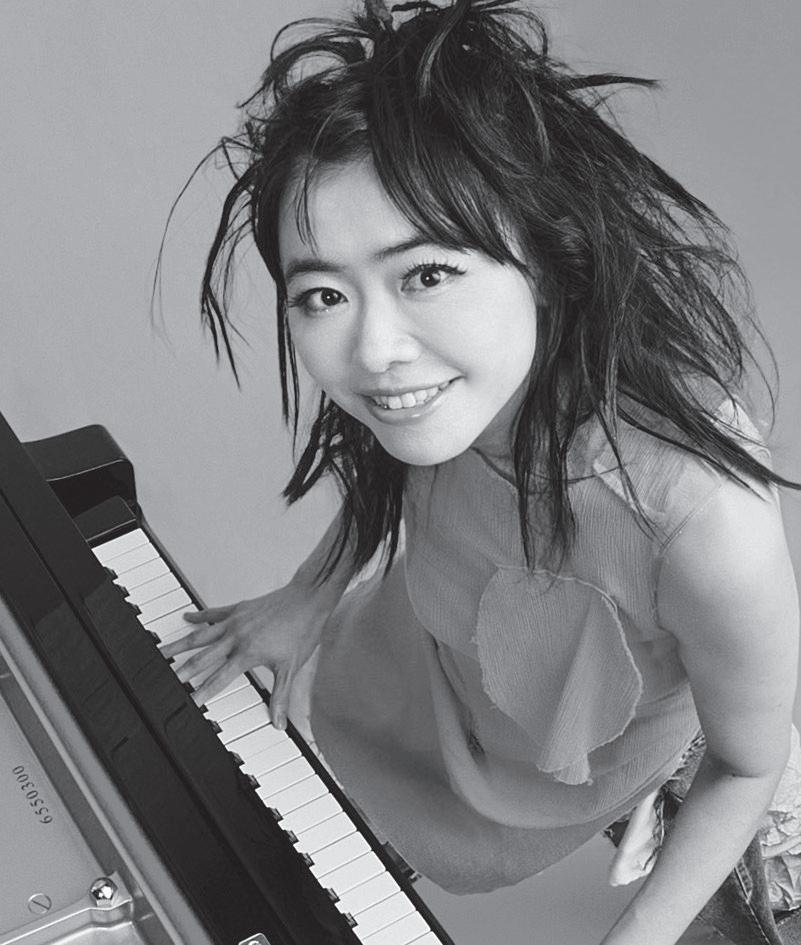
Fri, Apr 25 / 8 PM / Campbell Hall
Hiromi, piano
Adam O’Farrill, trumpet
Hadrien Feraud, bass
Gene Coye, drums
Event Sponsor: Luci & Rich Janssen
Jazz Series Lead Sponsor: Manitou Fund
Presented in association with UCSB Department of Music
Over more than 20 years as a recording artist, the jazz piano phenomenon Hiromi has shifted seamlessly from one spellbinding project to the next. In the process, she’s earned a reputation as one of the most explosive live performers in jazz history and a global ambassador for the art form. Her many triumphs include an NPR Tiny Desk Concert that has racked up 2 million views, the opportunity to represent her native Japan with a performance at the 2021 Summer Olympics in Tokyo, 2024 winner for Best Music Score for the animated feature film Blue Giant (Award of the Japanese Academy) and a Grammy Award for a collaboration with fusion hero Stanley Clarke. Her artistry is – to borrow a descriptor The New Yorker favored – “dazzling.”
In 2023, she released Sonicwonderland, debuting perhaps the most expressive, dynamic and versatile working band of her career. Called Hiromi’s Sonicwonder and featuring Hadrien Feraud on bass, Gene Coye on drums and the trumpeter Adam O’Farrill, the group furthered Hiromi’s distinctive musical alchemy: the spirit of classic jazz-rock fusion melded with classically rooted virtuosity, entrancing funk, pop flourishes and, through O’Farrill’s trumpet, acoustic jazz’s state of the art.
The album also did a remarkable job of capturing Hiromi’s mastery as a live entertainer. As The Guardian noted, “Sonicwonderland is perhaps the closest thing to Hiromi’s onstage exuberance.” But that was only the beginning.
Over the past two years, Sonicwonder has continued to tour and work together consistently, advancing
their deep chemistry and fearless sense of interplay. The results can be heard on Hiromi’s new Concord release and 13th studio full-length album, OUT THERE, in which the group’s powerful rapport meets the pianist’s astonishing abilities as a composer on equal footing.
As Hiromi explains, “On Sonicwonderland, I had the concept and the songs first, and I was looking for the people who could play the music in the ideal way that I had in my mind. Being with this group for well over a year,” she continues, “playing a lot of shows together and understanding each other, I started to see more of their strength and what shines in them the most. So I started to write music with them in mind.”
Sonicwonder brings together world-class musicians of fascinatingly diverse backgrounds. French-born Feraud is a fusion virtuoso who has been rightfully compared to bass god Jaco Pastorius. Coye hails from Chicago, where he grew up playing in church, and combines technical mastery with a soulful knack for groove and pocket. Brooklyn-raised O’Farrill, part of a dynasty that includes his father and grandfather, Latin-jazz titans Arturo and Chico O’Farrill, ranks among the most important and progressive trumpeters of his generation. Throughout the album, O’Farrill conjures up audacious new sonic textures through electronics – part of his toolbox that Hiromi encouraged him to develop fully. “[Bass legend and collaborator] Anthony Jackson always told me that a first-class musician can do anything,” Hiromi says. “You don’t really have to put them in one genre or one category.”
Knowing that anything she composed would be met with outstanding performances, Hiromi let her fiercest ambitions run wild when crafting the music for OUT THERE. “It all comes from curiosity,” she explains. “I think curiosity is the key to everything. How can you express yourself more? How can you write more?” The core of OUT THERE is its four-part title suite, which Hiromi would like fans to hear as a focused front-to-back listen. “I know that these days streaming gives you one song at a time,” she says, “but I hope they listen to it straight through, giving them a whole new experience.” The suite is nothing less than a tour de force and it certainly deserves undivided attention. It opens with the rapid-fire melody of “Takin’ Off,” shared nimbly on the frontline between Hiromi and O’Farrill, and traverses the sly ’70s fusion grooves of “Strollin’,” which calls to mind Herbie Hancock, George Duke and Grover Washington Jr. “Orion” follows with bold and triumphant bookends that could score a great work of science fiction. Hiromi wrote it as a kind of answer to “Polaris,” included on Sonicwonderland. Both compositions reflect the fact that “stars are a guide,” she says. “You know where you are if you look up at the sky. You can go toward an adventure; there’s nothing to be scared of.” The suite closes with “The Quest,” which unites the chopped-up rhythmic thrust of current jazz with the synth pleasures of vintage prog-rock.
Hiromi crafted the suite, chock-full of thrilling twists and turns, as a celebration of our post-pandemic moment when we can once again live with a sense of exploration. “Now is the time to go out there and find something new,” she implores. And that sense of excitement isn’t exclusive to the suite; rather, it defines OUT THERE in its entirety.
The album kicks off with the very first song Hiromi released as a recording artist back in 2003: “XYZ,” a delirious burner that, with O’Farrill’s trumpet, takes on hues of avant-garde-leaning Blue Note LPs from the 1960s. “That has always been a very special song for me and for fans,” she says, calling it a “signature Hiromi song.” Her other song “Yes! Ramen!!” is a tribute to Hiromi’s all-time favorite food and another wild ride boasting synth hooks, ska-tinged rhythms, revved-up disco beats, a big Black Sabbath-sounding riff, leading-edge jazz improvisation, contemporary classical and more. The band shares Hiromi’s love for ramen, especially O’Farrill and Coye, and they try to hit as many spots as possible on tour. “For this song, it was more like putting a soundtrack to the film I had in my head,” she says. “When the landscape changes, then different music comes in –different restaurant, different style.”
Hiromi’s “Pendulum” appears in two versions including a vocal take featuring Michelle Willis, best known for her collaborations with Becca Stevens and the late David Crosby. Hiromi had long been a fan of Willis’ work, and calls her a “beautiful voice, and a very strong musician.” The pianist’s arrangement is ballad-to-midtempo jazz kissed by sensual neo-soul and the original lyrics, co-written by Willis and Hiromi, are “about life,” the pianist says – “the come and go of it. Life is like a wave, or like a kind of pendulum. You have to go with the flow.”
Later in the album, Hiromi offers a beautiful and contemplative solo-piano performance of “Pendulum” which she’s been including in her live sets for a couple of years now. “What I really enjoy the most with solo piano is playing the softest dynamic that I can play,” she explains. She loves to savor the sound of her instrument in this quietude, also offering her audience a moment of rest following an especially pyrotechnic ensemble moment. The finale of Hiromi’s new album is also OUT THERE’s most delightful track, “Balloon Pop,” which is as much of an earworm as anything currently on the Hot 100. (And with O’Farrill on trumpet, its hummable theme summons up Miles Davis’ hook-filled ’80s recordings.)
And therein lies the secret to Hiromi’s monumental success – her rare ability to deliver not only showstopping virtuosity but also sheer joy. “I love playing ‘Balloon Pop,’” she says. “Every audience goes home singing this lick – well after the show has finished. The chord changes are challenging, but still it doesn’t sound complicated. I just wanted to write some songs that are singable, danceable and fun.”

photo: Robby Klein
Sun, Apr 27 / 7 PM
Larkin Poe, the dynamic sister duo known for their electrifying blend of Southern rock, blues and Americana, emerges once again onto the musical landscape with their eagerly anticipated album, Bloom Following their Grammy-winning success with Blood Harmony in 2024, the duo has ventured deeper into their musical journey, crafting a collection of songs that resonate with introspection, authenticity and a profound connection to their roots in American music.
The album Bloom marks a significant evolution in Larkin Poe’s creative journey. All the songs were born from collaborations between Megan Lovell, Rebecca Lovell and co-producer Tyler Bryant, reflecting a synergy that extends beyond mere musical partnership. As Rebecca observes, “Bloom is about finding oneself amidst the noise of the world, about wholeheartedly embracing the flaws and idiosyncrasies that make us real.” This theme of self-acceptance is central to the album’s narrative, celebrating individuality against a backdrop of contemporary blues and rock influences.
Reflecting on the album’s thematic core, Megan explains, “In one way or another, pretty much all of the songs on this album are about finding yourself, knowing yourself, and separating the truth of who you are from societal expectations.” This sentiment permeates the first song, “Mockingbird”, a contemplative piece on personal growth and staying true to oneself amidst life’s twists and turns. Rebecca adds, “‘Mockingbird’ is a tender
reflection on the perpetual journey of becoming. When viewed through a reductive lens, the inevitable countless missteps I’ve taken in my life can feel disheartening – but looking too long in the rearview can be harmful to one’s future. Choosing to find the hidden meaning in the pit stops and messy detours that life sometimes demands has felt like a very important perspective shift.”
Known for their sincere songwriting, the Lovell sisters place a spotlight on storytelling with Bloom. Each track unfolds like a chapter, their lyrics winding deeper and deeper towards the heart of Larkin Poe. Rebecca reflects, “Songwriting takes center stage with this record; the lyrics hit home in a real way.” Their influences from ‘70s Southern rock are unmistakable, yet woven into a modern context that feels simultaneously nostalgic and fresh. The album’s lead single, “Bluephoria”, captures the essence of Larkin Poe’s genre-bending exploration. Rebecca describes, “It’s a rock ’n’ roll rumination on the duality of the human experience, where suffering and joy intertwine to create meaning.” With lyrics inspired by blues legend Furry Lewis, the track exemplifies their ability to blend personal narratives with universal themes while the riff-heavy, psychedelic-flavored musical underpinnings make it primed for take off into the stratosphere on the live stage.
Another standout track, “If God Is A Woman,” melds lush sonic landscapes with lyrics that ground listeners in contemporary questions through the blues-soaked sounds of the Mississippi hill country. Meanwhile, the gritty rock anthem and punk energy of “Pearls”
addresses the challenges of maintaining authenticity in a digital age where public personas are under constant scrutiny. It’s a testament to Larkin Poe’s willingness to confront modern realities while staying true to their musical heritage.
Closing the album is “Bloom Again,” a poignant love song in the style of the Everly Brothers, showcasing the sisters’ harmonies in a deeply personal light. Megan fondly recalls, “One of our friends and heroes, Mike Campbell, suggested we write a song following in the footsteps of Phil and Don Everly to showcase our sister harmonies; we took his counsel to heart, and ‘Bloom Again’ was born.” It’s a fitting finale that leaves listeners with a sense of catharsis and a desire for more.
With their distinctive blend of poetic lyricism, masterful instrumentation and soulful harmonies, Bloom not only cements Larkin Poe’s status as musical innovators, but also reaffirms their commitment to crafting meaningful, soul-stirring music. As modern torchbearers of American roots music, the Lovell sisters continue their journey of self-discovery and celebration of the authentic self. With this album, Larkin Poe invites us to bloom alongside them, embracing the beauty of growth and the richness of their American musical heritage.
Parker Millsap quickly made a name for himself with his captivating live performances, soulful sound, and character-driven narratives. He’s had a string of successes including an appearance on CONAN, a performance with Elton John at the Apple Music Festival, an Austin City Limits taping and an Americana Music Association nomination for Album of the Year. He’s shared the stage with folks like Jason Isbell, Shovels & Rope, Patty Griffin, Houndmouth and many others.
Millsap’s early releases showcased a mastery of acoustic folk rock, with their flourish for revelation and fiery dynamics. Be Here Instead, his 2021 release produced by John Agnello, hinted at the wildness to come while exploring newer, more personal songwriting styles. Millsap’s newest album, Wilderness Within You, is a natural step in his evolution which interweaves threads of his musical past and newer influences to gorgeous effect.
Thanks


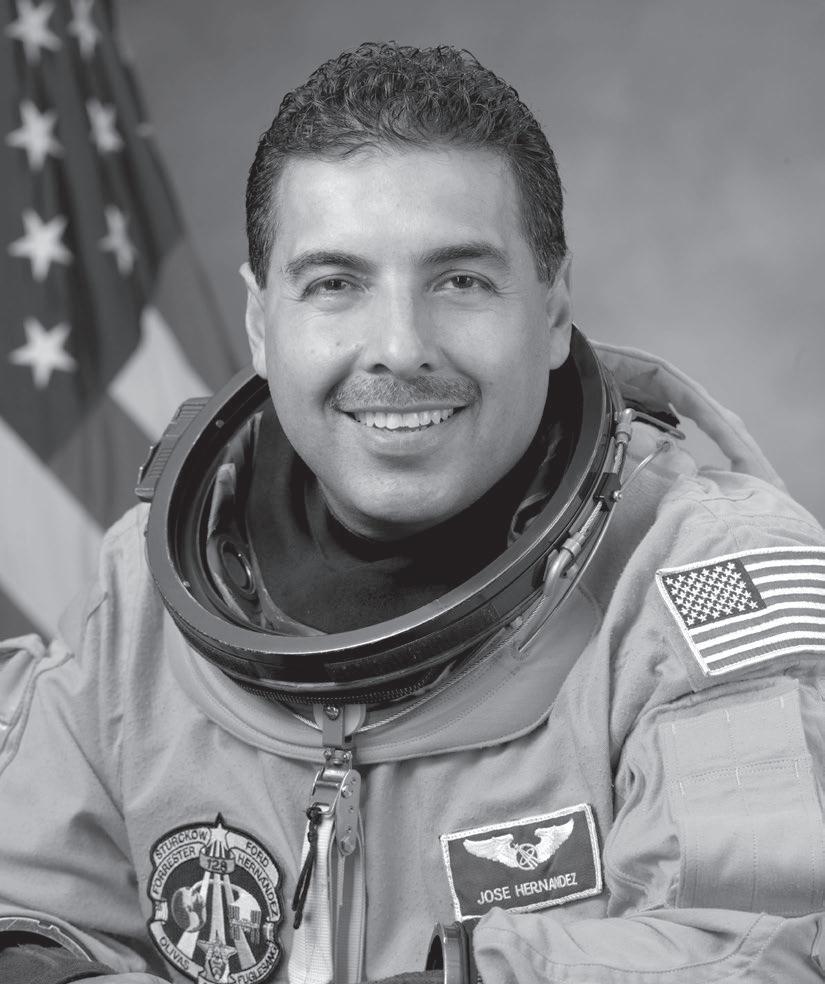
Tue, Apr 29 / 7:30 PM / Campbell Hall
Justice for All Lead Sponsors: Marcy Carsey, Connie Frank & Evan Thompson, Eva & Yoel Haller, Dick Wolf, and Zegar Family Foundation
Presented in association with the following UCSB partners: Office of Education Partnerships and the Departments of Chicana and Chicano Studies, Engineering, and Mathematics
From migrant farmworker to NASA astronaut, Dr. José Hernández embodies the power of perseverance and the pursuit of dreams. The son of Mexican immigrants, Hernández spent his childhood traveling the “California circuit,” working in the fields alongside his family. He didn’t learn English until he was 12, yet he went on to earn a degree in electrical engineering from the University of the Pacific and a master’s in signals and systems engineering from UC Santa Barbara.
Inspired by hearing astronaut Franklin Chang-Diaz on a transistor radio while hoeing sugar beets, Hernández set his sights on space. In 2004, he was selected as a NASA astronaut, and in 2009, he served as a mission specialist aboard Space Shuttle Discovery’s STS-128 mission. During the 14-day flight, he and his crew delivered and installed over seven tons of equipment to the International Space Station, helping to complete its construction. Hernández also operated the robotic arm, playing a key role in the mission’s success.
Before NASA, Hernández spent 17 years at Lawrence Livermore National Laboratory, where he co-developed the first full-field digital mammography system for early breast cancer detection. His work helped advance computer-aided diagnosis, earning recognition from the U.S. Department of Energy. He also worked in nuclear non-proliferation, helping implement a U.S.-Russia agreement to repurpose dismantled nuclear weapons.
Following his time at NASA, Hernández transitioned into leadership and public service. He founded Tierra
Luna Engineering, an aerospace consulting firm that works on space exploration, renewable energy and STEM education initiatives. He has served as a visiting professor at Universidad Autónoma del Estado de Puebla (UPAEP) in Puebla, Mexico, mentoring students and supporting the development of Mexico’s first university-built satellite. A dedicated advocate for education and opportunity, Hernández was appointed as a Regent of the University of California by Governor Gavin Newsom in 2021.
Hernández has shared his inspiring journey through multiple books, including his autobiography, Reaching for the Stars, which became the basis for the Amazon Prime film A Million Miles Away, starring Michael Peña. Hernández continues to inspire audiences worldwide, proving that with determination and hard work, no dream is out of reach.
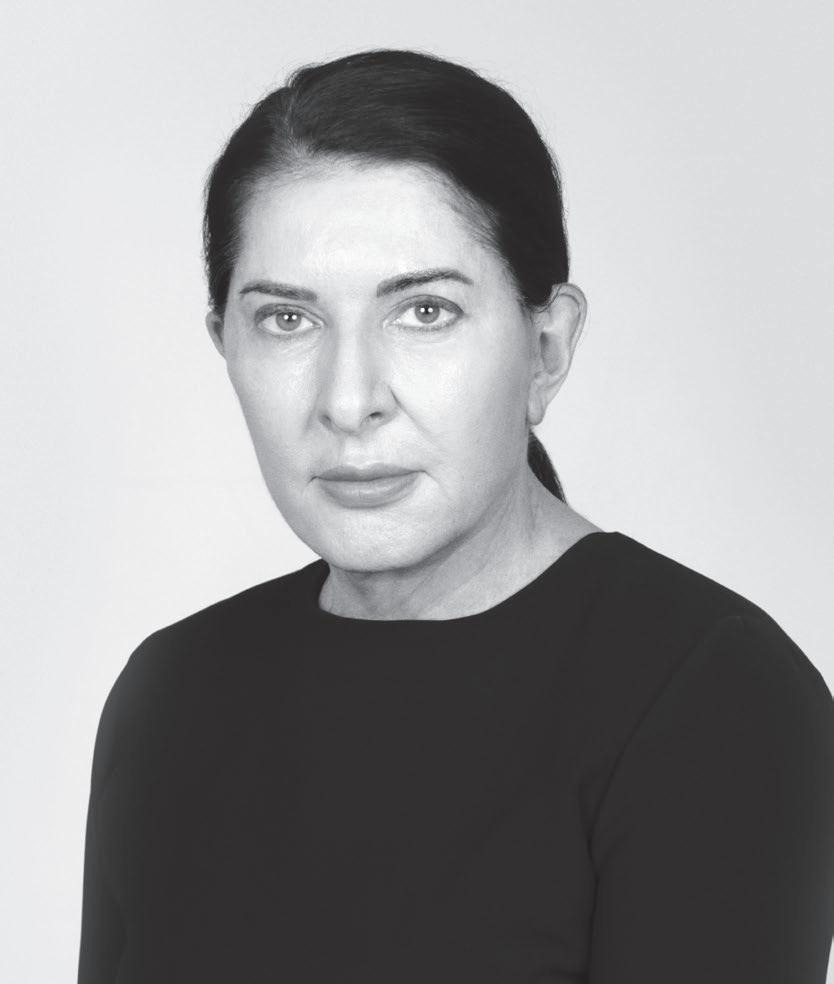
Tue, May 6 / 7:30 PM / Lobero Theatre
Since the beginning of her career in Belgrade during the early 1970s, Marina Abramović has pioneered performance as a visual art form. She created some of the most important early works in this practice, including Rhythm 0 (1974), in which she offered herself as an object of experimentation for the audience, as well as Rhythm 5 (1974), where she lay in the centre of a burning five-point star to the point of losing consciousness. These performances married concept with physicality, endurance with empathy, complicity with loss of control, passivity with danger. They pushed the boundaries of self- discovery, both of herself and her audience. They also marked her first engagements with time, stillness, energy, pain, and the resulting heightened consciousness generated by long durational performance.
In 2012, she founded the Marina Abramović Institute (MAI), a non-profit foundation for performance art, that focuses on performance, long durational works, and the use of the ‘Abramović Method’. MAI is a platform for immaterial and long durational work to create new possibilities for collaboration among thinkers of all fields. Abramović was one of the first performance artists to become formally accepted by the institutional museum world with major solo shows taking place throughout Europe and the US over a period of more than 25 years. In 2024, Marina opened her first solo exhibition in China, Transforming Energy, at the Museum of Modern Art,
Shanghai. In 2023, Abramović was the first female artist to host a major solo exhibition in the Main Galleries of the Royal Academy of Arts in London. This show will tour throughout Europe and Asia through 2026. Her first European retrospective ‘The Cleaner’ was presented at Moderna Museet in Stockholm, Sweden in 2017, followed by presentations at the Louisiana Museum of Modern Art in C/openhagen, Denmark, Henie Onstad, Sanvika, Norway (2017), Bundeskunsthalle, Bonn, Germany (2018), Centre of Contemporary Art, Torun (2019), and concluding at the Museum of Contemporary Art Belgrade, Serbia (2019). In 2010, Abramovic had her first major U.S. retrospective and simultaneously performed for over 700 hours in The Artist is Present at the Museum of Modern Art in New York.
In 1997, Abramović was awarded the Golden Lion Award for Best Artist for her performance Balkan Baroque at the Venice Biennale. In 2006, she received the U.S. Art Critics Association Award for Best Exhibition of Time Based Art for her performance Seven Easy Pieces at the Guggenheim in New York City. In 2008, Abramović received the Austrian Decoration of Honor for Science and Art in Vienna. In 2011, she was awarded Honorary Royal Academician status by The Royal Academy in London. In 2013, she was awarded the Ordre des Arts et des Lettres Officer for her work in Bólero in Paris and in 2022, she was promoted to Ordre des Arts et des Lettres Commander. In 2014, Abramović was named one of The 100 Most Influential People by TIME Magazine. In 2021, she was awarded the Princess de Asturias Award for the Arts in Spain and the Golden Medal for Merits from
the Republic of Serbia. In 2023, she was awarded the Sonning Prize from the University of Copenhagen, and officially received the award in 2024.
Pico Iyer is the author of 17 books, translated into 23 languages, and dealing with subjects ranging from the XIVth Dalai Lama to Islamic mysticism and from globalism to the Cuban Revolution. They include such long-running sellers as Video Night in Kathmandu, The Lady and the Monk, The Global Soul and The Art of Stillness The Half Known Life: In Search of Paradise (2023) was a national bestseller. Aflame: Learning from Silence, on his first 32 years with a community of Benedictine monks in Big Sur, was published on January 14, 2025. He has also written the introductions to more than 70 other books, the liner notes for many Leonard Cohen albums and Criterion Collection movies and a screenplay for Miramax. Since 1986 he has been a regular essayist for Time, The New York Times, Harper’s, The New York Review of Books and many others.
His four TED talks have received more than 11 million views and he has been featured in program-length interviews with Oprah, Krista Tippett and Larry King, among others. Born in Oxford, England in 1957, Iyer was a King’s Scholar at Eton and was awarded a Congratulatory Double First at Oxford, where he received the highest marks of any student on English Literature at the university. He received a second master’s degree at Harvard and was recently a Ferris Professor at Princeton.
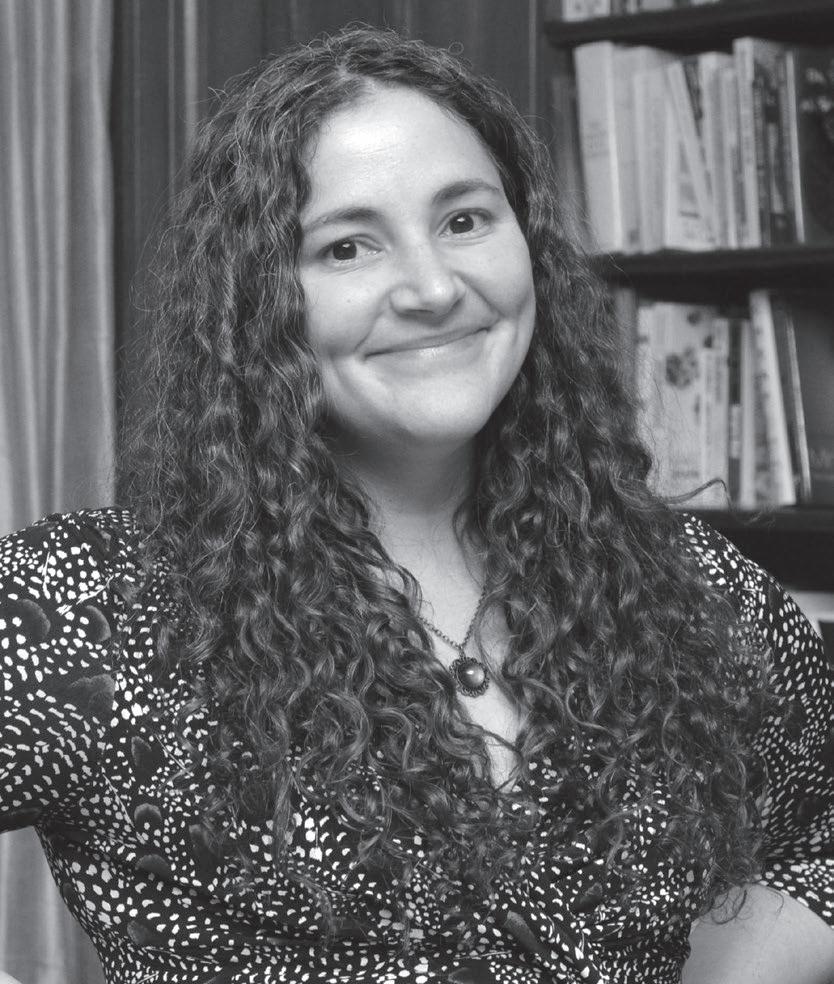
Wed, May 7 / 7:30 PM / Campbell Hall
Connie Frank & Evan Thompson, Eva & Yoel Haller, Dick Wolf, and Zegar Family Foundation
Presented in association with UCSB Department of Psychological & Brain Sciences
Dr. Laurie Santos is a psychologist and an expert on human cognition, its origins and the evolutionary biases that influence our all too imperfect life choices. Her work centers around how behavioral change through positive psychology can lead to a happier and more fulfilling life. She is the Chandrika and Ranjan Tandon Professor of Psychology and the former Head of Silliman College at Yale University. Her course, Psychology and the Good Life, teaches what the science of psychology says about how to make wiser choices for a better life. The class is Yale’s most popular course in over 300 years and has been adapted into a free Coursera program that has been taken by over four million people to date.
Santos is the host of the podcast The Happiness Lab. She makes the case that humans are drastically wrong about what makes us happy and often do the exact opposite of what will make our lives better. Based on her incredibly popular course at Yale, she presents the latest scientific research in an effort to help listeners rethink happiness and guide them toward their best lives. Launched in 2019, the podcast has been downloaded over 100 million times. From her research, Santos speaks to how we are biologically programmed to be motivated by sex, to be deeply influenced by other people and to repeat our mistakes. Using evidence from the animal kingdom to help explain our sometimes illogical behaviors, she provides advice on how to engage our uniquely human faculties to counteract evolution and lead better lives.
Santos has been featured in numerous news outlets including The New York Times, NBC Nightly News, The Today Show, CBS This Morning, NPR, GQ Magazine, Slate, CNN and Oprah Magazine. She is a winner of numerous awards both for her science and teaching from institutions such as Yale and the American Psychological Association. She has been featured as one of Popular Science’s Brilliant 10 and was named TIME’s Leading Campus Celebrity.

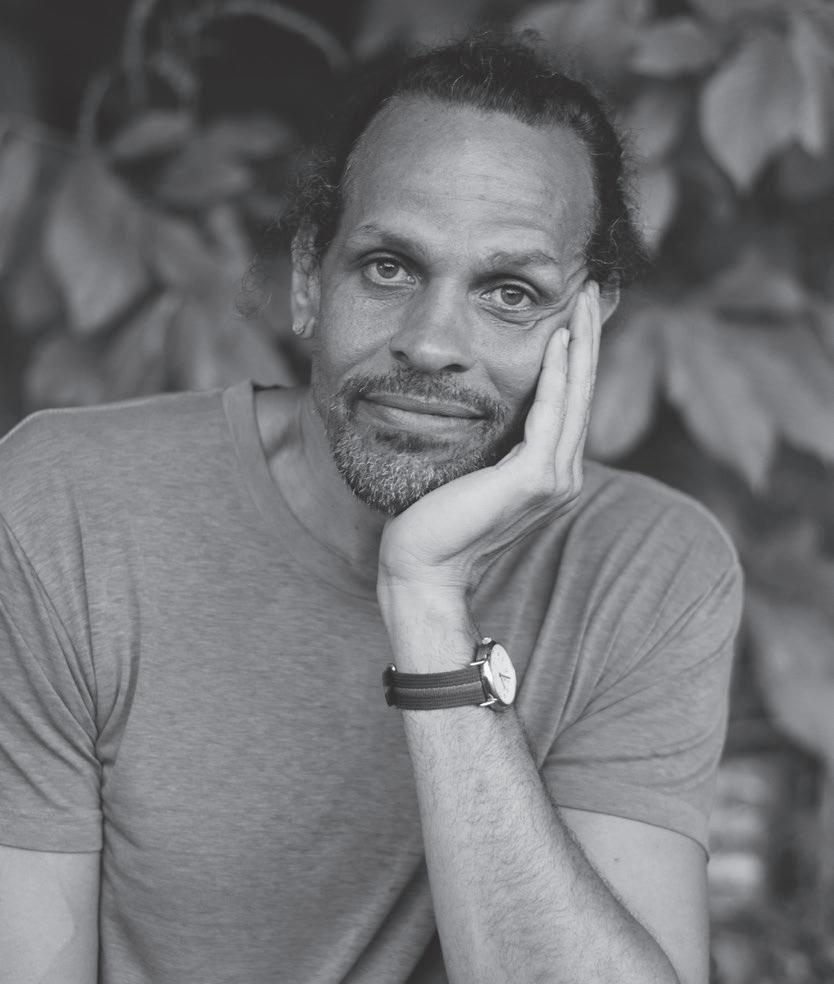
Thu, May 8 / 7:30 PM / Campbell Hall

Co-presented with UCSB Library as part of UCSB Reads 2025, with support from the Office of the Executive Vice Chancellor
Ross Gay is the author of four books of poetry: Against Which; Bringing the Shovel Down; Be Holding, winner of the PEN American Literary Jean Stein Award and Catalog of Unabashed Gratitude, winner of the 2015 National Book Critics Circle Award and the 2016 Kingsley Tufts Poetry Award. In addition to his poetry, Ross has released three collections of essays – The Book of Delights was released in 2019 and was a New York Times bestseller; Inciting Joy was released in 2022 and his newest collection, The Book of (More) Delights, was released in 2023.
An award-winning program of the UCSB Library, UCSB Reads brings the UCSB and Santa Barbara communities together each year by reading a common book that explores compelling issues of our time.
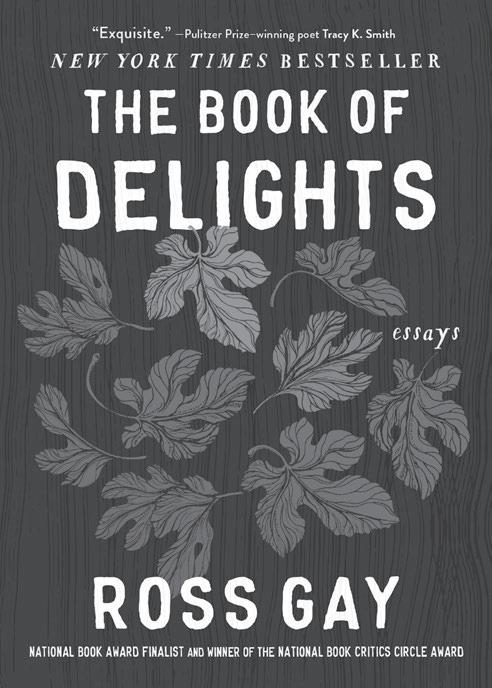

Books are available for purchase in the lobby and a signing follows the event

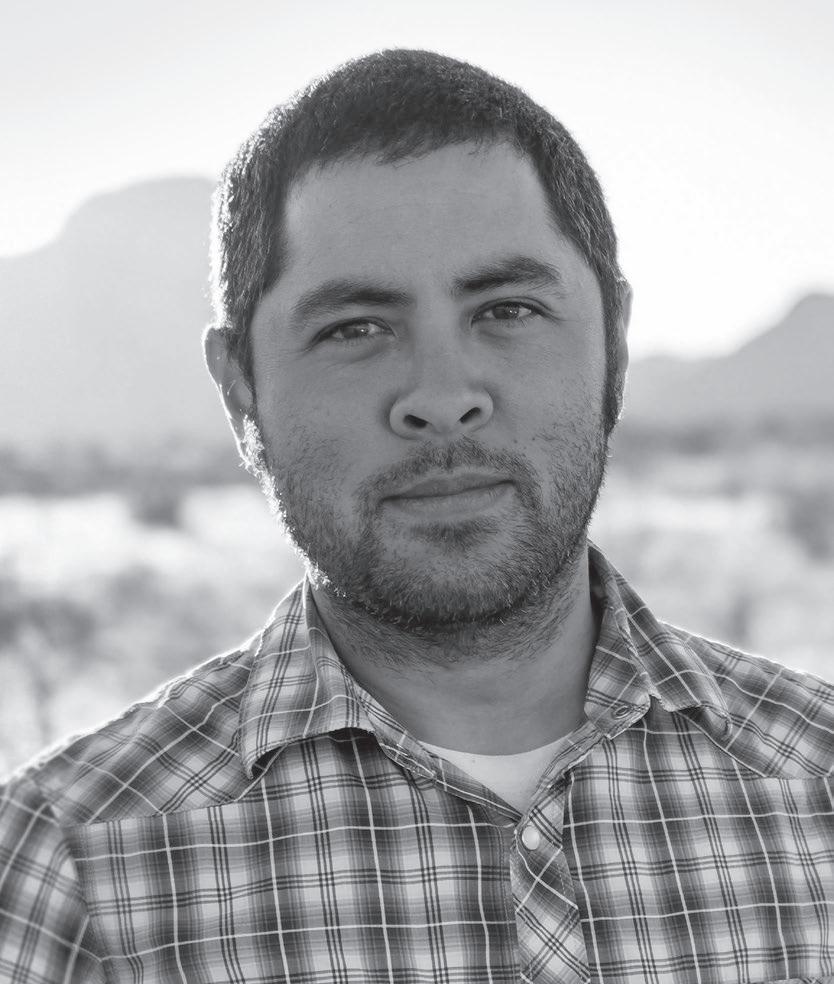
Thu, May 15 / 7:30 PM / Campbell Hall
Justice for All Lead Sponsors: Marcy Carsey, Connie Frank & Evan Thompson, Eva & Yoel Haller, Dick Wolf, and Zegar Family Foundation
Presented in association with UCSB Departments of Anthropology, Chicana and Chicano Studies, and Sociology
Jason De León creates public dialogue, exhibitions and media about undocumented migration and the ongoing humanitarian crisis at the U.S.-Mexico border. He has been recognized with a MacArthur Foundation Fellowship for his work as an anthropologist and scholar examining the inequalities and brutalities of human migration through a variety of lenses. De León shines a light on the human consequences of U.S. immigration and border policies, offering a counterpoint to public media perception of migrants and putting names, faces and stories to the thousands of individuals who have died in their attempt to reach the United States.
De León began his career as an archaeologist studying ancient tools in Mexico. During the course of archaeological fieldwork, he met many people in Mexico who shared their often harrowing stories of migration with him. Inspired by those conversations, he began to study undocumented border crossings from archaeological, ethnographic, forensic and visual perspectives. In his work, he investigates the lived experiences of people moving across various landscapes and borders to explain how poverty, violence, political instability and climate change shape and fuel our current global migration crisis. For his internationally renowned work in shedding light on the complexity of migration and U.S. immigration policies, De León was awarded a MacArthur Fellowship in 2017.
Between 2000 and 2022, the bodies of more than 3,600 border crossers were recovered in the deserts of southern Arizona with many more individuals
still missing. In his award-winning book, The Land of Open Graves, De León interrogates the U.S. border enforcement strategy known as Prevention Through Deterrence (PTD). This federal strategy uses hypersecurity measures around urban border zones to force migrants to cross through remote and depopulated regions where the natural environment functions as an impediment to human movement. This policy has resulted in the deaths and disappearances of thousands of people. Drawing on interviews from survivors and two decades of anthropological research, he concludes that not only did PTD fail to deter migration, but it turned border crossings into a deadly and violent social process experienced by millions of people. Recent increases in security measures at the U.S.-Mexico border and across Mexico has led to a rise in robbery, extortion and assault that has forced people to now rely on transnational gangs such as MS-13 for protection while migrating.
In his book Soldiers and Kings, De León outlines how human smuggling has changed since 2014 following a joint effort by Mexico and the United States to crack down on migration from Central America. Through the lens of anthropology, Soldiers and Kings provides an intimate and up-close look at the daily (and often dangerous) lives of those charged with getting people past immigration security forces. Human smuggling is a billion-dollar global industry that has long been understudied and misunderstood. Drawing on years of experience documenting the difficult and often brutal lives of the many Honduran smugglers he befriended in Mexico, De León illuminates the complicated nature
of the border-crossing industry while introducing the reader to the many players who are caught up in its vicious cycle. Hailed as “An enlightening, frightening, unforgettable read” by Sandra Cisneros (The House on Mango Street), Soldiers and Kings won the National Book Award for Nonfiction.
As the executive director of the Undocumented Migration Project, a non-profit research, arts and education collective, De León raises awareness about migration issues while also working to help reunite families with their loved ones who died or disappeared while migrating. With the Undocumented Migration Project, De León has sponsored and organized the participatory art installation Hostile Terrain 94 (HT94), which is composed of more than 3,800 handwritten toe tags. Each tag represents a migrant who died trying to cross the Sonoran Desert of Arizona between the mid-1990s and 2022, showing the exact locations where remains were found. With exhibitions in more than 130 locations worldwide since 2020, the project raises global awareness about the realities of migration and the human costs of American border policies. De León’s work with the Undocumented Migration Project and his academic writing has been featured in numerous media outlets including NPR, The New York Times, Los Angeles Times, Al Jazeera, BBC and Vice.
De León is a professor of anthropology, Chicana/ Chicano and Central American studies at the University of California, Los Angeles. De León is a 2017 MacArthur Foundation Fellow and a National Geographic Explorer. He received his bachelor’s degree in anthropology from UCLA in 2001 and his Ph.D. in anthropology from Penn State University in 2008.
Free copies of Soldiers and Kings are available in the lobby while supplies last (first-come, first-served; one per household) and a signing follows the event



Silent Film with Live Musical Performance by Wynton Marsalis and Cecile Licad
Sat, May 17 / 7:30 PM / Arlington Theatre
Film directed by Dan Pritzker, 2010, 90 min.
The film is rated “R” - Restricted (Some Sexual Content), anyone under age 17 must be accompanied by parent or guardian
Major Sponsor: Jody & John Arnhold
Jazz Series Lead Sponsor: Manitou Fund
Presented in association with UCSB Department of Music
While researching and writing the 2019 feature film Bolden, director Dan Pritzker’s mythical interpretation of the life and times of New Orleans jazz pioneer Charles “Buddy” Bolden, Pritzker went to see Charlie Chaplin’s City Lights with live musical accompaniment by the Chicago Symphony. It took his breath away; it was unlike anything he’d ever seen. At that moment he decided to write LOUIS, a silent film about a little boy named Louis who wanted to learn to play the trumpet.
Realized with the help of Oscar-winning cinematographer Vilmos Zsigmond, Pritzker took on the mammoth task of directing both LOUIS and Bolden concurrently. “I thought that if I was going to shoot one film, I might as well try to shoot two.” He continued, “I’m not sure I’d ever seen a silent film in its entirety before City Lights. I’d seen my favorite, The Kid, in bits and pieces but never all the way through. For LOUIS, I watched all the Chaplin films, then the Buster Keaton and Harold Lloyd films – I went with the funny stuff first, and then I started watching every silent film I could find.”
Pritzker knew from the outset that he wanted to work with jazz great Wynton Marsalis. Within minutes of their first meeting, Wynton turned to Pritzker and said, “So if you’re going to do a film about Bolden, it’s got to be a myth.” Pritzker knew Marsalis understood the mission, and Marsalis came on as executive producer and composer/performer for both LOUIS and Bolden
“The idea of accompanying a silent film telling a mythical tale of a young Louis Armstrong was appealing to me,” says Marsalis. “Of course, calling it a silent film is a misnomer – there is plenty of music, and jazz is like a conversation between the players so there’ll be no shortage of dialogue.”
Of classical pianist Cecile Licad, music writer Jeff Distler notes, “Licad may have been groomed under Rudolf Serkin’s exacting tutelage, but her visceral, exuberant [Louis Moreau] Gottschalk playing evokes Vladimir Horowitz’s diabolical art.”
Marsalis adds, “I look forward to playing with Cecile. The contrast between Gottschalk’s music and jazz can be a revelation to those unfamiliar with either Gottschalk or jazz.” For Pritzker, “The combination of Cecile playing Gottschalk and Wynton and his ensemble playing jazz reflects the wide-ranging nature of the American musical landscape.”
The late Zsigmond commented at the time of filming, “This was a very interesting project for me because I always wanted to do a silent film and in this era, it’s highly unusual for one to be made. I also love working in black-and-white. The most important thing for me in cinematography is the light. Good lighting shouldn’t be visible; it should seem natural.”
Shot in Wilmington, North Carolina and on location in New Orleans, LOUIS was filmed in color because,
according to Zsigmond, “Today’s black-and-white film isn’t as good as color when it comes to grain and texture. The color film that we’re using now is much more perfect than black-and-white film. To do a real black-and-white film it’s better to start in color and then take colors out in the process. We did a black-and-white film with a hint of color.” LOUIS features Anthony Coleman in the title role, Jackie Earle Haley as the wicked Judge Perry, Shanti Lowry as the beguiling Grace Lamennais and Carmen de Lavallade as the scheming Comtesse Willie Piazza.
Wynton Marsalis is a world-renowned trumpeter, bandleader, composer and a leading advocate of American culture. He presently serves as Managing and Artistic Director of Jazz at Lincoln Center, the Director of Jazz Studies at The Juilliard School and President of the Louis Armstrong Educational Foundation. Born in New Orleans, Louisiana in 1961, he is the son of renowned jazz pianist and music educator Ellis Marsalis, Jr. He started practicing trumpet at age 6 and grew up playing in an unusually diverse mix of musical ensembles – including everything from New Orleans traditional marching bands to funk bands, concert bands, symphonic orchestras and small jazz ensembles. Just one year after moving to New York City to attend The Juilliard School at age 17, Marsalis joined the legendary Art Blakey & The Jazz Messengers.
In 1981, Marsalis formed a quintet and began touring all over the country and the world. To date, he has performed over 5,200 concerts in 845 distinct cities and 64 countries across the globe. Over the past four and a half decades, Marsalis has rekindled and animated widespread international interest in jazz through performances, educational activities, books, curricula and relentless advocacy on public platforms. Today, Marsalis continues the renaissance that he sparked in the early 1980s, attracting new generations of young talent to jazz and illuminating the mythic meanings of jazz fundamentals.
Marsalis has been called the “Pied Piper” of jazz and the “Doctor of Swing.” Since his recording debut in 1982, he has released over 110 jazz and classical recordings and won many awards, from a home cooked meal to honors that require a tuxedo. He regularly performs in the most prestigious concert halls and, from time to time, till all hours of the morning in the most inconspicuous of local clubs. From the very beginning of his career,
education has been vital to his mission. He has taught and mentored countless musicians who have gone on to play, teach and advocate in their own brilliant ways.
Marsalis performs and composes across the entire spectrum of jazz and has written jazz-influenced chamber music and symphonic works for revered classical ensembles across the US and abroad. He is inspired to experiment in an ever-widening palette of forms and concepts that constitute some of the most advanced thinking in modern jazz and in American music on the broad scale. His body of original work includes (but is not limited to) over 600 songs and movements, 11 dance scores, 13 suites, four symphonies, two chamber pieces, two string quartets, a jazz oratorio, a fanfare and concertos for violin, tuba, trumpet and most recently, for orchestra.
Marsalis has received such accolades as The French Grand Prix du Disque, The NEA Jazz Master Award, the Marian Anderson Award and The Ken Burns American Heritage Prize. He was appointed Messenger of Peace by United Nations Secretary-General Kofi Annan (2001), awarded The National Medal of Arts (2005) and The National Medal of Humanities (2016). Britain’s Royal Academy of Music has granted Marsalis Honorary Membership. In the fall of 2009, he received France’s highest distinction, the Chevalier of the Legion of Honor. On his 62nd birthday in October 2023, he was awarded the Praemium Imperiale for Music by the Japan Art Association – Japan’s highest honor for the arts. He has received honorary doctorates from 41 of America’s top academic institutions including Harvard, Yale, Princeton and Tulane University in his hometown of New Orleans.
Marsalis is the music’s chief advocate, philosopher and performer, who is called upon at ceremonial occasions to place events in their proper historical context. To that end, he is a principal speaker in several vital documentaries on jazz and American culture and has authored many relevant essays on jazz-related topics. Between 2011 and 2014, he delivered six groundbreaking and definitive lectures entitled Hidden in Plain View: Meanings in American Music at Harvard University. In 2023, he delivered the highly esteemed Nexus Lecture in Rotterdam, Netherlands. Marsalis is the author of nine books, including two children’s books.
His core beliefs are based on jazz fundamentals: freedom and individual creativity (improvisation), collective action and good manners (swing), as well as
acceptance, gratitude and resilience (the blues). Marsalis believes music has the power to elevate our quality of life and lead us to both higher and lower levels of consciousness; that music can elevate the quality of human engagement for individuals, social networks and cultural institutions throughout the world.
Hailed as “a pianist’s pianist” by The New Yorker, Cecile Licad has captivated audiences everywhere with her daring musical instinct, mesmerizing stage presence and artistry that encompasses a wide range of musical styles and influences. Critics have hailed her as a virtuoso and praised her interpretive depth and impeccable technique.
She began her piano studies at the age of 3 and made her debut as soloist with the Philharmonic Orchestra in Manila at age 7. At 12, she was admitted to the Curtis Institute of Music in Philadelphia and studied there with three renowned teachers: Rudolf Serkin, Mieczyslaw Horszowski and Seymour Lipkin. She was a regular visitor at Marlboro where she often played duet literature with Horszowski. Serkin lauded her, “Cecile Licad has an incredible instinct for all kinds of music and seems equally at home in any style.”
In 1981, her international career was launched after receiving the prestigious Leventritt Foundation Gold Medal Award. Since then, Licad has been among the most traveled pianists in the world and has been soloist with important orchestras such as Chicago, Cleveland, Boston, Philadelphia, London Symphony and the NY Philharmonic, as well as the National Symphony and the major orchestras of Germany, Japan and Russia. Among the conductors she has worked with are Ozawa, Previn, Abaddo, Dutoit, Marriner, Ormandy and Solti. Her highly acclaimed performance with Solti of the Tchaikovsky Concerto No.1 is a popular hit on YouTube.
Her appearances as a chamber artist include some of the most celebrated instrumentalists of our time, including the violinist Nadja Salerno-Sonnenberg, cellist Alban Gerhardt and Peter Serkin, among many others. She has been a soloist with the Guarneri, Tak ács and other leading string quartets. Her Chopin CD was awarded the Grand Prix du Disque, and her recording of the music of Louis Moreau Gottschalk on Naxos has been a constant best seller.
It is the music of Gottschalk that Licad performs with LOUIS, infusing it with her dynamically expressive
playing. According to the New York Classical Review, “Licad knows Gottschalk probably better than any living pianist, and the showpiece was dazzling and tremendous fun, a triple exclamation point at the end of the evening.”

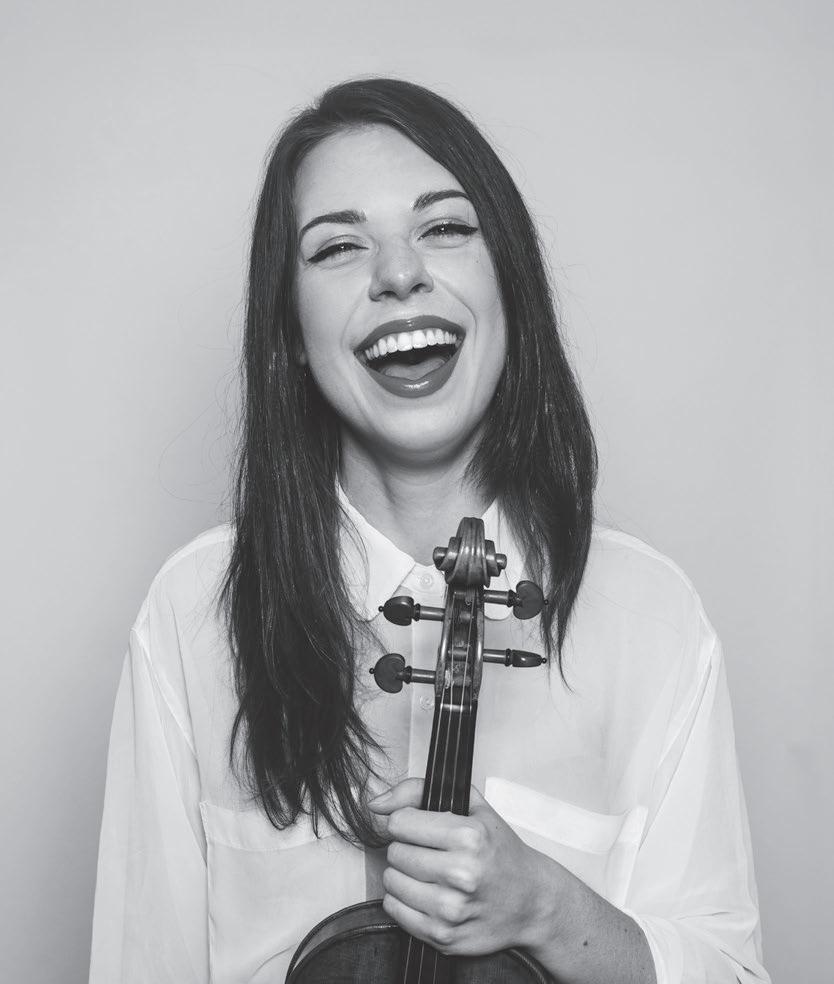
Béla Bartók: Romanian Folk Dances, Sz. 56
Jocul cu bâta
Brâul
Pe loc
Buciumeana
Poarga românească
Mărunțel
Amy Yang, piano
Tue, May 20 / 7 PM / Hahn Hall
Supporting Sponsors:
Allyson & Todd Aldrich
Marilyn & Dick Mazess
Hear & Now Series Sponsors:
Linda Sta ord Burrows
Dr. Bob Weinman
Béla Bartók (1881-1945): Romanian Folk Dances, Sz. 56
Eugène Ysaÿe: Sonata No. 4 in E minor for Solo Violin, op. 27, no. 4
Allemande: Lento maestoso
Sarabande: Quasi lento
Presto ma non troppo
Tessa Lark: Ysaÿe Shuffle
Tessa Lark: Jig and Pop
Fritz Kreisler: Chanson Louis XIII et Pavane
Fritz Kreisler: Syncopation
John Corigliano: Sonata for Violin and Piano
Allegro
Andantino
Lento
Allegro
Bartók loved folk music passionately and made a number of trips throughout rural Eastern Europe, collecting folk tunes and dances; sometimes, he even took a primitive recording machine and had rural musicians sing and play into it. But his interest in folk music was not simply an affair of the heart. He devoted much of his life to a scholarly study of these tunes, published his findings and also used some of them in his own music. Bartók’s Romanian Folk Dances date from 1915. Over the previous six years, he had systematically collected songs and fiddle tunes of Romania, finally gathering over 3,500 melodies from that region. The Romanian Folk Dances, concise arrangements and harmonizations of six of these, have become his most popular composition. Bartók originally wrote them for piano and in 1917 arranged them for salon orchestra; at the time of his death in 1945 he was planning to arrange them for full orchestra. The Dances exist in many other arrangements: the versions for violin and piano by Zoltán Székely and Joseph Szigeti are the most famous of these, but there are also arrangements for flute, organ, cafe orchestra and even an ensemble of guitars and accordions.
The six brief movements (the final dance, in two sections, is sometimes counted as two movements) come from quite specific parts of Romania, but they share some general features. There is often a steady and powerful
chordal accompaniment over which the melodic line, full of syncopations and surprising turns and harmonies, unfolds in long themes. Jocul cu bâta (Dance with Sticks) features a strongly-accented main theme and pungent harmonies. The very brief Brâul (Waistband Dance) takes its name from the cloth belt worn by the dancers. Pe loc (which translates In One Spot) is a stamping dance in which the dancers do not move from one spot. Buciumeana (Hornpipe Dance) is built on a soaring, rhapsodic melody which is stated and then repeated. The lively Poarga Românească (Romanian Polka), a children’s dance, jumps back and forth between 2/4 and 3/4 throughout, while the concluding Mărunțel is a swirling fast dance. In the score, Bartók notes that such a dance uses “very small steps and movements.” Given the blistering pace of this music, the dancers would need to use very small steps indeed.
Eugène Ysaÿe (1858-1931):
Sonata No. 4 in E Minor for Solo Violin, op. 27, no. 4
Eugene Ysaÿe was one of the finest violinists of all time, famed for his profound and original musical intelligence, consummate technique and rich sound. A student of Henri Vieuxtemps and Henryk Wieniawski, Ysaÿe was a true champion of new music: he gave the premieres of the Franck Sonata and the Chausson Poeme, both of which were dedicated to him, and his string quartet gave the first performance of the Debussy Quartet. Ysaÿe was also a conductor and led the Cincinnati Symphony Orchestra from 1918 to 1922 as well as a composer who wrote eight violin concertos, two operas and many shorter works. Ysaÿe was so greatly admired as a man and artist that his funeral in 1931 became the occasion for national mourning in Belgium.
Ysaÿe’s set of six sonatas for unaccompanied violin dates from 1924. Ysaÿe had two purposes in this music: he wanted to write a cycle of six works for unaccompanied violin in the manner of Bach’s music for solo violin and he dedicated each sonata to a different violin virtuoso, trying to capture something of that performer’s style in “his” sonata. The list of dedicatees includes some very distinguished names such as Szigeti, Kreisler, Enesco and Thibaud as well as two whose fame has not survived, Matthew Crickboom and Manuel Quiroga. He was so fascinated by the idea of adapting these pieces to individual performers that he composed this music almost overnight: he went up to his room with instructions that he was not to be disturbed (meals were sent up to him) and when he came down 24 hours later, he had sketched all six sonatas.
Ysaÿe dedicated his Sonata No. 4 in E Minor to Fritz Kreisler (1875-1962), one of the best-loved violinists who ever stepped onto a stage. Though virtuoso performers have a reputation for jealousy and egotistic rivalry, Ysaÿe and Fritz Kreisler were quite good friends. Kreisler, 17 years younger, had grown up idolizing Ysaÿe’s playing; in 1899, when Kreisler was 24, Ysaÿe heard the young man play and it was now his turn to be astonished. The two became friends and colleagues and often played string quartets together at informal gatherings. Kreisler in fact returned Ysaÿe’s dedication of this sonata to him, by dedicating an unaccompanied violin work of his own –the Recitativo and Scherzo-Caprice, Opus 6 – to Ysaÿe.
Kreisler was not known for his performances of Bach (though he recorded the Double Concerto in D Minor with Efrem Zimbalist in 1915). He did, however, compose a number of pieces in the manner of various baroque composers and Ysaÿe makes a nod in this direction by including two movements – Allemande and Sarabande – that are part of the 17th-century instrumental suite. Though the titles might have come right out of Bach, the slow-slow-fast sequence of movements does not. The introduction of the Allemande alternates powerful gestures with delicate, almost haunting passagework and the main subject of this music is in the unexpected meter of 3/8 – its noble melodic line and powerful chording sound distinctly “Bach-like.” The Sarabande features a one-measure “ghost” theme that repeats throughout as a sort of ground bass; Ysaÿe encases this within music that grows increasingly complex, then falls away to a near-silent close. The finale is the most overtly Bach-like of the three movements. It has some of the same perpetual-motion quality of the last movements of all three of Bach’s unaccompanied sonatas, yet it also manages to sound like the music of Fritz Kreisler, which makes a very pleasing combination. Rather than being in the binary form Bach favored for such movements, this one is in ternary form and its middle section recalls the opening Allemande. Ysaÿe sets this movement in the unusual meter 5/4, then changes meters constantly in the breathless final seconds.
Jig and Pop
Program notes by Tessa Lark
Ysaÿe Shuffle is a quick musical double-entendre, shuffling motives and form from the Finale of Ysaÿe’s Sonata No. 4 and amply employing what’s known in fiddle culture as a “shuffle” bowing. It was written for
Carolyn Lowenthal as a result of her generosity toward the Irving M. Klein International Strings Competition; Carolyn is a violinist in her spare time, and I wrote this as a sort of etude to introduce her to fun fiddling techniques like the “chop,” various double-stopping and, of course, the “shuffle.”
Jig and Pop was inspired by a fiddle-sounding motif that composer/bassist, Michael Thurber, asked me to play and improvise on for one of his pop songs. The bustling optimism immediately sparked more ideas for this piece, a virtuosic moto perpetuo inspired by the feel of an Irish fiddle master playing a simple tune over and over but ever new and entrancing each time.
Chanson Louis XIII et Pavane Syncopation
Born the son of a musical doctor in the most musical city in the world, Fritz Kreisler grew up to become the most beloved violinist who ever walked onto a stage. He may also have been the most natural musician who ever lived. Following boyhood studies at the Vienna and Paris Conservatories, he had no musical instruction after age 12. After an American tour at age 15, he put the violin aside for six years, spending that time in medical school and the army before picking up the violin again and resuming his career. He was the sort of musician who never practiced simply because he didn’t need to practice – music just flowed out of him. He could pull out a sonata he had not played in years, glance at it and walk on stage to play it from memory. Audiences loved Kreisler, his gorgeous sound and his impeccable technique (and it is easy to overlook just how good a violinist he was technically) and Kreisler loved to play for them: in one year alone, he gave 260 concerts. His good friend Sergei Rachmaninoff grumbled that Kreisler gave so many concerts that he never needed to practice.
Kreisler composed several different kinds of music. There were “serious” compositions like his String Quartet and there were also the short, charming pieces for violin and piano. Though they were sneered at as “salon music” by snobs of another age, they are some of the most enchanting and melodic pieces ever written. There are the series of quasi-baroque pieces purportedly by Pugnani, Porpora, Martini and others that Kreisler claimed to have discovered in a monastery in southern France. For years, he played these to rhapsodic acclaim before admitting in 1935 that he had written them himself – to the howls of critics who felt that they had been duped.
This recital offers two short works by Kreisler. Kreisler noted that his Chanson Louis XIII & Pavane was “in the style of Couperin” even though Couperin came from the generation after Louis XIII. Kreisler asks that the gentle Chanson be played semplice (“simple”) and gives the violinist the option of playing it either with or without a mute. The lively Pavane is full of trills, spiccatos and dotted rhythms. The last piece in this set, Syncopation, is absolutely charming and its title needs no explanation at all.
It is hard to believe that John Corigliano, for many years a prominent “young” composer, is now 87 years old. Corigliano has built his distinguished reputation on large-scale works, particularly his four concertos and the score to the film Altered States, which won an Academy Awards nomination. Two other major works have earned international attention: his Symphony No. 1 (1990), written in reaction to the AIDS epidemic, and the opera The Ghost of Versailles (1991) commissioned, performed and recorded by the Metropolitan Opera.
Chamber music has formed a relatively small part of Corigliano’s output and his Violin Sonata dates from very early in his career: he composed this music in 1963 when he was only 25 and it was first performed at the Festival of Two Worlds in Spoleto on July 10, 1964. One expects the music of a young composer to show influences and there are moments in this sonata when one senses the spirit of Aaron Copland in the wide-ranging melodies and “open” harmonies and Stravinsky in the motor rhythms and brisk energy. Yet Corigliano’s Violin Sonata survives on its own virtues: this is music of dramatic sweep, a nice sense of melody and high spirits. It is also ferociously difficult. Corigliano wrote it for his father John Corigliano, Sr. who was the concertmaster of the New York Philharmonic for many years and both the violin and piano parts demand a virtuoso performer. There are cadenzas for both players along the way.
Corigliano’s Violin Sonata is in four movements: two massive fast movements frame two slower movements. The opening Allegro is built on changing meters, sweeping thematic material and rapid shifts between pizzicato and bowed passages, brilliant runs and complex multiple-stops; the movement remains in character throughout, driving unremittingly to a violent close. By complete contrast, the Andantino sings gracefully. Corigliano marks the beginning with
simplicity and dolce; the middle section grows more agitated before the movement almost floats to its quiet close. Piano alone makes the fierce opening statement of the Lento and when the violin picks up this material, the composer marks its part broodingly (some of the hidden fun of this piece lies in Corigliano’s instructions to the performers, who are at various times instructed to play “warmly,” “richly” or “cooly”). The violin has a long and difficult cadenza here before it rejoins the piano for the quiet close. The sonata concludes with a cheerful finale that combines elements of the rondo and perpetual motion. After a long and brilliant opening section, the music finally slows down; Corigliano marks this section dolce, a bit breathless (and at this point, the performers may well be forgiven if they are). A piano cadenza leads to a return of the perpetual-motion material and the sonata rushes to a blistering close on the fierce collision of C-sharp and D. It is a resonant and exciting conclusion to a very energetic piece of music.
Program notes by Eric Bromberger
Violinist Tessa Lark is one of the most captivating artistic voices of our time, consistently praised by critics and audiences for her astounding range of sounds, technical agility and musical elegance. Increasingly in demand in the classical realm, she was nominated for a Grammy Award in the Best Classical Instrumental Solo category in 2020. She is also a highly acclaimed fiddler in the tradition of her native state Kentucky, delighting audiences with programming that includes Appalachian and bluegrass music and inspiring composers to write for her.
Following a busy summer that saw her perform with the Sarasota Festival, Seattle Chamber Music Festival, La Jolla Music Society SummerFest, Classical Tahoe, Tippet Rise and Moab Music Festival among others, highlights of Lark’s 2024-25 season include returns to the BBC Symphony Orchestra in London as well as the Rochester Philharmonic and a debut with Los Angeles Chamber Orchestra. In recital, she will debut with San Francisco Symphony, at the University of California at Santa Barbara and with the Artist Series of Sarasota. She reprises Michael Torke’s violin concerto, Sky – which was written for her and whose 2020 recording earned her a Grammy nomination – with the Boulder and Colorado Springs Philharmonic Orchestras as well as the West Michigan, Williamsburg, Shreveport and Tallahassee Symphony Orchestras. As a chamber musician, she will
tour with her string trio project with composer-bassist Edgar Meyer and cellist Joshua Roman through the Fall to venues including Meany Hall in Seattle, Cal Performances Berkeley, WPAS in Washington D.C. and the Boston Celebrity Series.
The violinist has performed with orchestras, recital venues and festivals around the world. She has appeared with the Royal Scottish National Orchestra, the Louisville Orchestra, the Stuttgart Philharmonic and the Indianapolis, Knoxville and Seattle Symphonies as well as being presented by Carnegie Hall, New York’s Lincoln Center, London’s Wigmore Hall, Amsterdam’s Concertgebouw, the Isabella Stewart Gardner Museum in Boston, Cal Performances, San Francisco Performances, the Seattle Chamber Music Society, Australia’s Musica Viva Festival and the Marlboro, Mostly Mozart and Bridgehampton summer festivals.
Lark’s most recent album, The Stradgrass Sessions, released in spring 2023 features an all-star roster of collaborators and composers including Meyer, pianist Jon Batiste, mandolinist Sierra Hull and fiddler Michael Cleveland. Album selections mix original compositions by Lark and her collaborators with a sonata by Eugène Ysaÿe, a selection of Bartók’s violin duets arranged for violin and mandolin and the world premiere recording of John Corigliano’s STOMP.
Lark’s debut commercial recording was the Grammynominated Sky, a bluegrass-inspired violin concerto written for her by Michael Torke and performed with the Albany Symphony Orchestra. Besides The Stradgrass Sessions, her discography also includes Fantasy on First Hand Records featuring fantasias by Schubert, Telemann and Fritz Kreisler, Ravel’s Tzigane and Lark’s own composition Appalachian Fantasy. Lark and bassist Michael Thruber’s Invention is the debut album for the violin-bass duo and comprises arrangements of Two-Part Inventions by J.S. Bach along with original compositions by both duo partners. Finally, a live performance recording of Astor Piazzolla’s Four Seasons of Buenos Aires was released in 2021 by the Buffalo Philharmonic in honour of Piazzolla’s centenary.
Lark is a recipient of the Hunt Family Award, one of Lincoln Center’s prestigious Emerging Artist Awards, as well as a 2018 Borletti-Buitoni Trust Fellowship and a 2016 Avery Fisher Career Grant. She was Silver Medalist in the 9th Quadrennial International Violin Competition of Indianapolis and winner of the 2012 Naumburg International Violin Competition.
In addition to her performance schedule, Lark is Artistic Director of Musical Masterworks, a chamber music presenter in Old Lyme, Connecticut. She champions young aspiring artists and supports the next generation of musicians through her work as Co-host/Creative of NPR’s From the Top, the premier radio showcase for the nation’s most talented young musicians. She also serves as Mentor and board member of the Irving M. Klein International Strings Competition.
Lark is a graduate of New England Conservatory and completed her Artist Diploma at The Juilliard School, where she studied with Sylvia Rosenberg, Ida Kavafian and Daniel Phillips. Her primary mentors include Cathy McGlasson, Kurt Sassmannshaus, Miriam Fried and Lucy Chapman. She plays a c. 1600 G.P. Maggini violin on loan from an anonymous donor through the Stradivari Society of Chicago.
A “jaw-dropping pianist who steals the show… with effortless finesse” (Washington Post), Amy Yang is a dynamic performer and educator dedicated to connecting the arts with communities through musical leadership.
Yang has performed as a soloist with the Curtis Symphony Orchestra under Osmo Vänskä at Marian Anderson Hall and recorded the complete Schumann Sonatas (on fortepiano) with violinist Alexi Kenney. She has appeared at Carnegie Recital Hall with saxophonist Valentin Kovalev and toured the U.S. with Merz Trio. She has premiered works by Steve Mackey and Richard Danielpour and recorded for Curtis Studio’s A Century of New Sounds with David Shifrin and Patrick Williams. Her solo recitals have featured Brahms, the Schumanns, Rorem and Ligeti.
Yang serves as Director of Chamber Music and Piano Studies at the Curtis Institute of Music. She has been on faculty for the New York Youth Symphony, Dallas Chamber Music Society, Chamber Music Athens and various music festivals. She has also performed for patients at the Penn Memory Center and the ICUs of UW Hospital.
Yang’s discography includes Resonance (MSR Classics) and recordings of works by Ezra Laderman and Michael Hersch. She is the pianist on violinist Tessa Lark’s debut album, Fantasy, released in 2019, and has also recorded collaborative albums with violinists Itamar Zorman (BIS Records), Danbi Um (Avie Records), Carol Jantsch and José Franch-Ballester (iTinerant Records).
Yang has collaborated with Patricia Kopatchinskaja, Tito Muñoz and the Mahler Chamber Orchestra and premiered a chamber work by Michael Hersch at Cal Performances, Ojai Music Festival and Aldeburgh Festival. She has shared the stage with Richard Goode, Anne-Marie McDermott, Ida and Ani Kavafian, Miriam Fried, Hsin-Yun Huang, Paul Huang, Alexi Kenney, Bomsori Kim, Tessa Lark, Roberto Díaz, Kim Kashkashian, David Shifrin, and members of Guarneri Quartet, Saint Paul Chamber Orchestra, Dover Quartet and A Far Cry. She has worked closely with Dame Mitsuko Uchida at the Marlboro Music Festival and Carnegie Hall.
An alumna of Curtis, Juilliard and Yale, Yang has won the Musical Fund Society prize and the Kosciuszko Foundation’s Chopin Piano Competition. In her quiet moments, she enjoys sketching and pondering music over cups of tea.
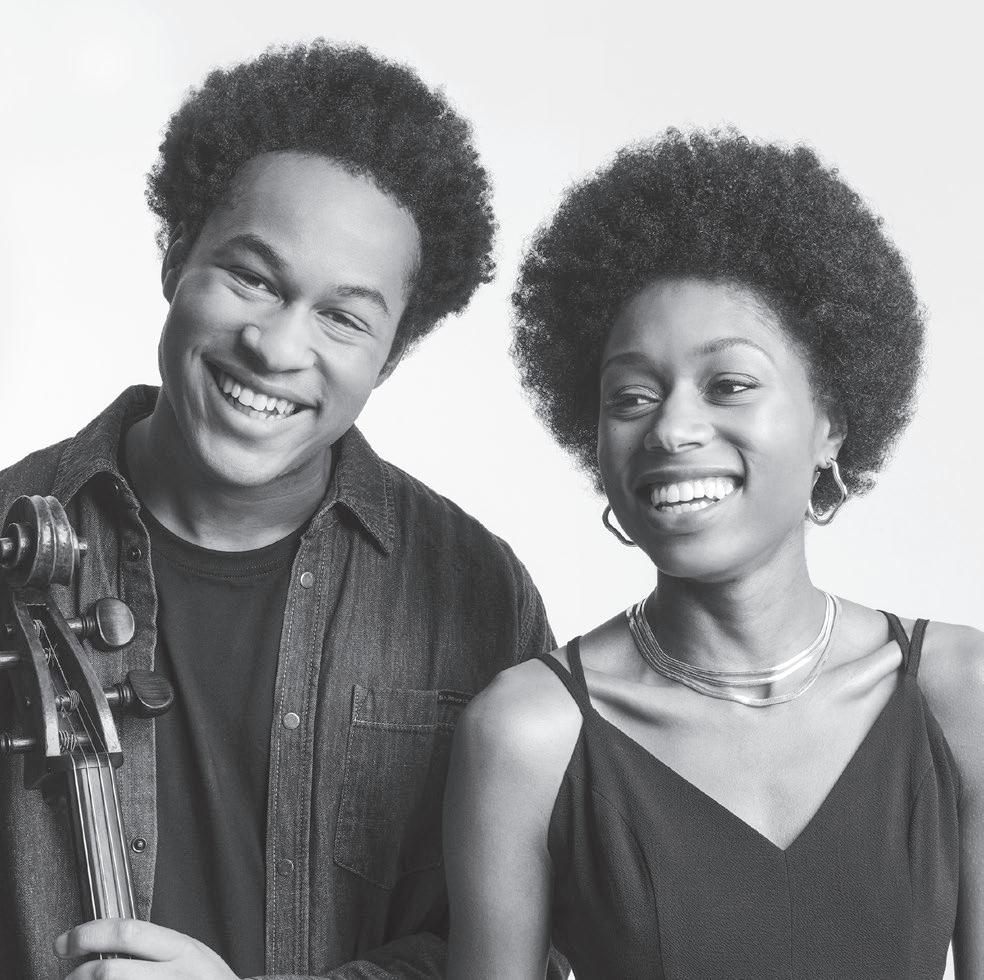
Felix Mendelssohn:
Cello Sonata No.1 in B-flat major, op. 45
Allegro vivace
Andante
Allegro assai
Gabriel Fauré: Cello Sonata No. 1 in D minor, op. 109
Allegro
Andante
Finale: Allegro commodo
- Intermission -
Natalie Klouda: Tor Mordôn
Flowing and expressive
Con fuoco
Francis Poulenc: Sonata for Cello and Piano, FP 143
Allegro – Tempo di Marcia
Cavatine
Ballabile
Finale
Thu, May 29 / 7 PM / Campbell Hall
Great Performances Suite Sponsors:
G.A. Fowler Family Foundation
The Shanbrom Family Foundation
Presented in association with UCSB Department of Music
Felix Mendelssohn (1809-1847):
Cello Sonata No. 1 in B-flat major, op. 45
Unlike the pieces on the program’s first half, Mendelssohn’s First Cello Sonata sprang from a period of deep happiness. He had recently become music director of the Leipzig Gewandhaus Orchestra in 1835 after a frustrating tenure in Düsseldorf. Under his direction, the orchestra became one of Europe’s most prestigious with Mendelssohn becoming Germany’s preeminent musician. Within a year of their marriage, he and his wife Cécile welcomed their first child, Karl Wolfgang Paul, in 1838. “It is too lovely and delightful to see a wee little fellow like that, who has brought his mother’s blue eyes and snub nose into the world with him, and knows her so well that he laughs to her whenever she comes into the room,” he wrote in April, two months after Karl’s birth. “They both look so happy – I don’t know what to do with myself for joy.”
Later that year, Mendelssohn completed the Cello Sonata for his brother Paul, an amateur cellist and godfather to Karl. Mendelssohn wrote the sonata in an age known as the Biedermeier period, the decades-long peace between the end of the Napoleonic Wars and the Revolutions of 1848. Politically, the era looked inward toward the domestic sphere, particularly among the burgeoning middle class. With time and money to spare, many in the middle class began playing music at home; composers were happy to provide them with pieces written for the limited skills of the cultivated amateur.
Yet from the first bar, Mendelssohn adds freshness and inventiveness to the standard three-part sonata form. The sonata opens with a dissonant tritone in unison before introducing a charming, symmetrical melody. This tranquility gives way to stormier passages replete with driving triplets. The second section opens with the players engaging in a call-and-response with a descending, minor-key melody. Later, a cello trill signals the start of the third and final section, which repeats the opening themes before concluding with a fiery coda.
In the middle movement, Mendelssohn contrasts playful, minor-key outer sections with a songlike inner section in G major. The dotted figure that pervades the outer sections also appears in the middle, uniting the two sections despite their differences in mood. The finale’s breezy principal cello theme and playful piano accompaniment recall the beginning of the first movement. The players banter cheerfully before winding down in a soft, contented coda.
Cello Sonata No. 1 in D minor, op. 109
Fauré composed his first Cello Sonata in the summer of 1917. Later that year, a precocious 18-year-old composer named Francis Poulenc made his public debut with the farcical Rapsodie nègre; when the baritone soloist got cold feet, Poulenc had to sing the role. Fauré maintained a productive schedule despite his physical infirmity and wartime anxieties – his youngest son and Maurice Ravel, one of his favorite pupils, served on the front –and completed numerous works while participating in charity performances and leading the prestigious Conservatoire de Paris. In his final decade, he completed over a dozen chamber works including two cello sonatas, a violin sonata and his final work, the String Quartet.
At the same time, Fauré was attempting to keep secret a years-long decline in his hearing. In a 1903 letter to his wife Marie, his first written acknowledgment of his deafness, he despaired, “There are passages of music and isolated timbres which I simply can’t hear at all! Of mine as well as of other people’s… I feel only this awful cloak of misery and despondency on my shoulders.” To his ears, lower and higher ranges became increasingly out of tune, and combinations of instruments were “pain and torture.” On his deathbed, he refused a performance of his string quartet, exclaiming, “No! No! I would only hear a terrible noise!”
These auditory disturbances manifest themselves in the Cello Sonata. Written for only two instruments, the work avoids the cacophonous din that Fauré dreaded
in larger ensembles and both instruments largely stay within their mid-ranges. Even the vehement, sometimes somber spirit of the first movement has been attributed to Fauré’s hearing difficulties: his son opined, “One has the feeling that the strings sound somewhat lower than he intended, that they grate and run out of energy.”
Fauré contrasts this with an intimate, lyrical second movement. The cello alternates between a dotted, leaping theme akin to a baroque dance and a second theme decorated with bell-like echoes. The music slowly rises to a climax and then gradually subsides, ending in a peaceful major key.
Fauré often used canon in the finales of his chamber works; here, the piano echoes the cello’s graceful opening theme. In the war’s brutal final months, Fauré wrote, “Whether it’s nerves, or exhaustion from too little sleep, my heart and soul are on edge!” This music belies the uneasy atmosphere of war-torn Paris yet the Sonata’s triumphant ending proved auspicious; it premiered in Paris exactly one year and a day before the signing of the Armistice.
Natalie Klouda (b. 1984): Tor Mordôn Program note by composer Natalie Klouda
This work has two contrasting movements, and the name and inspiration behind it pay homage to Isata and Sheku’s Antiguan and Welsh heritage.
In preparing to write this work, I explored the folklore, myths and legends of Eryri/Snowdonia (the Mabinogion) plus Antiguan and Caribbean folklore. I was struck by the powerful oral storytelling traditions of both places and how human experience has been passed down and deeply enhanced the audience’s connection to the landscapes and to peoples of long ago.
Tor Mordôn literally means “sea mount of light.” The name is derived from Brythonic languages and connects both Eryri and Antigua. The name combines a couple of elements: the sense of enlightenment that can be felt in the presence of the highest peaks as well as the inspiration from the seas and oceans that link continents and serve as the birthplace for those same peaks. I chose the ancient Brythonic languages to highlight the vast swathes of time that disappear through storytelling and the wonder that people feel in witnessing these landscapes and stories millennia apart.
The first movement has a contemplative start, exploring my journey in discovering various mythical characters and the human connection of experiencing the vastness
of time and presence of mountains.
The second movement draws on the eccentric elements of the folktales in addition to the more sinister drama and power of dramatic landscapes, which takes center stage right from the start. This work is dedicated to Isata and Sheku’s grandfather, Arnold Mason. He himself played the violin growing up in Antigua and it was with interest and a quiet dedication that he listened to Isata and Sheku’s rehearsals and practice at their home in Nottingham during his visits.
In June 1940, Poulenc was briefly enlisted in the French army, serving with a regiment of farmers in an antiaircraft unit. After the signing of the armistice later that month (Hitler deliberately chose the site of the 1918 armistice that signaled the end of World War I with Germany’s surrender), he was demobilized and returned to southern France, where he began sketching the Cello Sonata. He spent most of the war living in Noizay, a hamlet three hours south of Paris, where he composed unencumbered by the distractions of the big city. Though revolted by Nazism and dismayed by the loss of Jews in French musical life (including his friend Darius Milhaud, who fled to the United States following France’s surrender), as an openly gay man Poulenc understood the dangers of sticking out his neck: in 1943 his boyfriend was nearly arrested and deported.
However, some of his pieces from the war years contain veiled messages of defiance. A movement from the ballet Les Animaux modèles, begun alongside the Cello Sonata, quotes the World War I resistance song, “No, no, you will not have our Alsace-Lorraine.” In the collection Chansons villageoises, Poulenc set the words “the damned race that feels no pity” and warned that the “worm will turn.” Though Nazi officers attended its premiere, they ignored or failed to understand the pointed rebukes. Poulenc’s most blatantly pro-Resistance work, the a cappella cantata Figure humaine, ends with a thundering cry of “Liberté!,” though it would not premiere in France until 1947. After the war, Poulenc turned to the task of reinvigorating his career. These productive years saw the premiere of his first opera, the surrealist comedy Les Mamelles de Tirésias, as well as international recital tours with baritone Pierre Bernac and a tour with cellist Pierre Fournier, which spurred Poulenc to complete the Cello Sonata.
Despite the musical upheavals of the twentieth century, Poulenc continued composing in a predominantly tonal
idiom. He eschewed the avant-garde innovations of twelve-tone serialism and electronic music, referring to Arnold Schoenberg’s work as “nothing more than a desert, stone soup, ersatz music or poetic vitamins.” Poulenc avoids such “vitamins” in the Cello Sonata. Lush, arching cello lines give way to winking pizzicato interruptions and rollicking piano interludes in the first movement. The second movement, a slow and tender Cavatine, remains one of Poulenc’s most popular compositions. Its serene outer sections, imbued with the quiet intensity of prayer, evoke half of the famous description of the devoutly Catholic Poulenc as “the monk and the hoodlum.”
“Ballabile” refers to a dance performed by a corps de ballet. In this animated dance, the cello frequently alternates between plucking and bowing to delightfully disorienting effect. The finale’s pompous, recitative-like opening gives way to eerie, trilled harmonics, yet the prevailing mood is one of carefree nonchalance.
Program notes © Andrew McIntyre, 2025
Pianist Isata Kanneh-Mason offers eclectic and interesting recital programmes with a repertoire encompassing Joseph Haydn and Wolfgang Amadeus Mozart, Fanny Mendelssohn and Clara Schumann, and Frédéric Chopin and Johannes Brahms to George Gershwin and beyond. In concerto, she is equally at home in Felix Mendelssohn and Clara Schumann as in Sergei Prokofiev and Ernst von Dohnányi. She is in high demand from concert halls and orchestras worldwide – following her phenomenally successful concerto debut at the BBC Proms in 2023, she was invited to open the festival in July 2024 with the BBC Symphony and conductor Elim Chan, a performance which resulted in stellar reviews in the mainstream press. Isata appears as concerto soloist with the European Union Youth Orchestra and Iván Fischer in summer 2024, performing Dohnányi’s Variations on a Nursery Tune at Carnegie Hall, New York, the Grafenegg Festival and Bolzano Festival Bozen.
Highlights of the 2024-2025 season include Beethoven’s Fourth Piano Concerto at the Junge Deutsche Philharmonie’s FREISPIEL festival and at the Ulster Orchestra’s season opening concert and Prokofiev’s Third Concerto with the Chineke! Orchestra on tour at Hamburg’s Elbphilharmonie, the Berliner Philharmonie, Brussels’s BOZAR and London’s Queen Elizabeth Hall. Solo recital appearances include the Lucerne Festival, Piano aux Jacobins in Toulouse, the Schumann-Haus
in Düsseldorf, PHIL Haarlem in the Netherlands and on tour across the U.S. In concerto performance, Isata appears with the London, Bergen, Bremen and Duisburg Philharmonic Orchestras, the North Carolina Symphony and on tour with the Staatskapelle Weimar and the Residentie Orkest. Isata continues her longstanding duo collaboration with her cellist brother, Sheku, with performances in the U.K. and on tour across Europe, the U.S. and Canada. She will also give performances with bass-baritone Gerald Finley in the Czech Republic and Germany. In 2023-24, Isata gave performances with the Philadelphia Orchestra, Ottawa’s National Arts Centre Orchestra, Beijin’s NCPA Orchestra, Royal Philharmonic Orchestra, Cleveland Orchestra, Toronto Symphony and Stockholm Philharmonic Orchestra among others. She appeared in solo recital at the Beethoven Bonn and Rheingau Musik festivals and venues around the globe such as London’s Wigmore Hall, New York’s Carnegie Hall, Boston’s Jordan Hall and Konzerthaus Dortmund. Isata is a Decca Classics artist and has recorded four solo albums for the label – Romance (2019), Summertime (2021), Childhood Tales (2023) and Mendelssohn (2024).
Her latest release presents music from two Mendelssohn siblings, including the glittering First Piano Concerto by Felix and the long-lost Easter Sonata by his exceptionally talented but overlooked elder sister Fanny, alongside transcriptions of some of Felix’s most famous music by Sergei Rachmaninoff and Franz Liszt. Isata has received many awards, including the coveted Leonard Bernstein Award from the Schleswig-Holstein Festival and an Opus Klassik award for Best Young Artist. She also enjoys composing and arranging and has released two albums of her favourite works for intermediate and advanced piano students through ABRSM Publishing in 2023.
Cellist Sheku Kanneh-Mason’s mission is to make music accessible to all, whether that’s performing for children in a school hall, at an underground club or in the world’s leading concert venues. Highlights of the 2024-2025 season include the Konzerthaus Berlin as Artist-inResidence, Lucerne Festival 2024 as Artiste Étoile, Czech Philharmonic in Prague and on tour with both Jakub Hrůša and Semyon Bychkov, Tonhalle-Orchester Zürich with Paavo Järvi, WDR Symphony Cologne with Cristian Măcelaru, Orchestre National de Lyon with Leonard Slatkin, Sinfonia of London with John Wilson on tour in the U.K., SWR Symphonieorchester Stuttgart with Christoph Eschenbach, Camerata Salzburg, Pittsburgh Symphony with Manfred Honeck, New World Symphony
with Stéphane Denève, Philadelphia Orchestra with Yannick Nézet-Séguin and City of Birmingham Symphony with Kazuki Yamada.
With his pianist sister, Isata, he made his duo recital debut at New York’s Carnegie Hall Stern Auditorium in a programme featuring a newly commissioned piece by Natalie Klouda. The pair also appeared on tour in Bordeaux, Rome, Cincinnati, Toronto, Philadelphia, Dublin, Munich, Berlin, Antwerp, Haarlem and London and at the Rheingau Festival. Sheku also appears with duo partners guitarist Plinio Fernandes and jazz pianist Harry Baker.
Since his debut in 2017, Sheku has performed every summer at the BBC Proms, including as soloist at the 2023 Last Night of the Proms with the BBC Symphony Orchestra and Marin Alsop. In 2024, his family-friendly Proms appearances with the Fantasia Orchestra were designed to introduce orchestral classical music to a new generation of music lovers. Sheku also returns to Antigua, where he has family connections, as an ambassador for the Antigua and Barbuda Youth Symphony Orchestra.
A Decca Classics recording artist, Sheku appears on the May 2024 recording of Beethoven’s Triple Concerto alongside Nicola Benedetti, Benjamin Grosvenor and the Philharmonia Orchestra conducted by SanttuMatias Rouvali. His 2022 album, Song, showcases his innately lyrical playing in a wide and varied range of arrangements and collaborations. Sheku’s 2020 album Elgar reached No. 8 in the overall Official U.K. Album Chart, making him the first ever cellist to reach the U.K. Top 10. Sheet music collections of his performance repertoire along with his own arrangements and compositions are published by Faber.
Sheku is a graduate of London’s Royal Academy of Music where he studied with Hannah Roberts and was appointed as the Academy’s first Menuhin Visiting Professor of Performance Mentoring in May 2022. In 2024, he accepted the role as patron of U.K. Music Masters and remains an ambassador for both Juvenile Diabetes Research Foundation and Future Talent. Sheku was appointed a Member of the Most Excellent Order of the British Empire (MBE) in the 2020 New Year’s Honors List. After winning the BBC Young Musician competition in 2016, Sheku’s performance at the wedding of the Duke and Duchess of Sussex at Windsor Castle in 2018 was watched by two billion people worldwide. He plays a Matteo Goffriller cello from 1700 which is on indefinite loan to him.
Special Thanks




Paseo Nuevo Cinemas, Theater #3

$10 per film (except The House/This Is Not
Saturday, April 26




Curated by Bruce Heavin and Caitlin O’Hara

Sunday, April 27
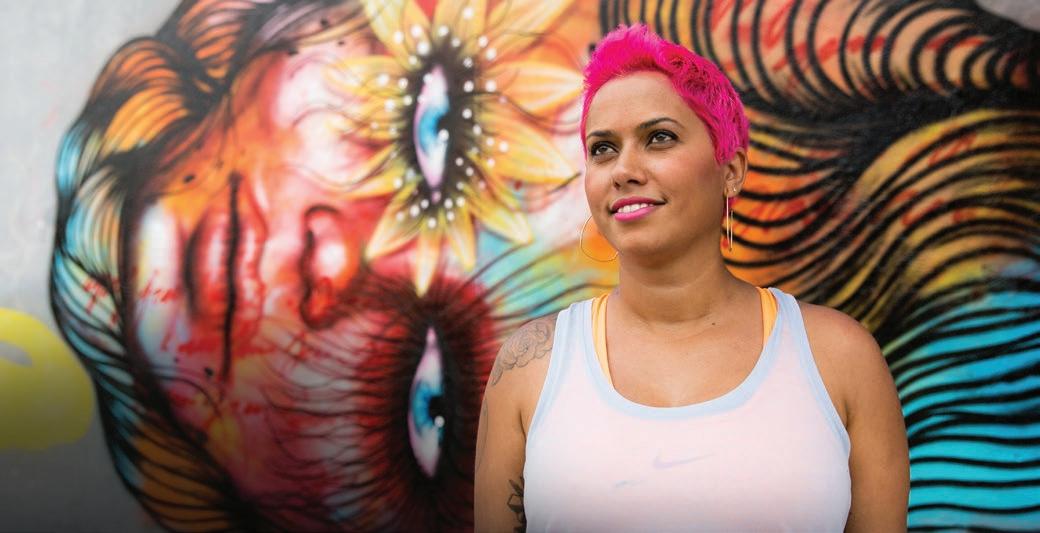


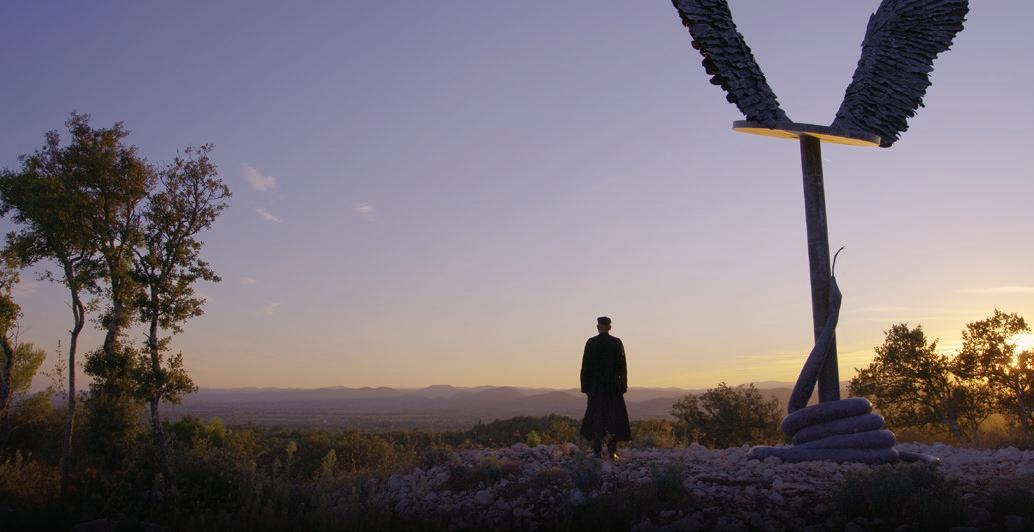

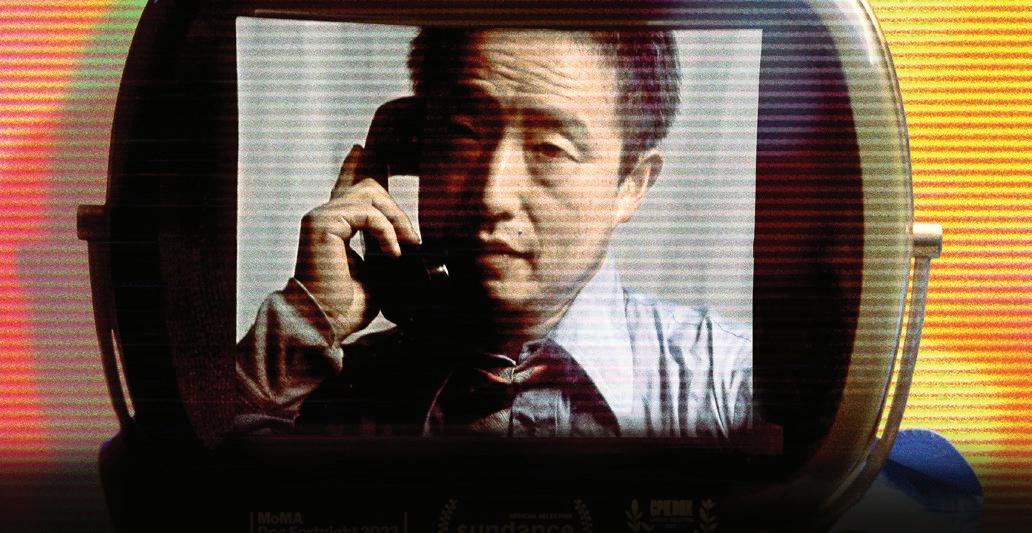


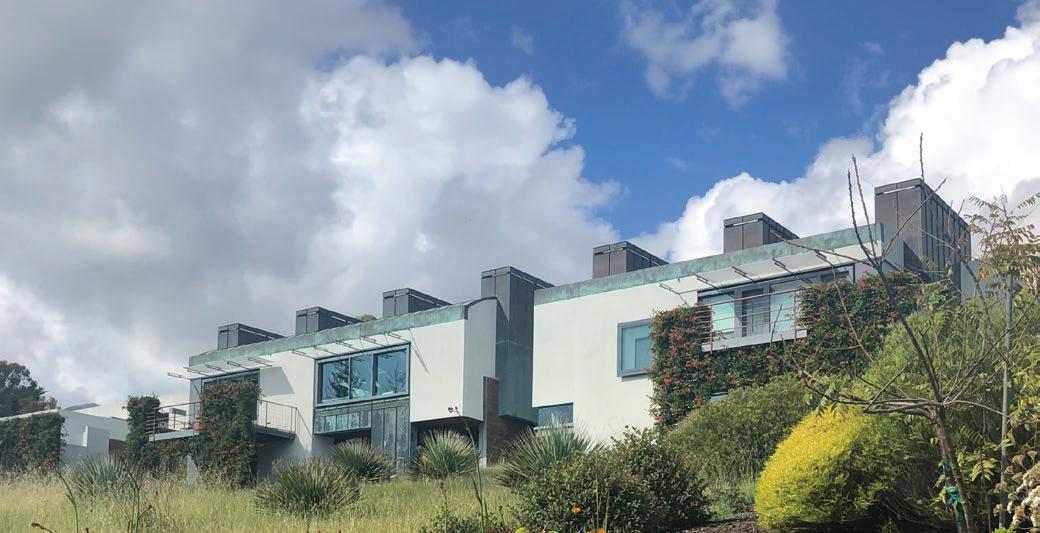

*Screening of This Is Not a House will be followed by a panel discussion with filmmaker Morgan Neville, homeowner Bruce Heavin and architect Robin Donaldson, moderated by UCSB AD&A Museum curator Silvia Perea


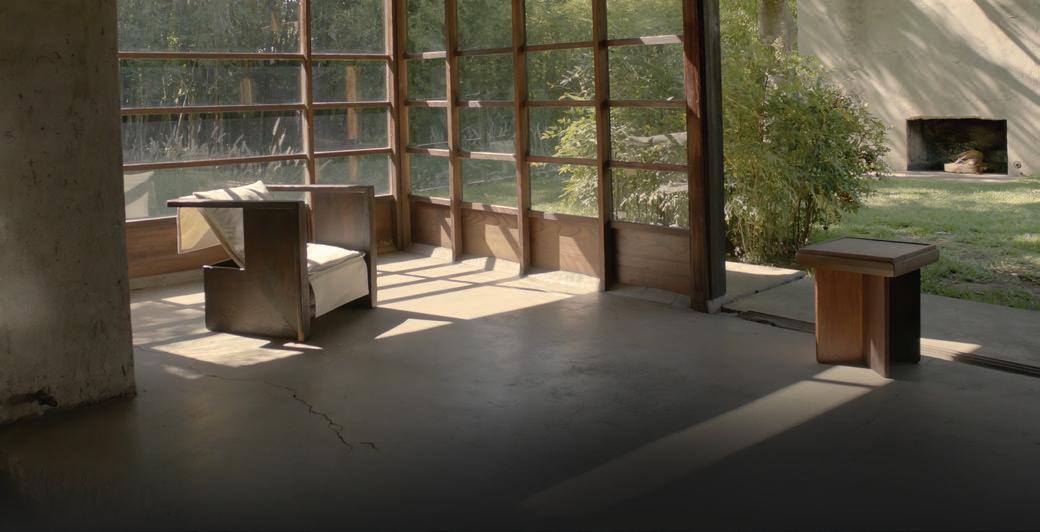



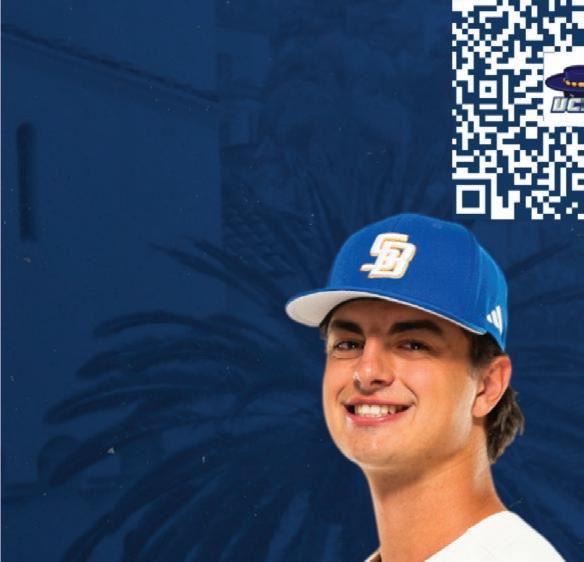

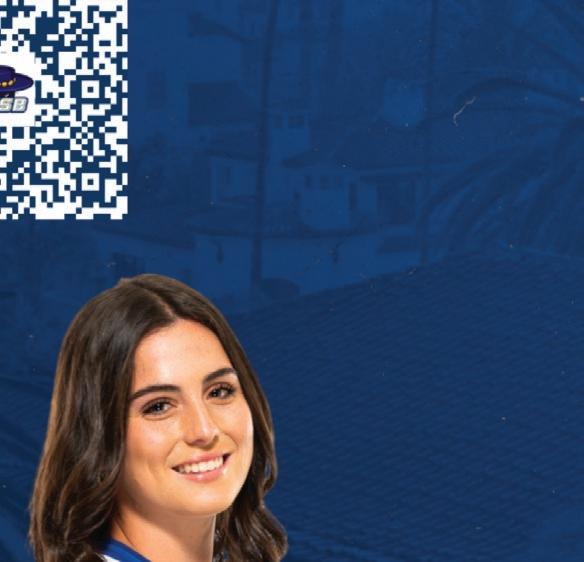


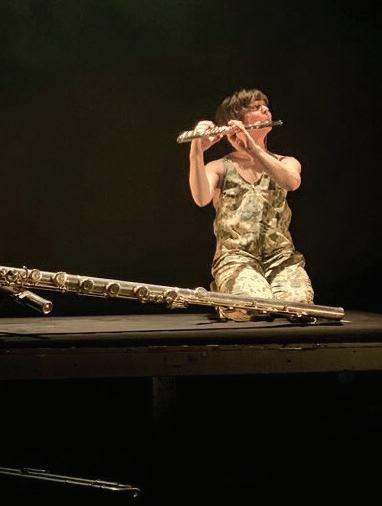
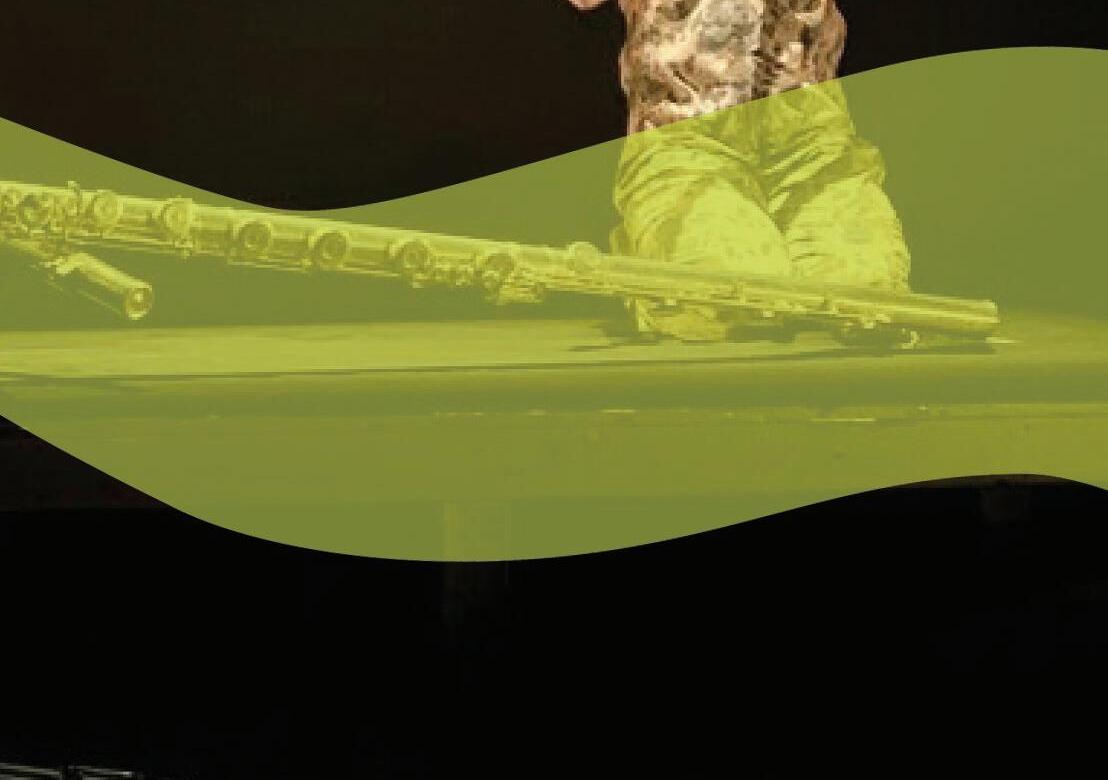














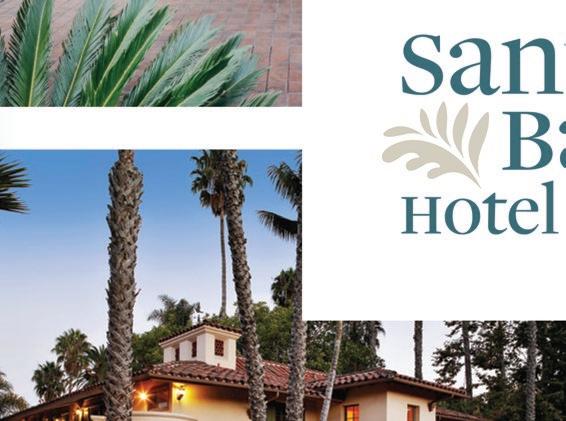


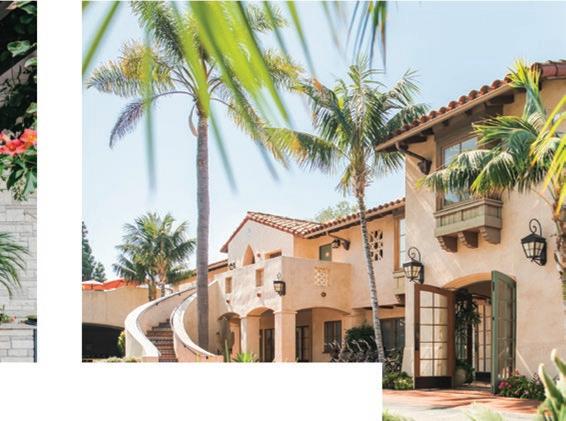
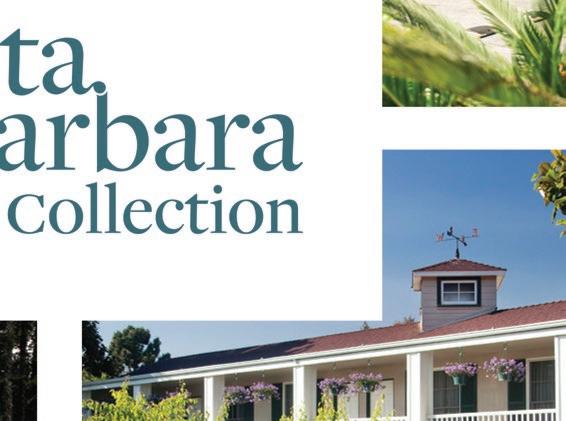



























The SBCC Promise has provided more than 7,000 local high school graduates with the opportunity to pursue their dreams at Santa Barbara City College. Launched in 2016, the SBCC Promise covers all required fees, books, and supplies for two years, and is funded entirely by private donations.
The SBCC Foundation provides approximately $5 million annually for the SBCC Promise, student success programs, scholarships, emergency grants, and more.
Your gift makes it possible.

sbccfoundation.org
sbccfoundation.org
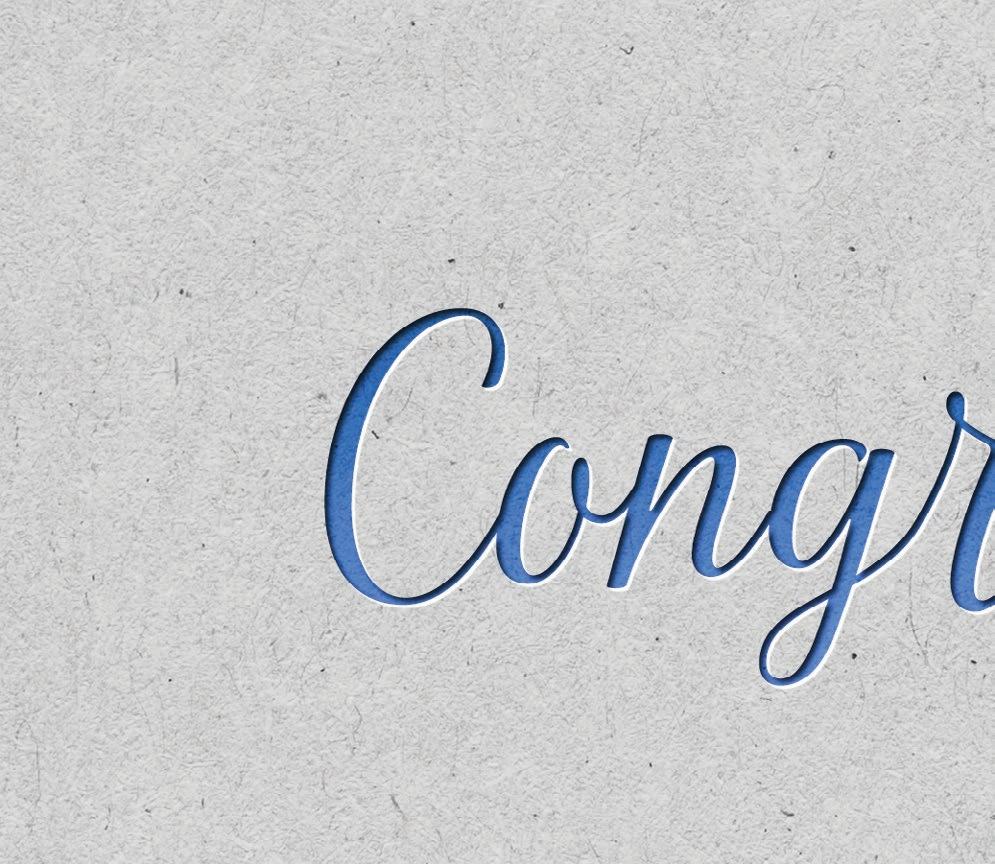

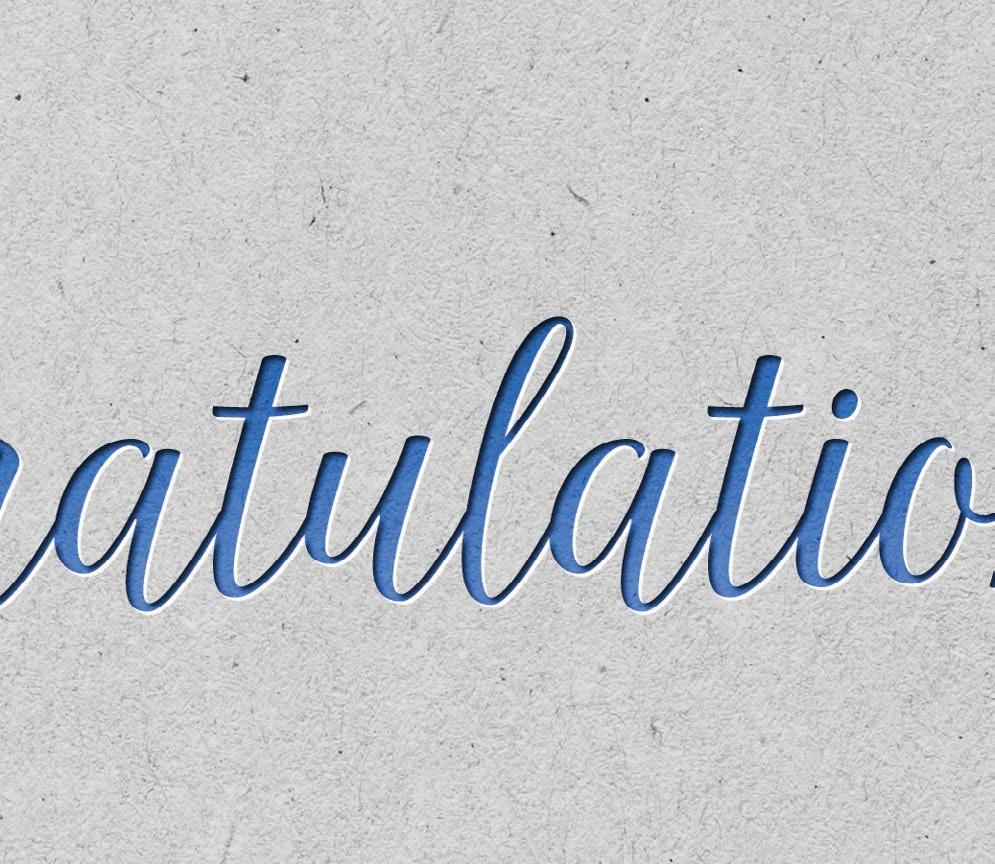


Congratulations to Sara Miller McCune and Sage on 60 years of publishing true scholarship, original ideas and research in service of the academic community, education and public policy.
60 YEARS





